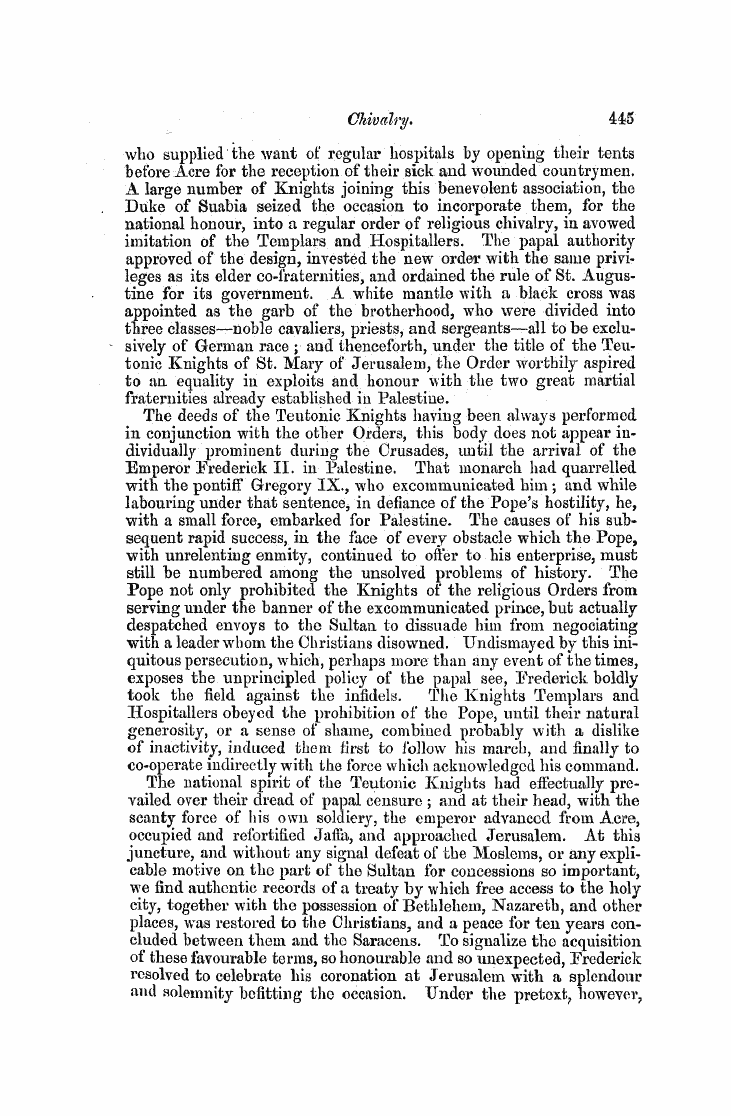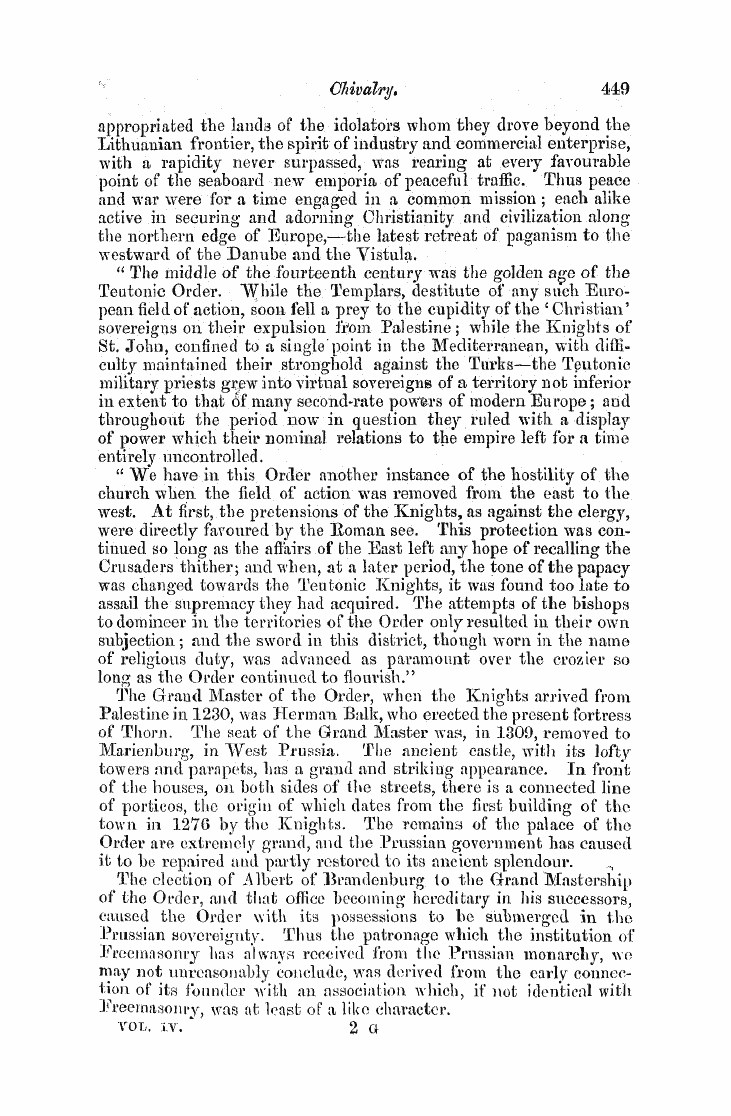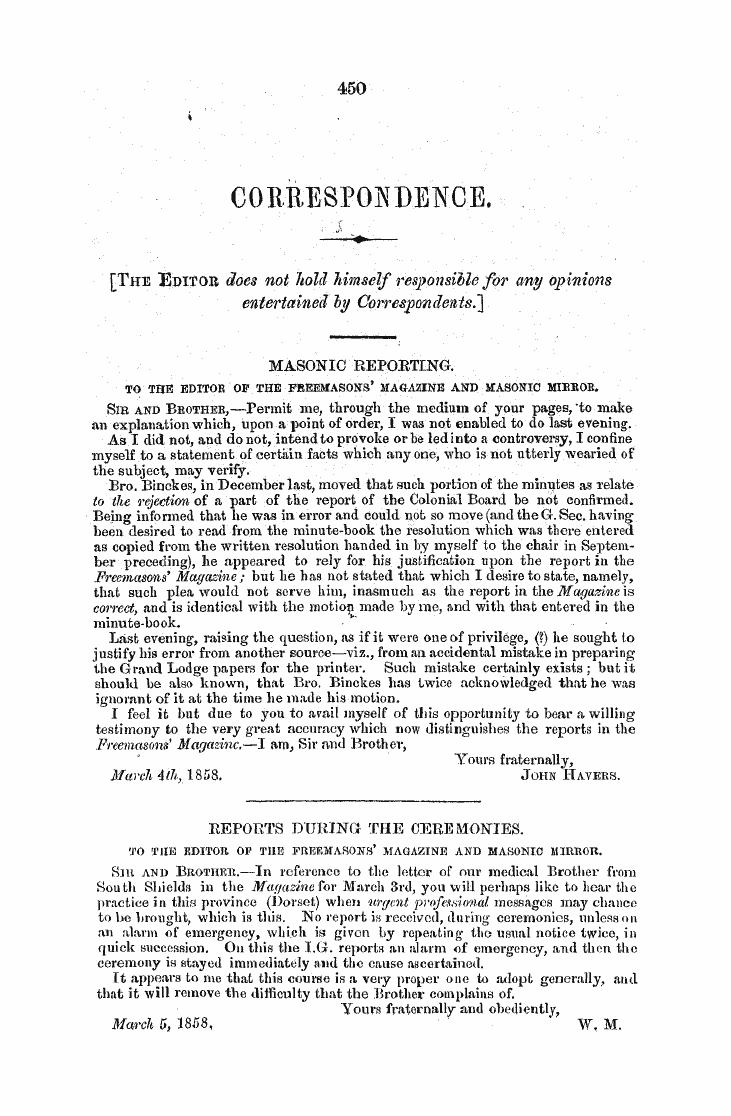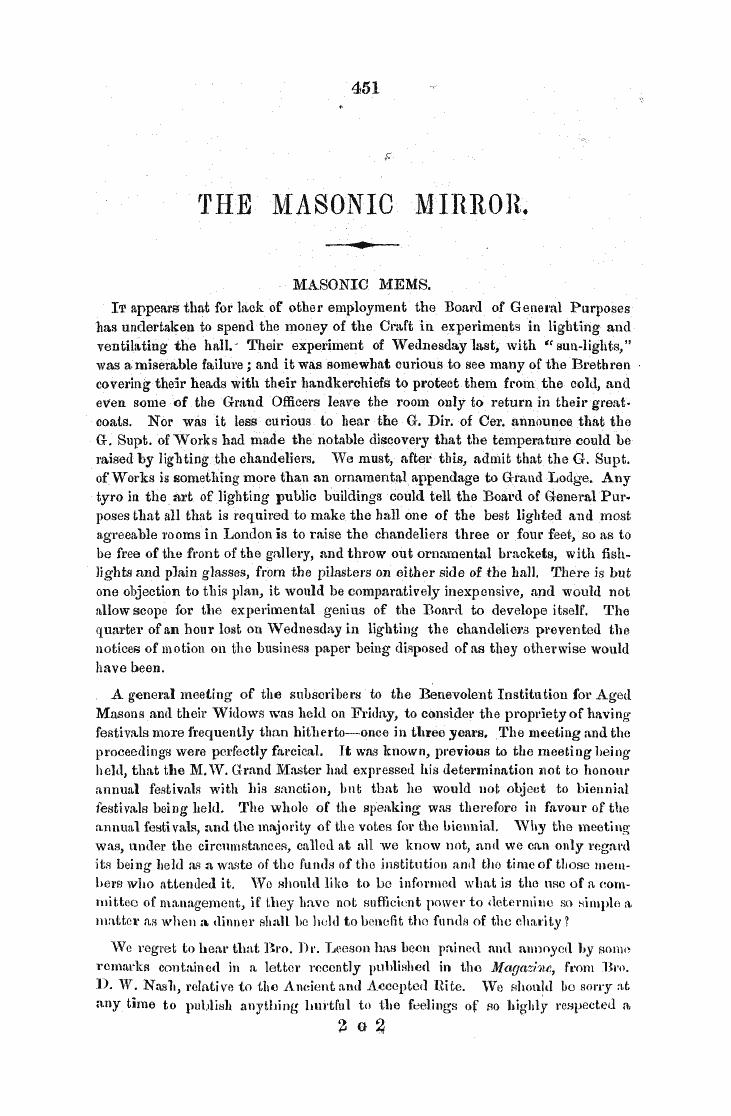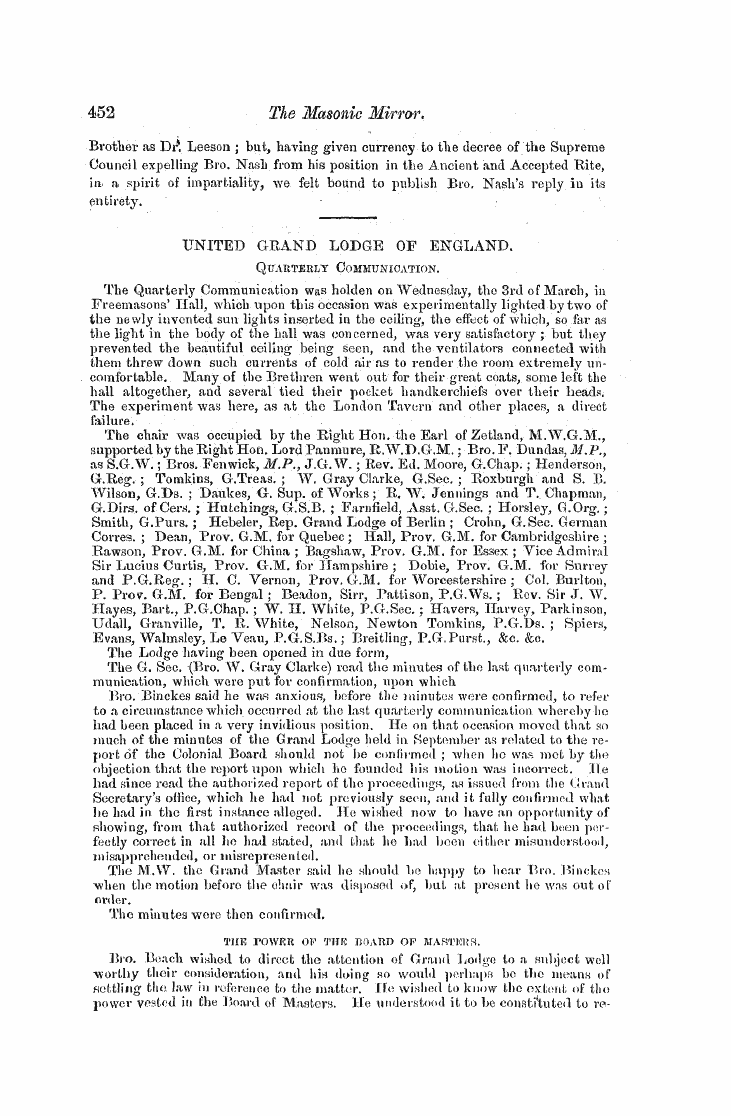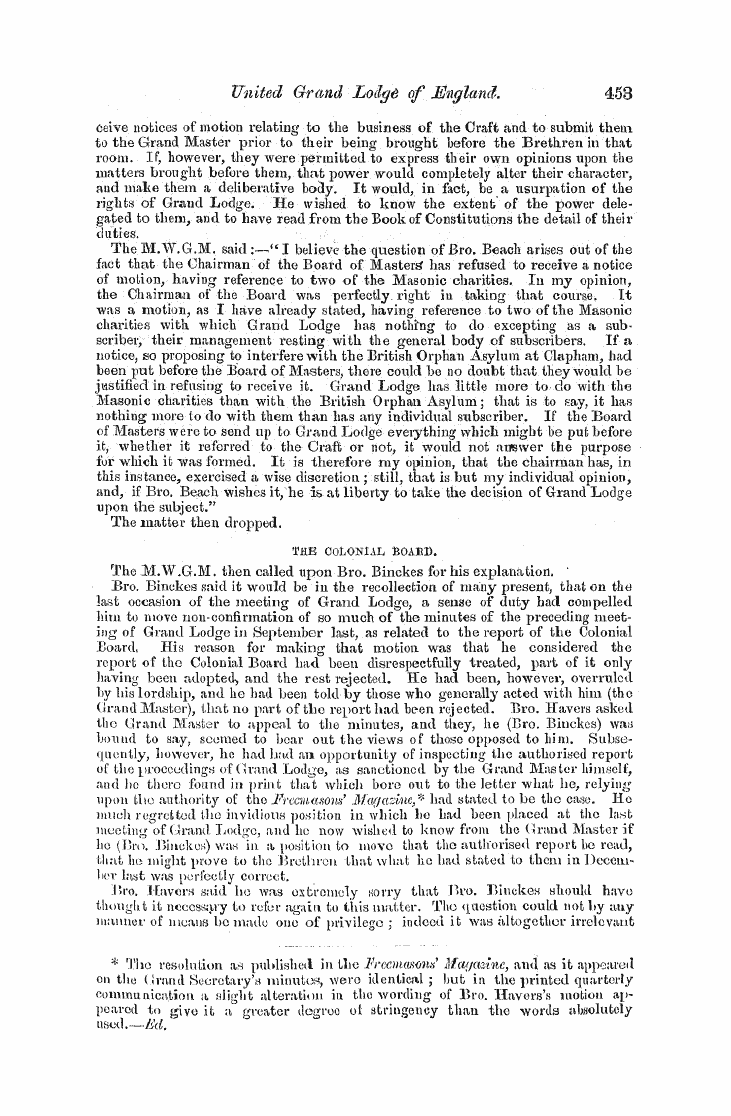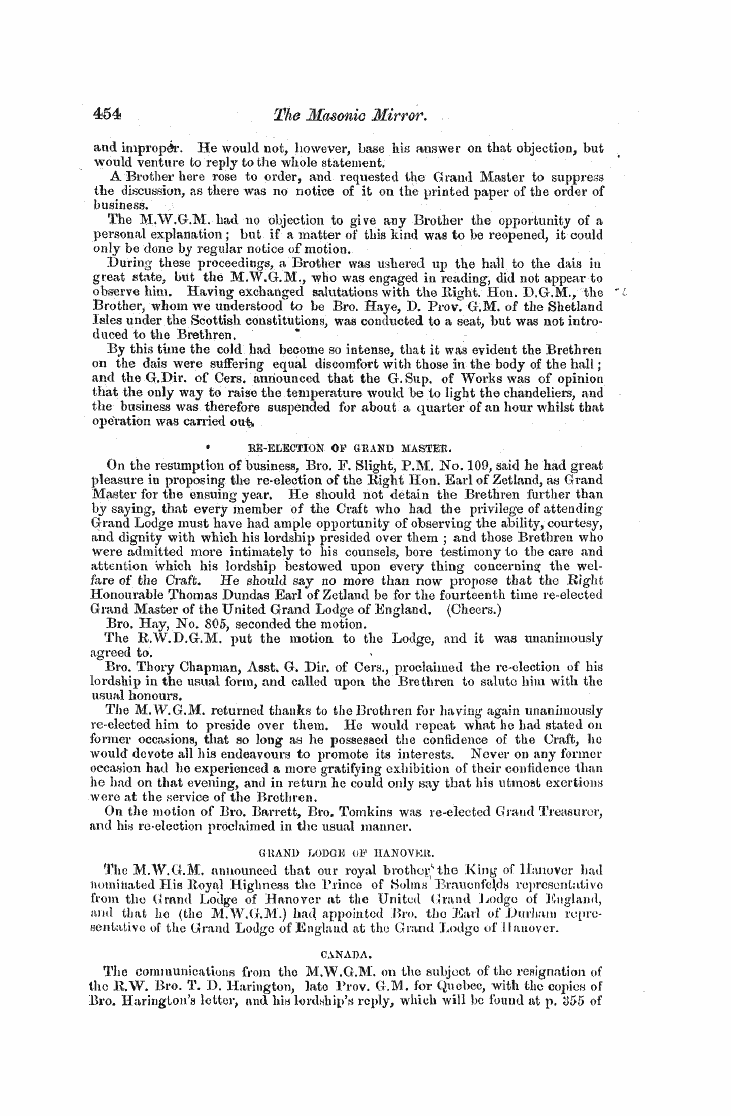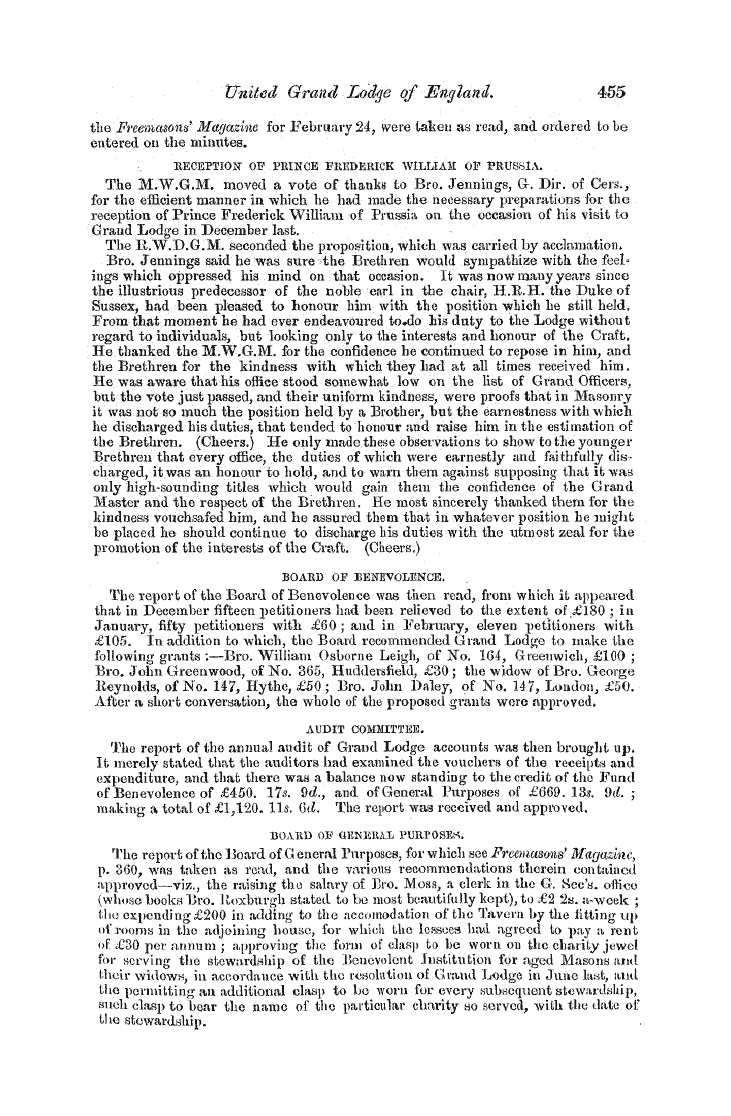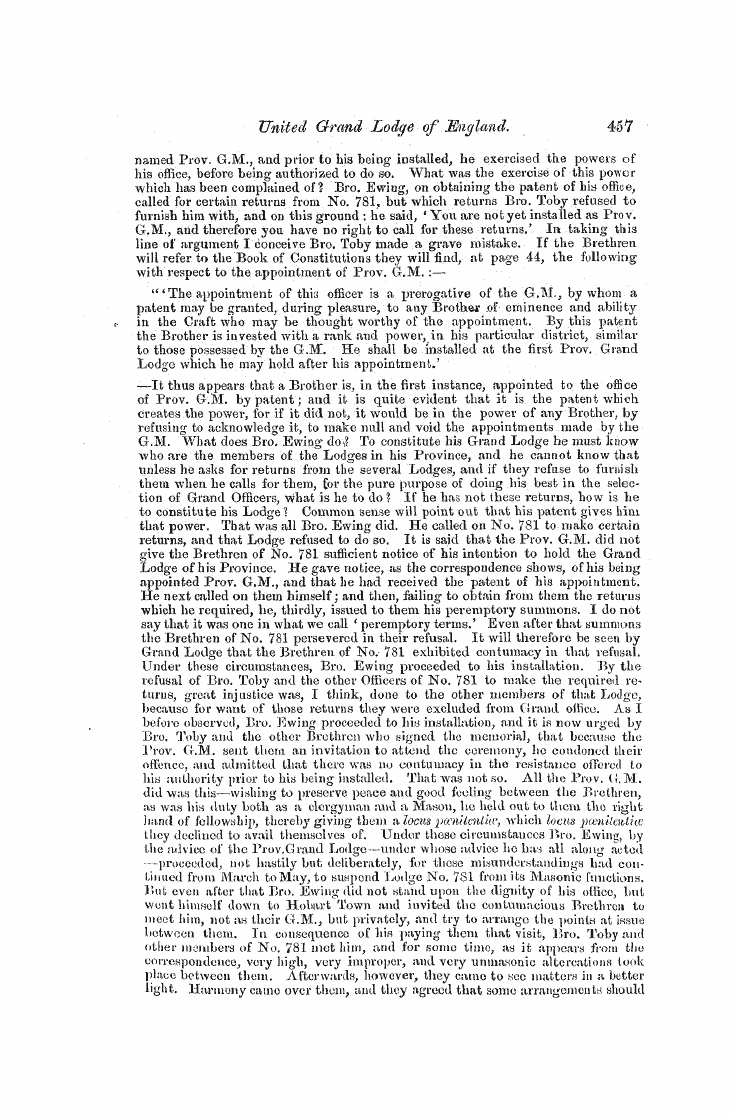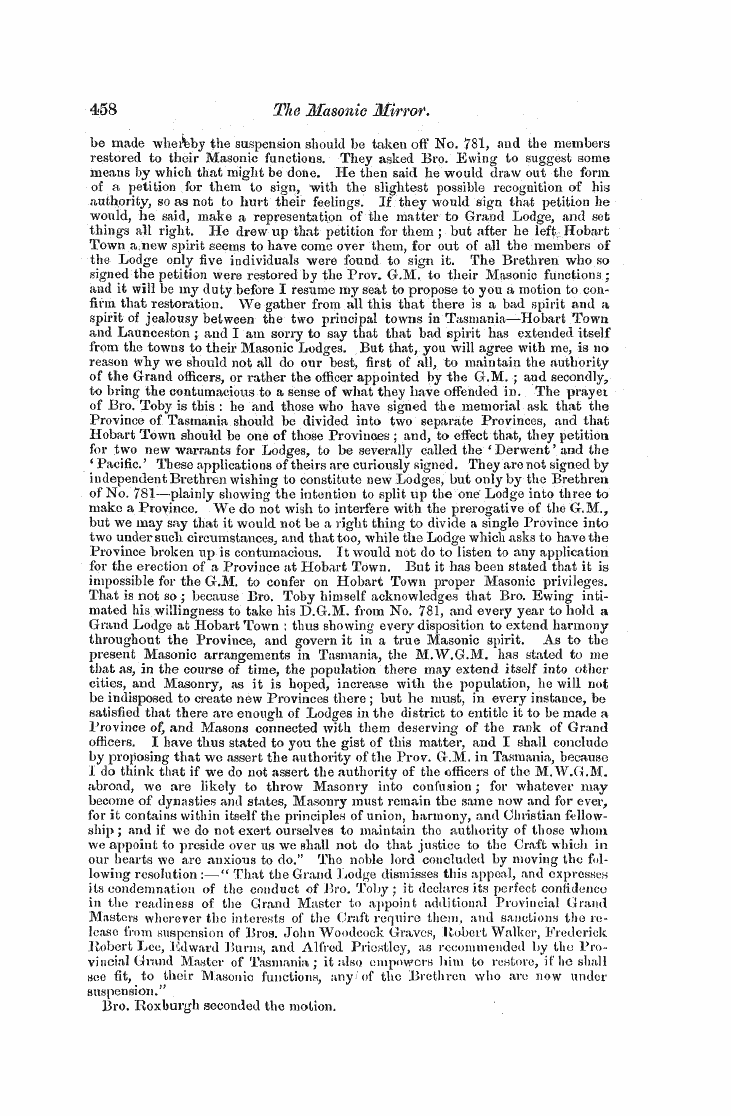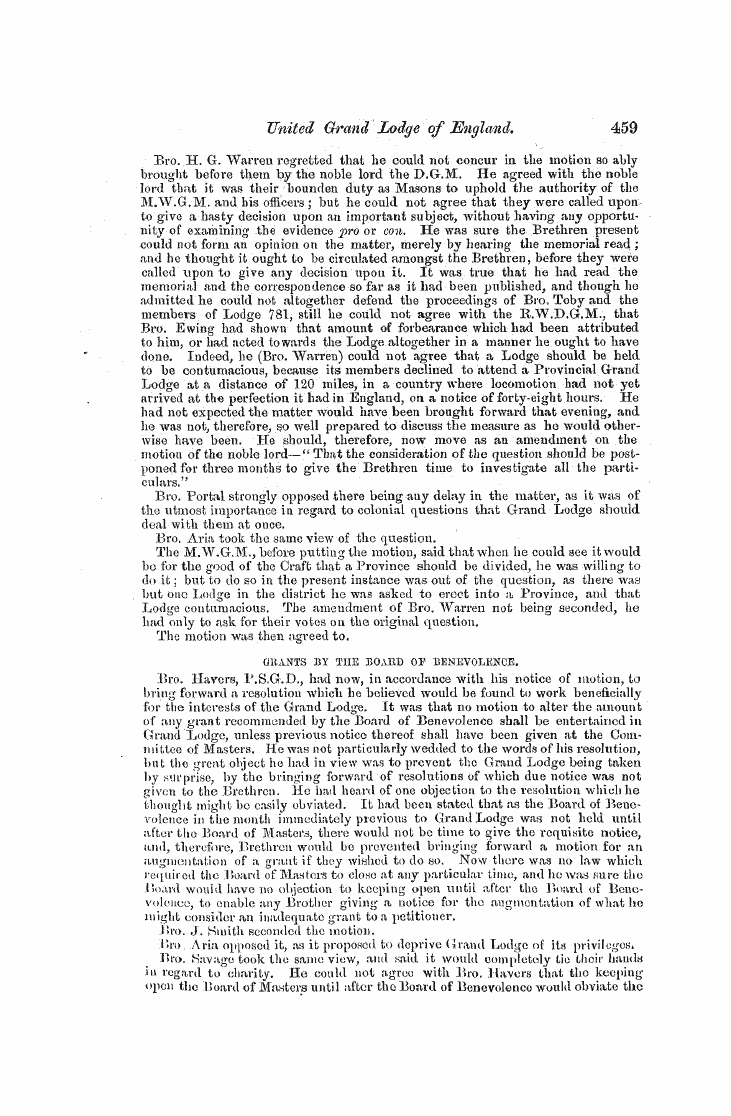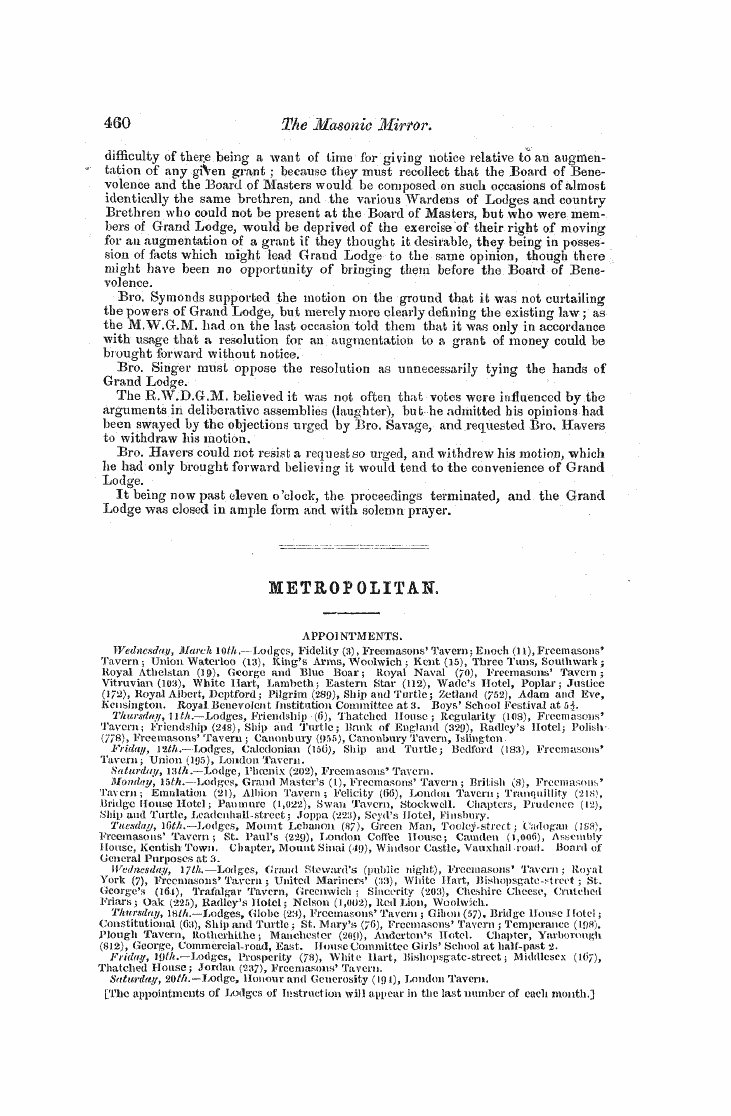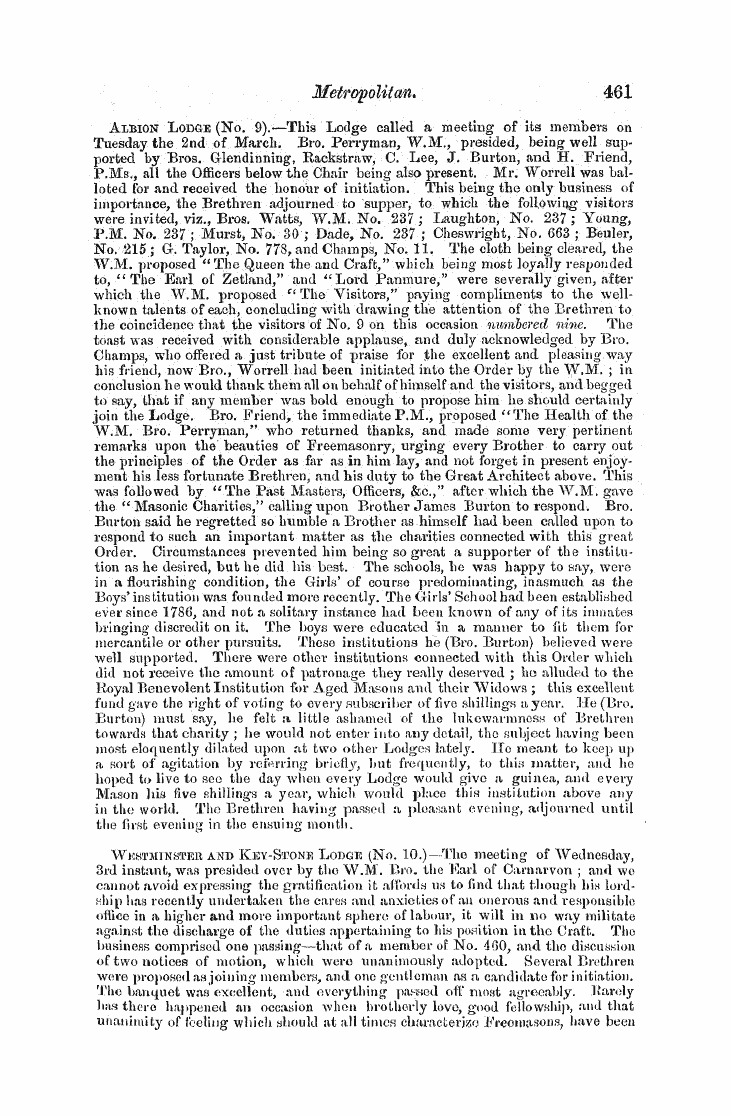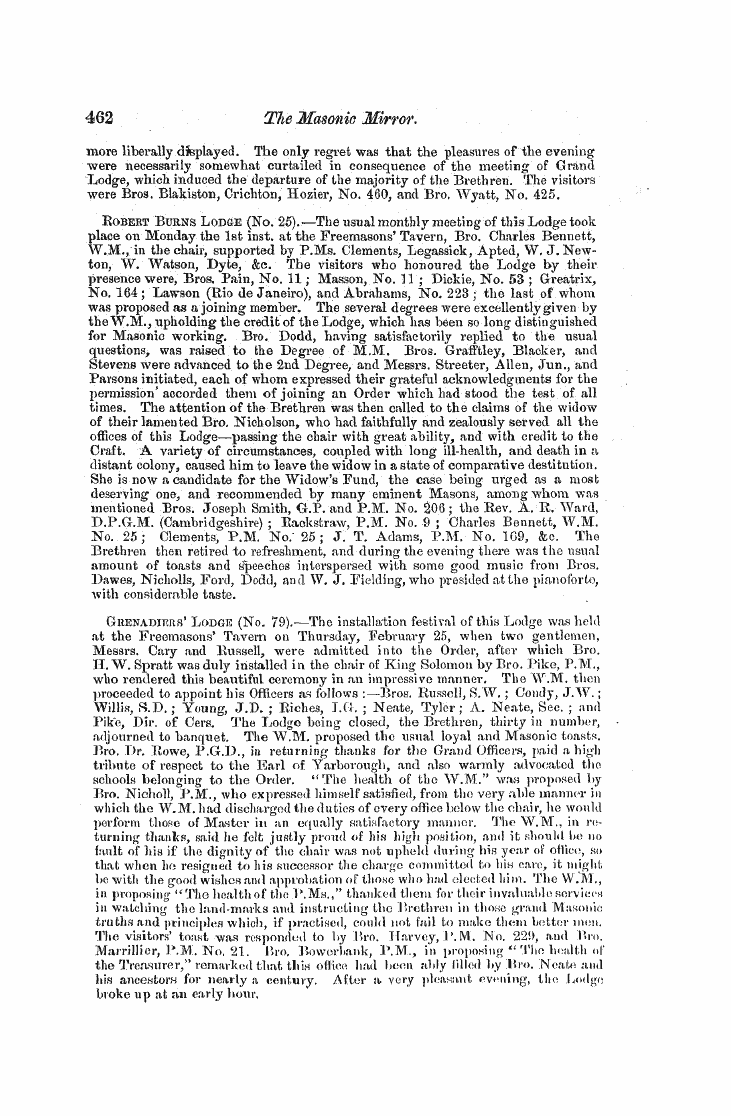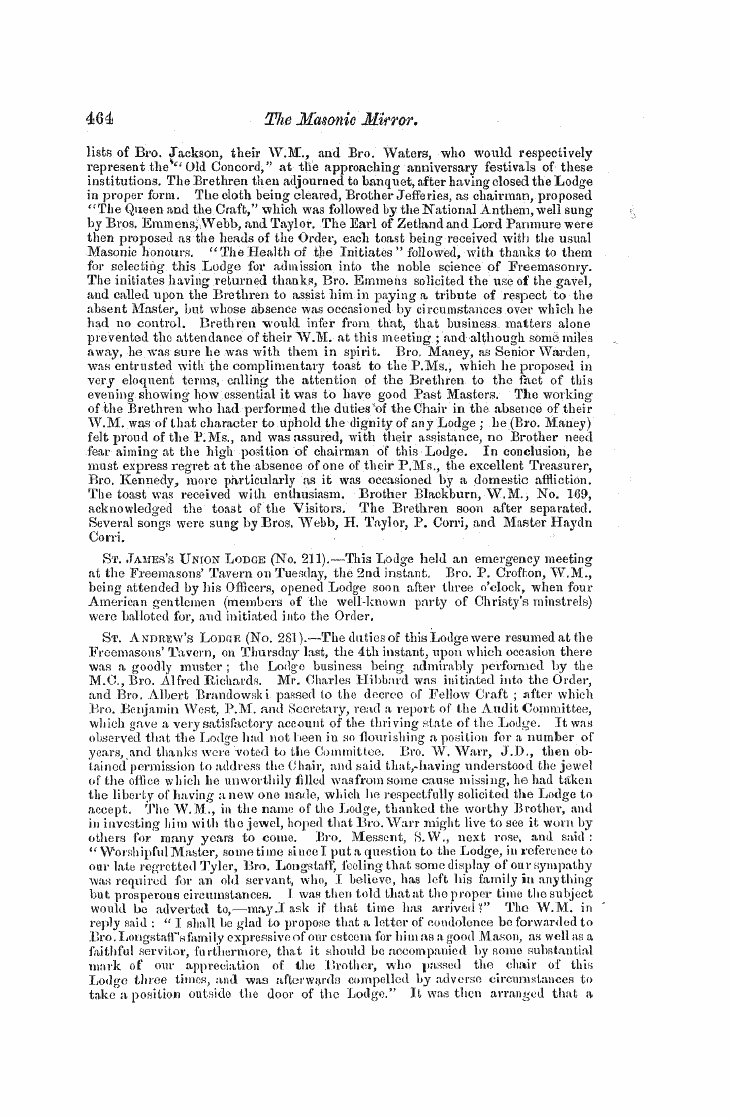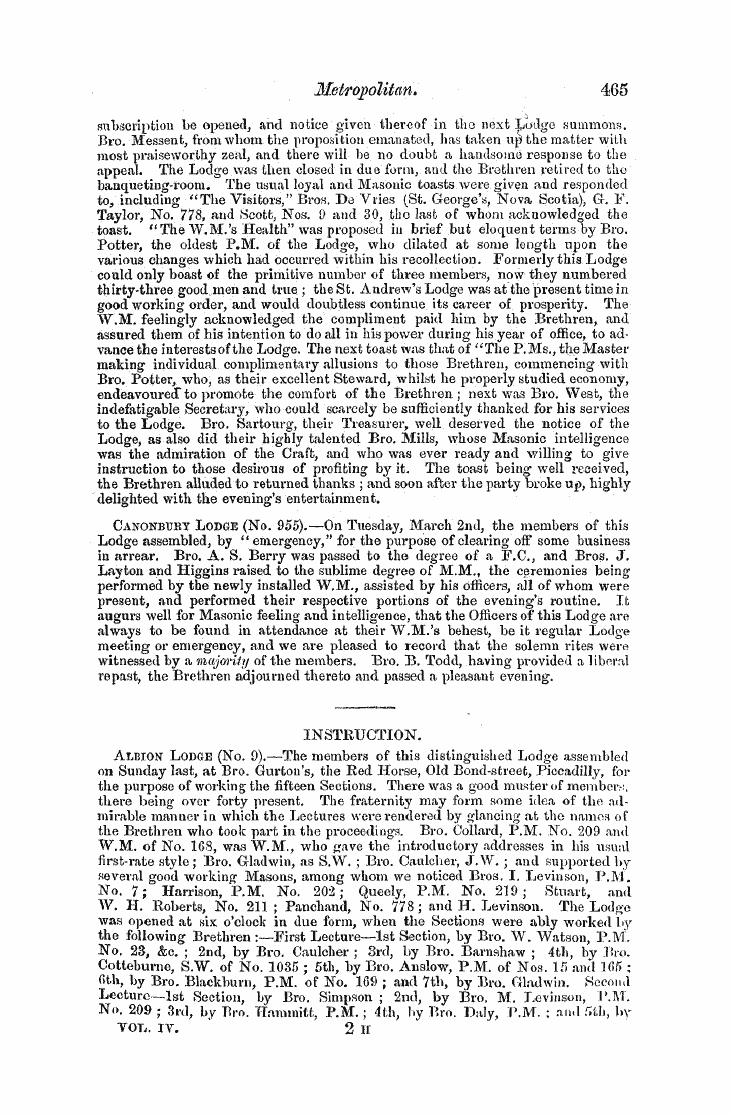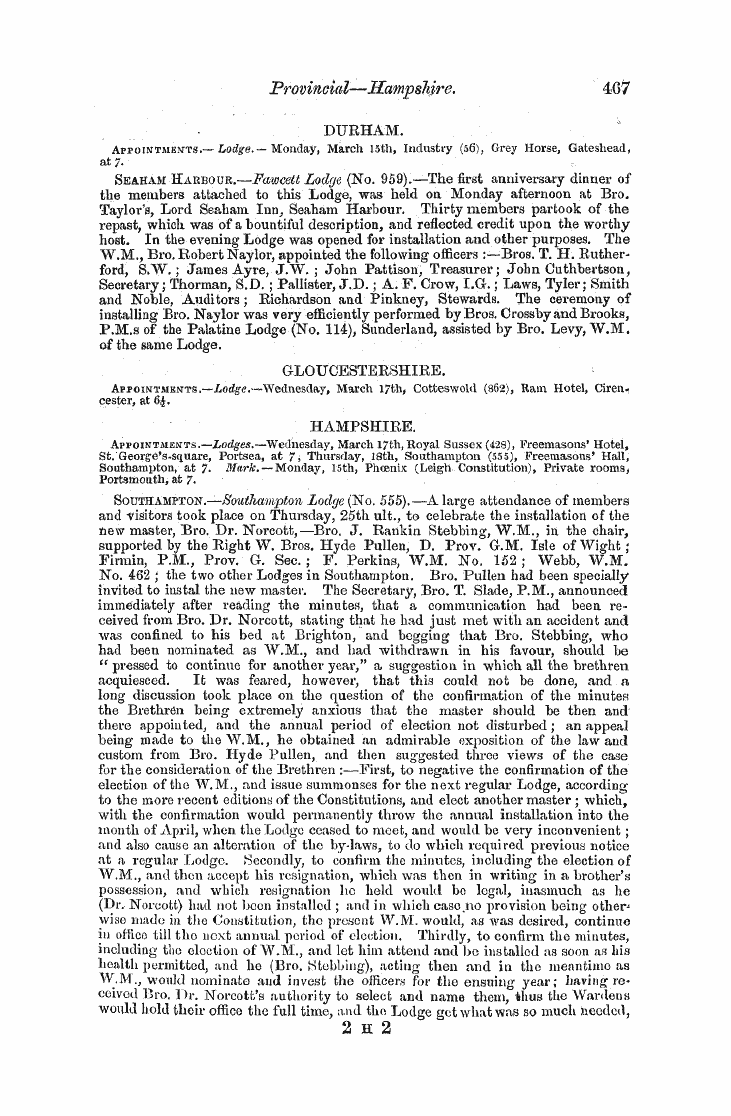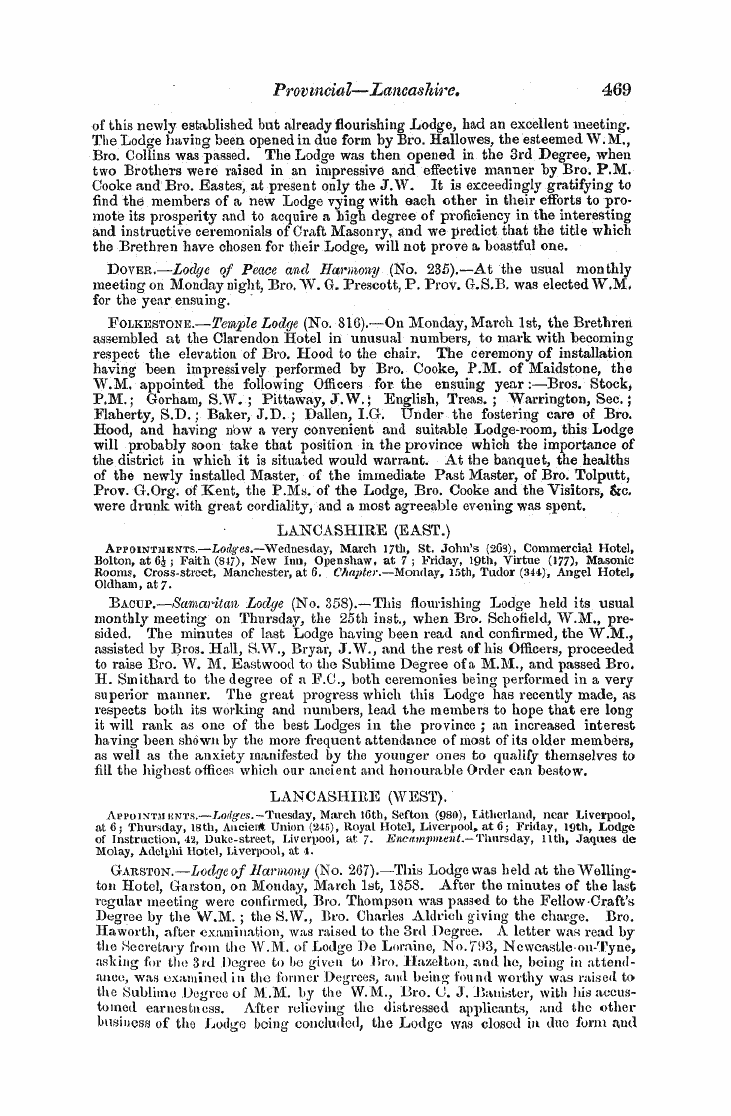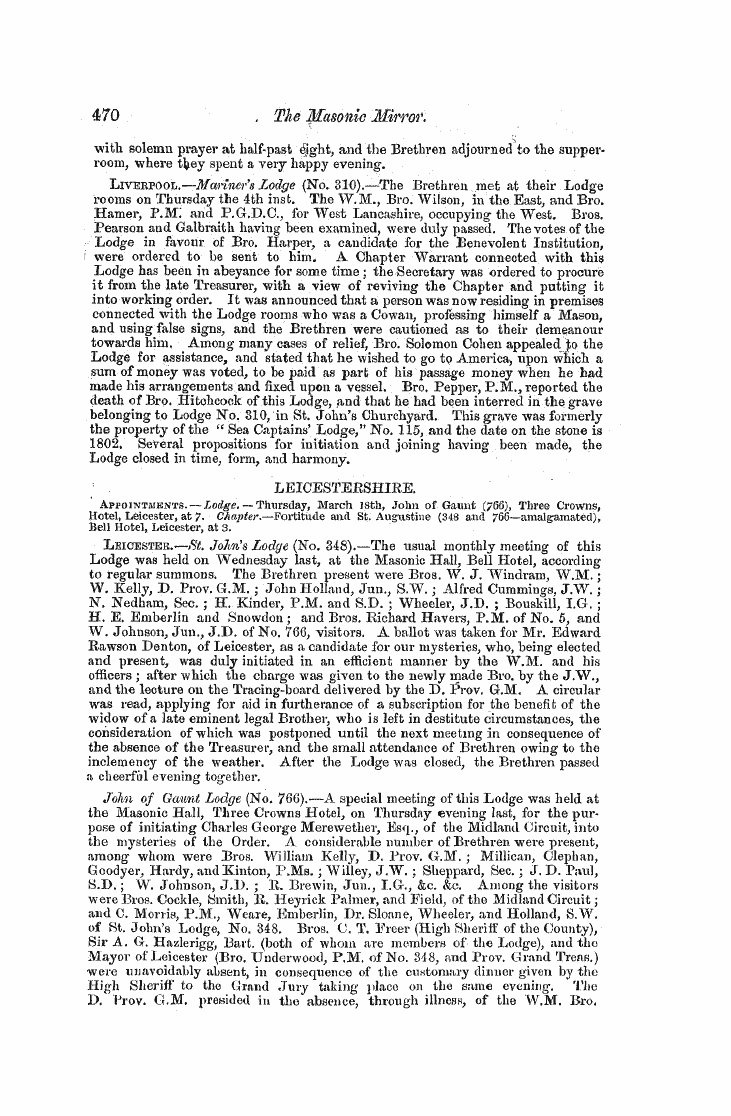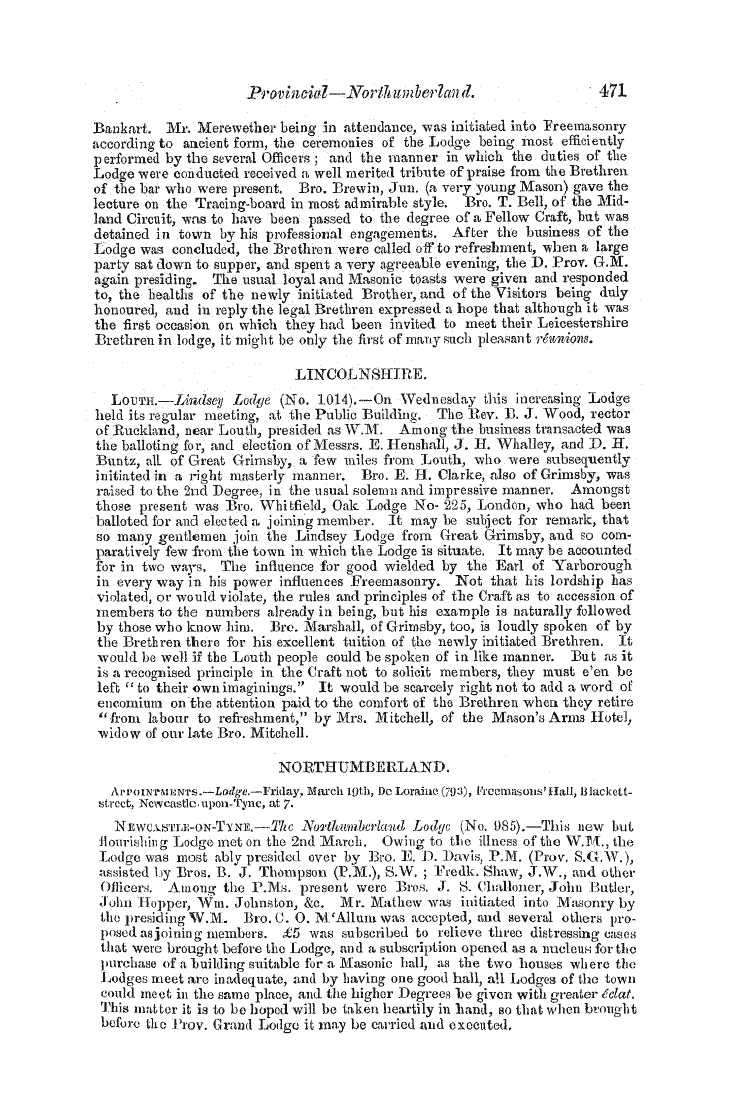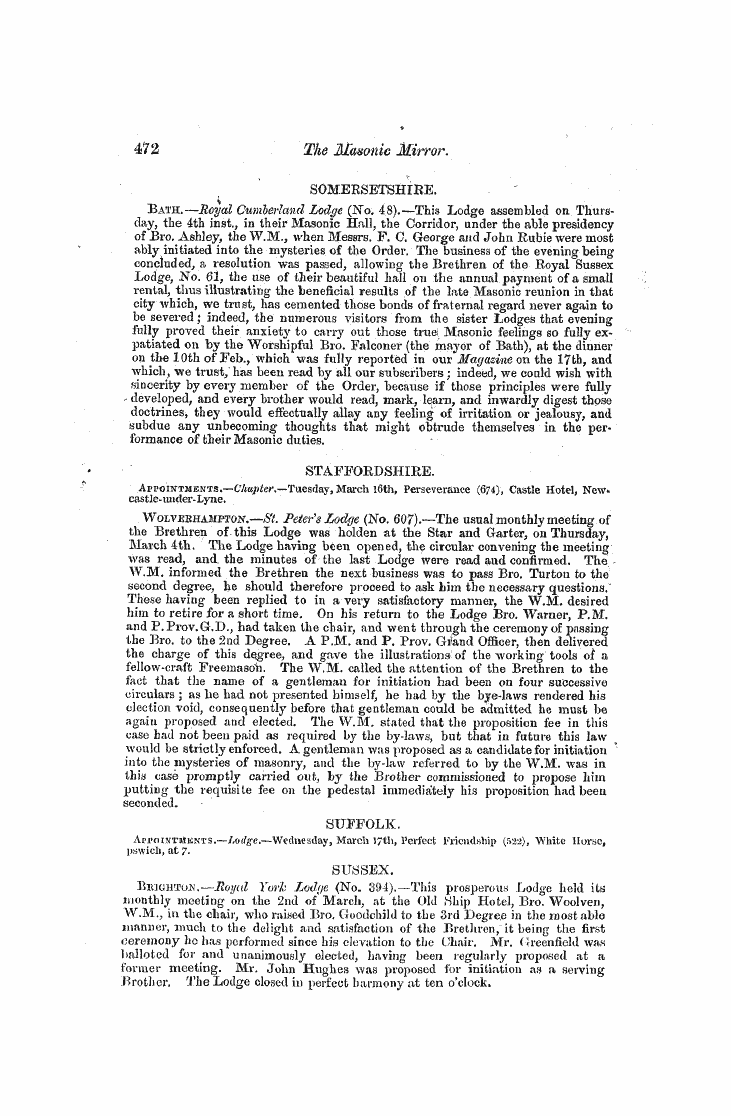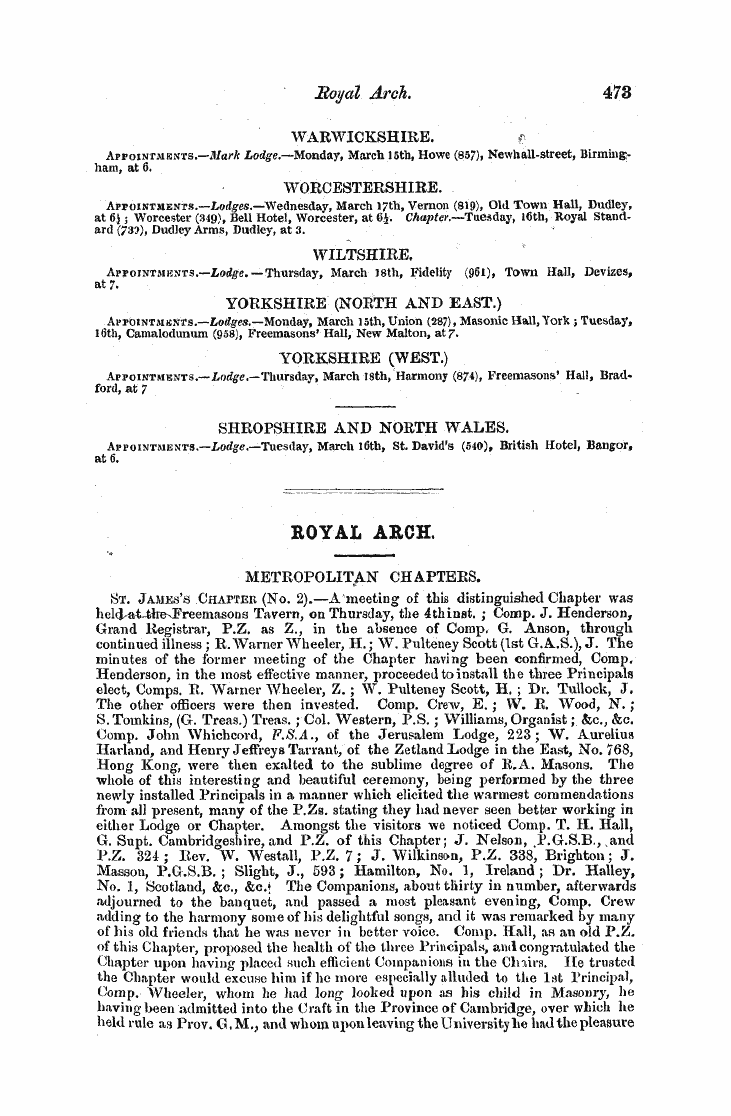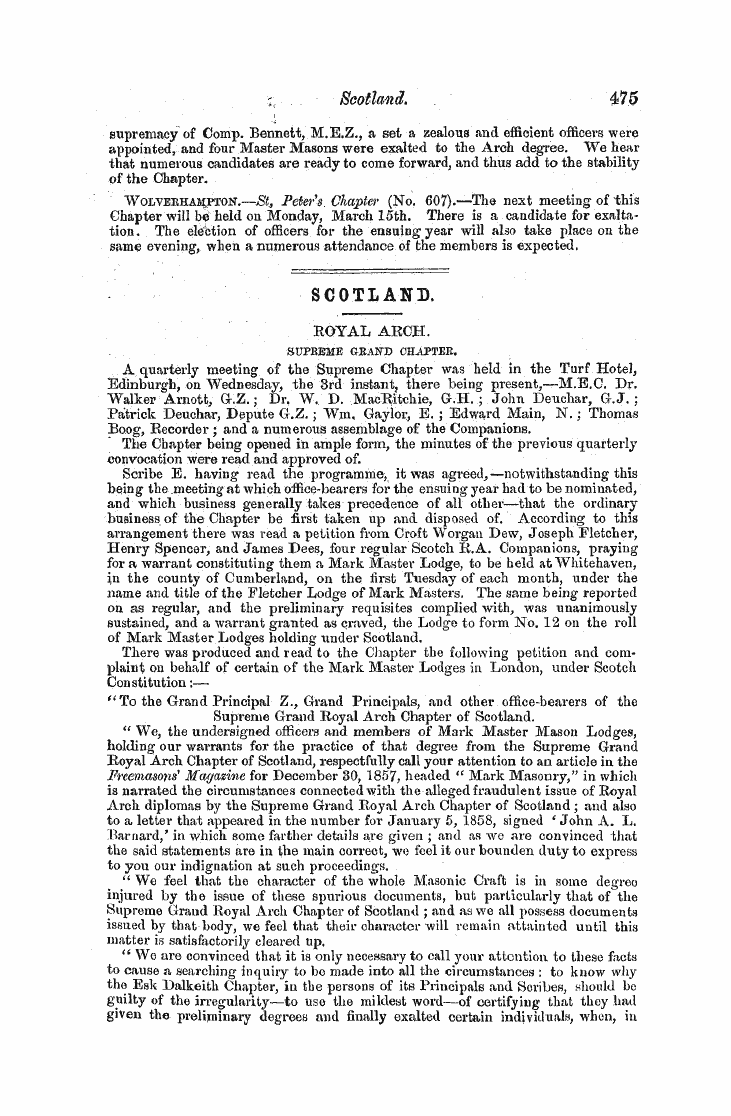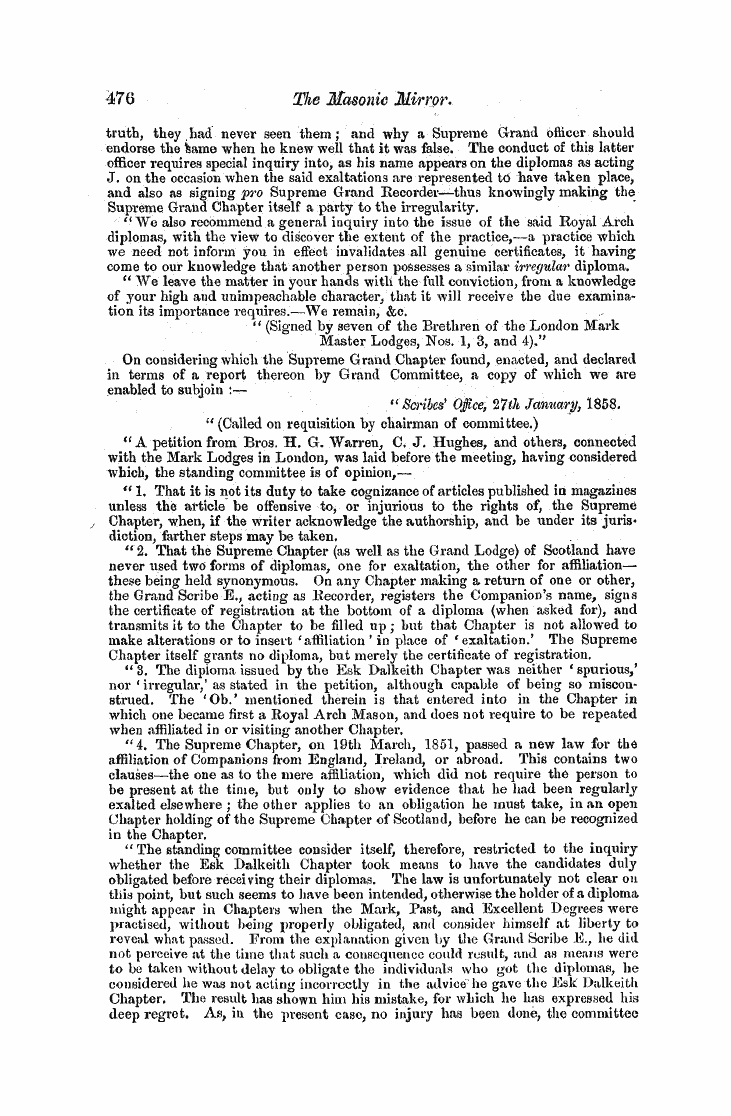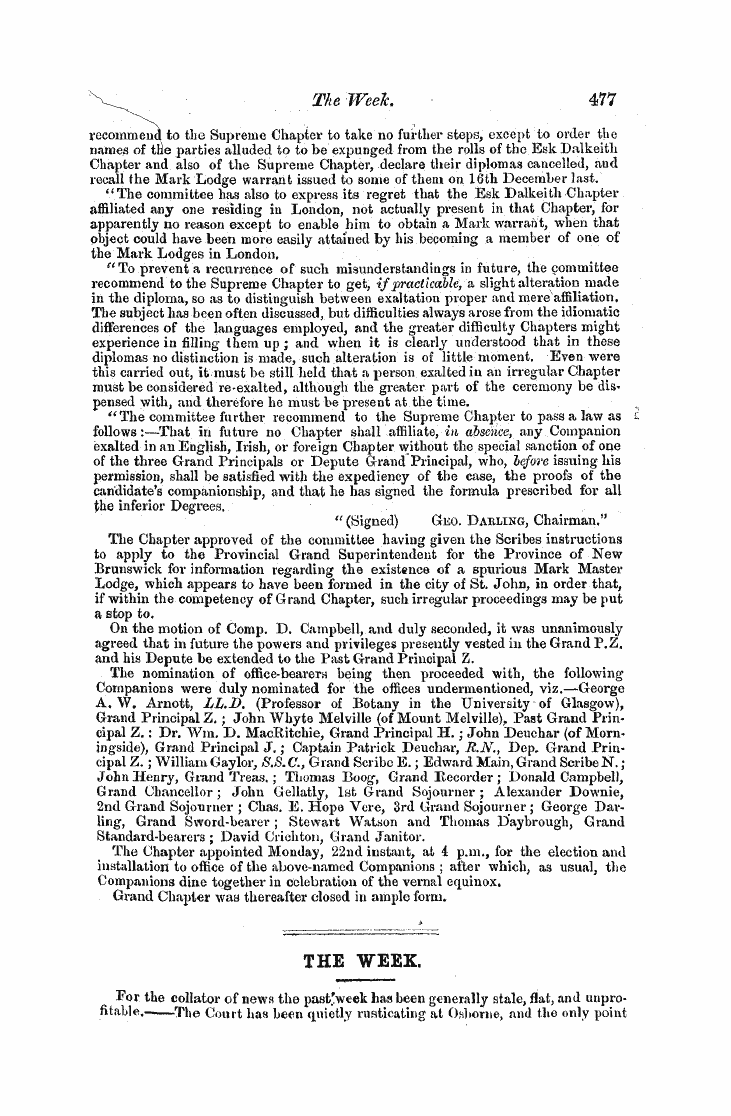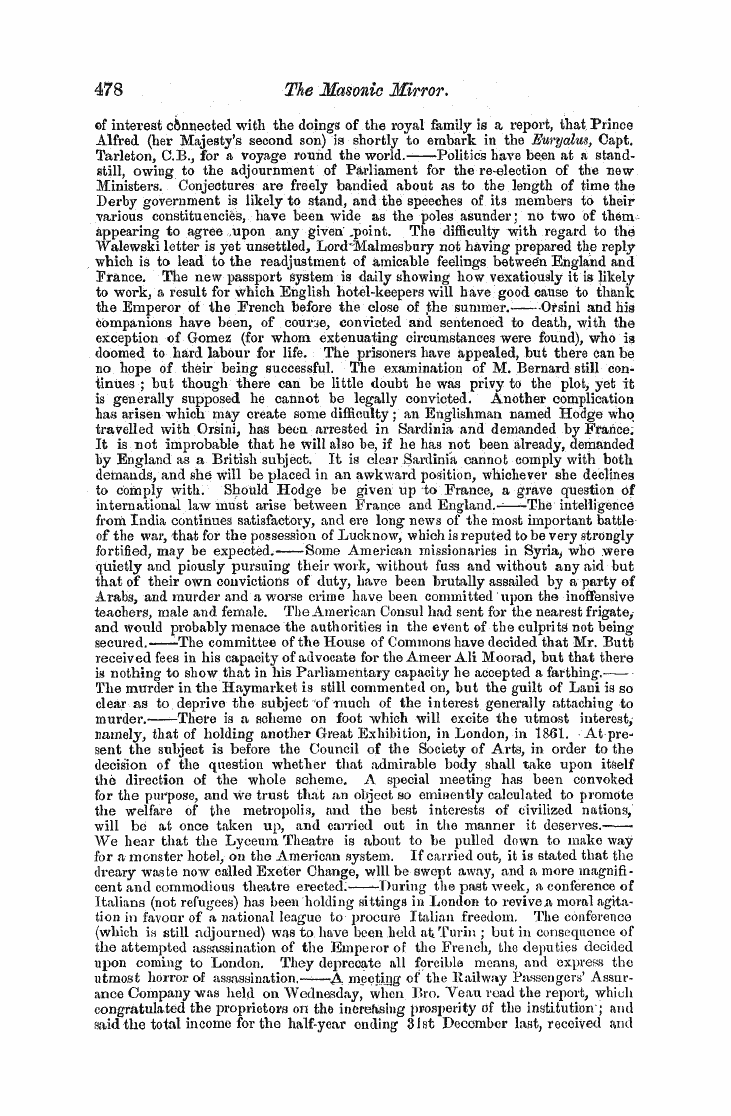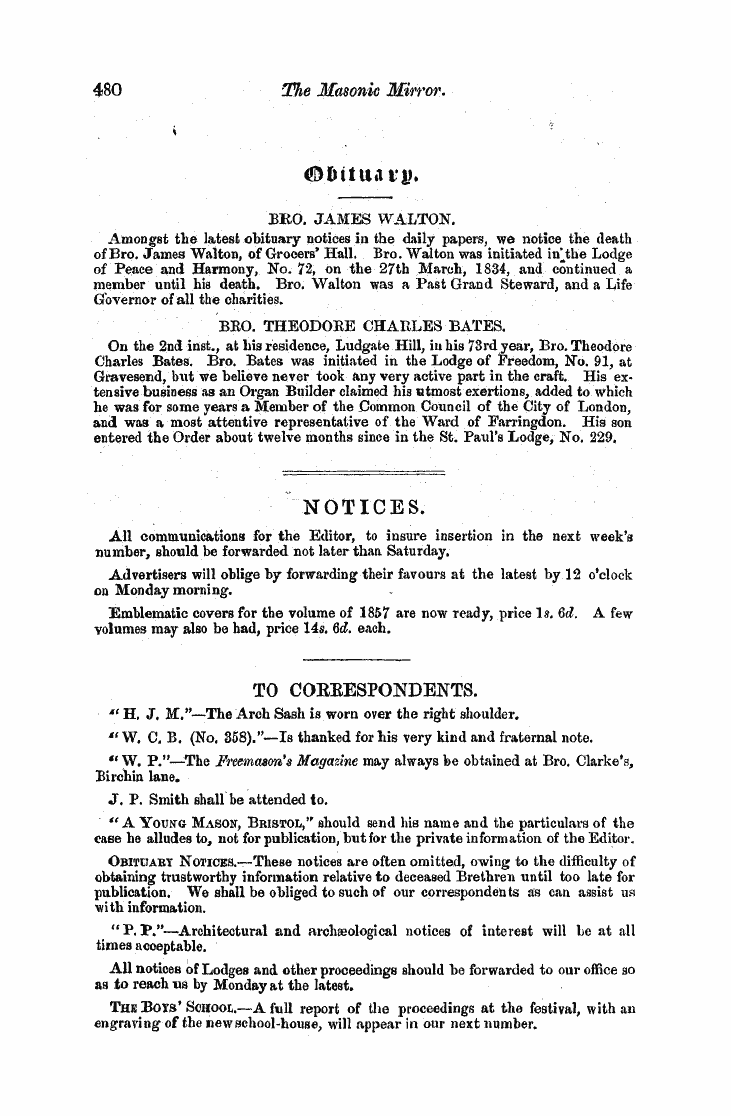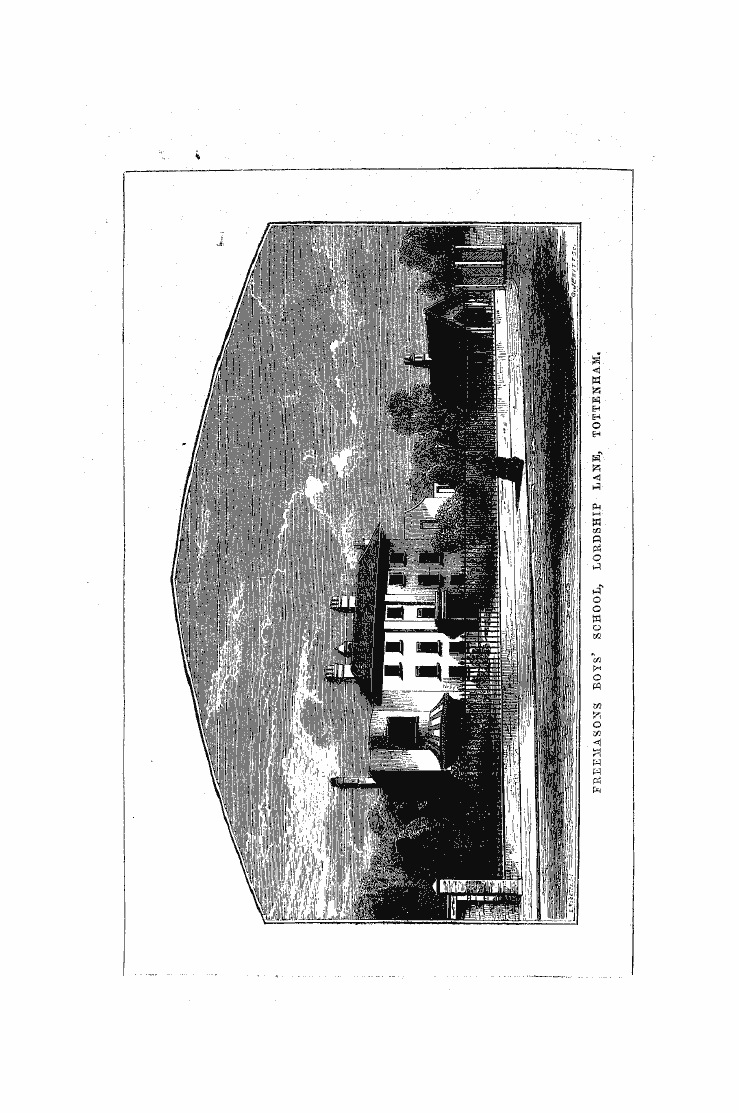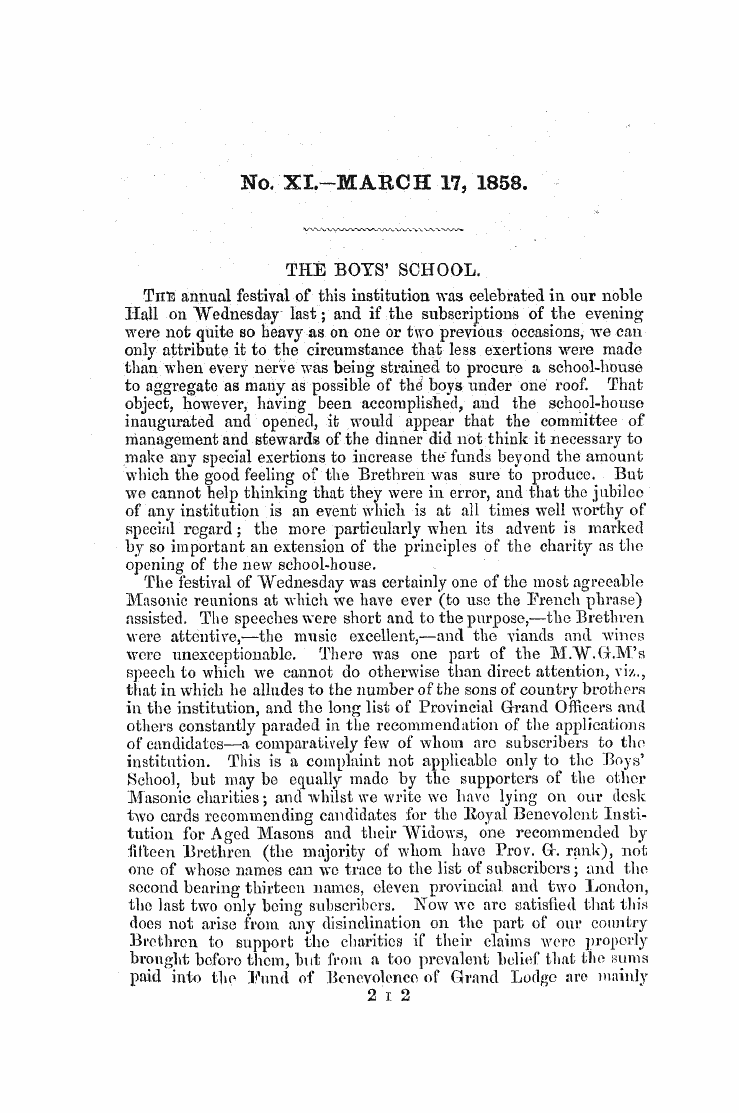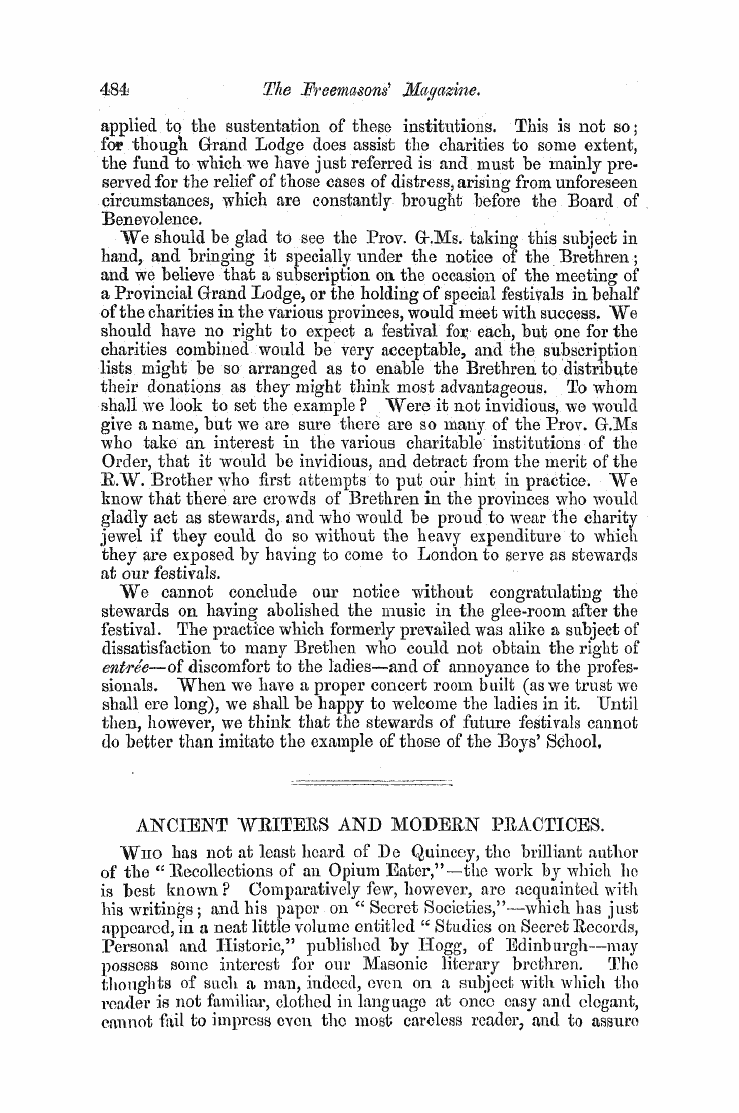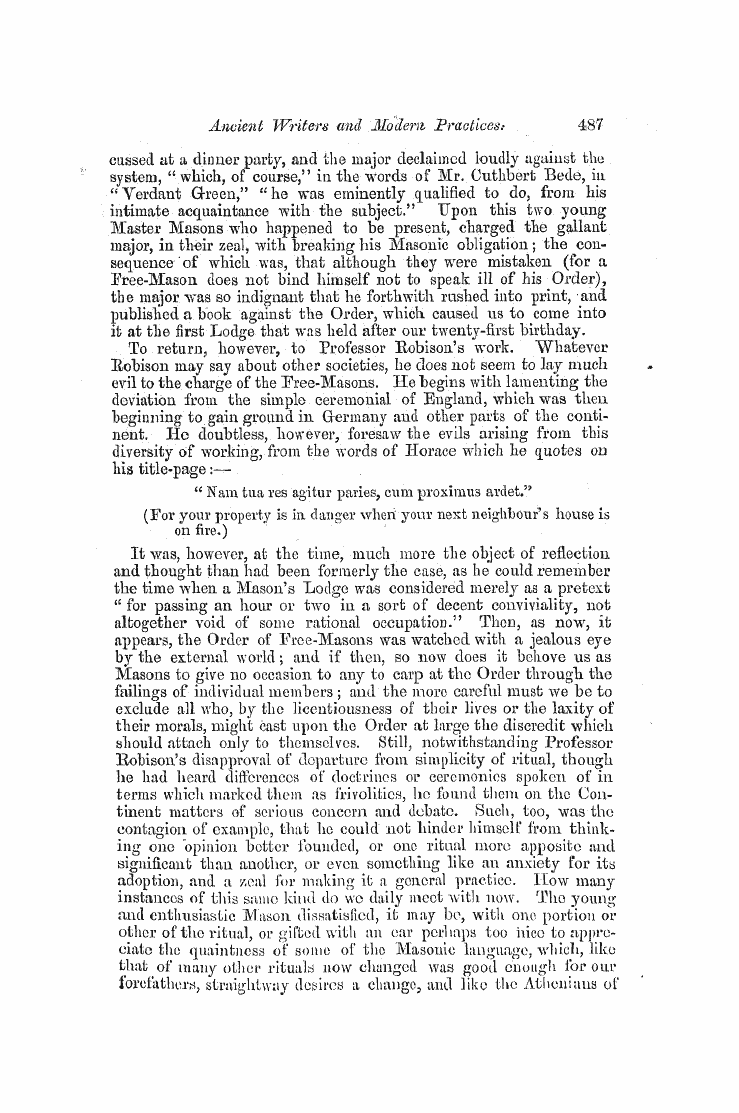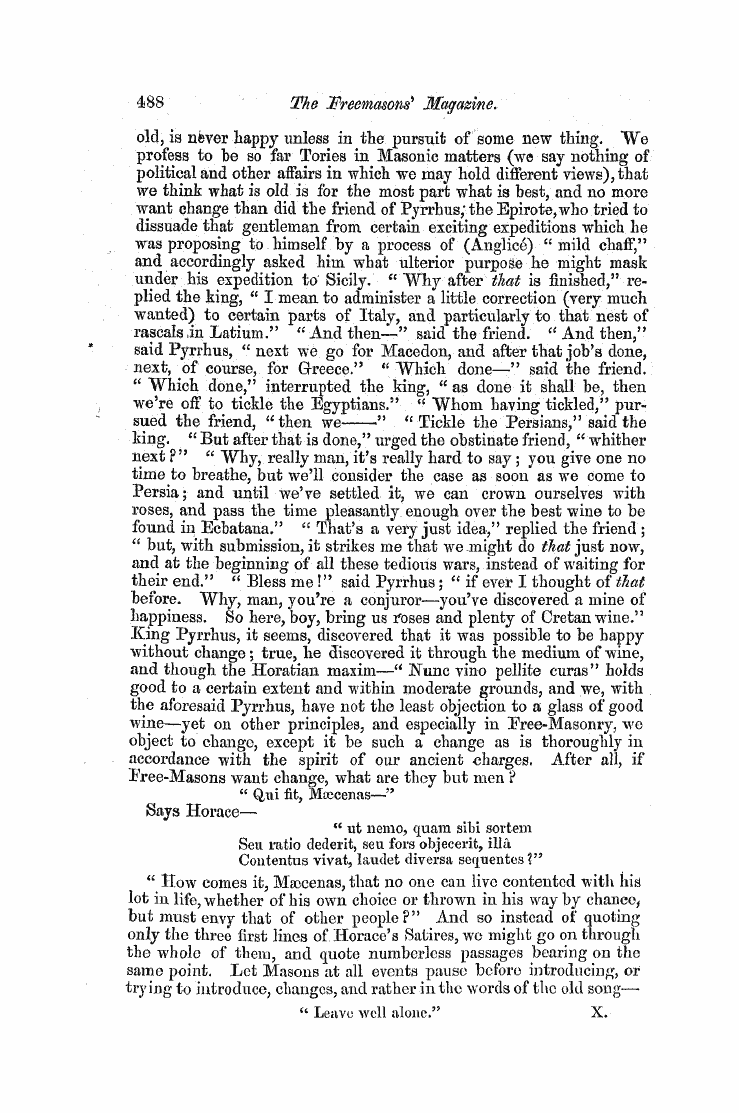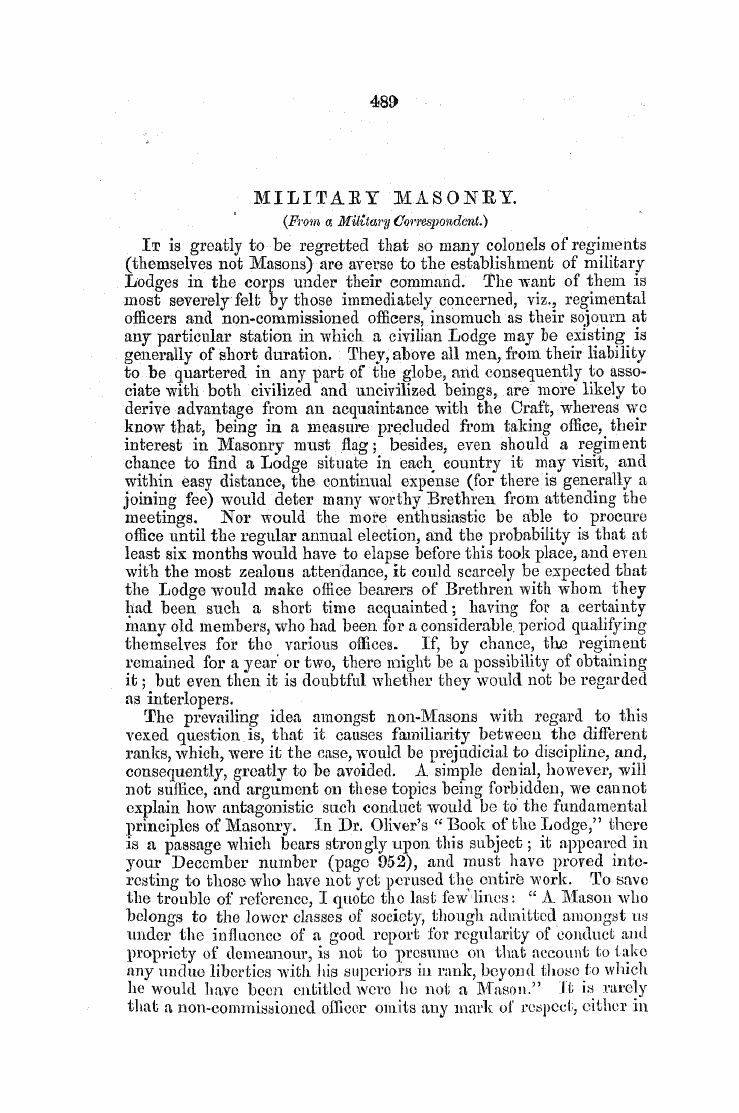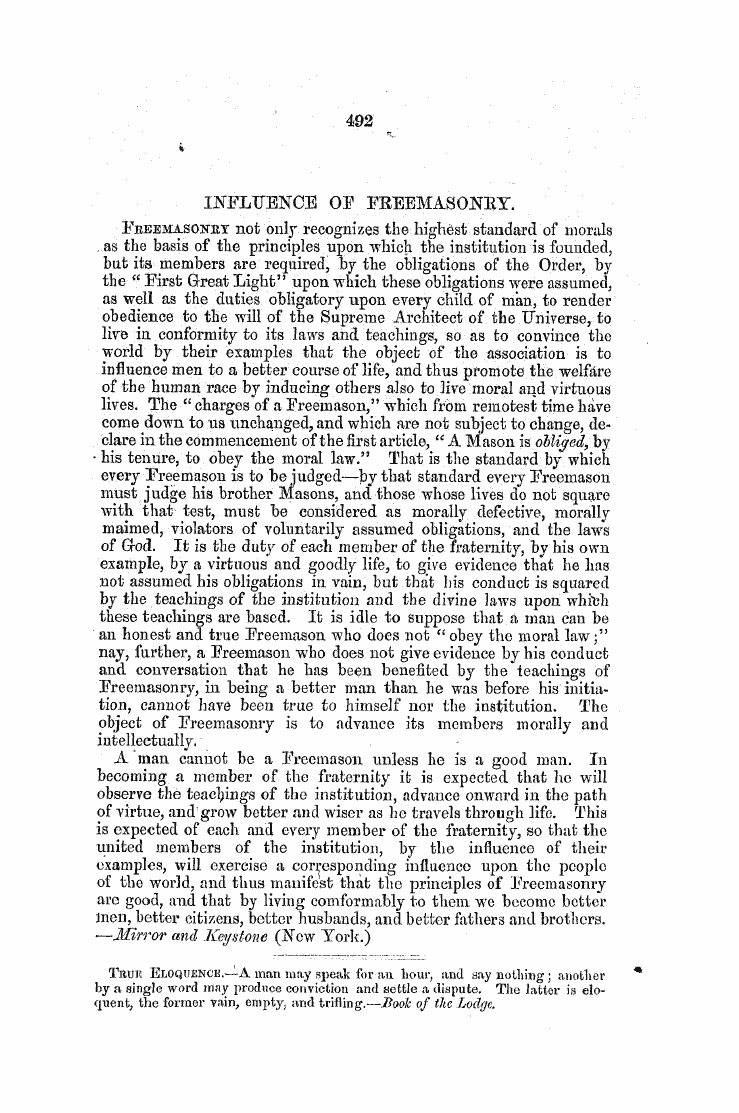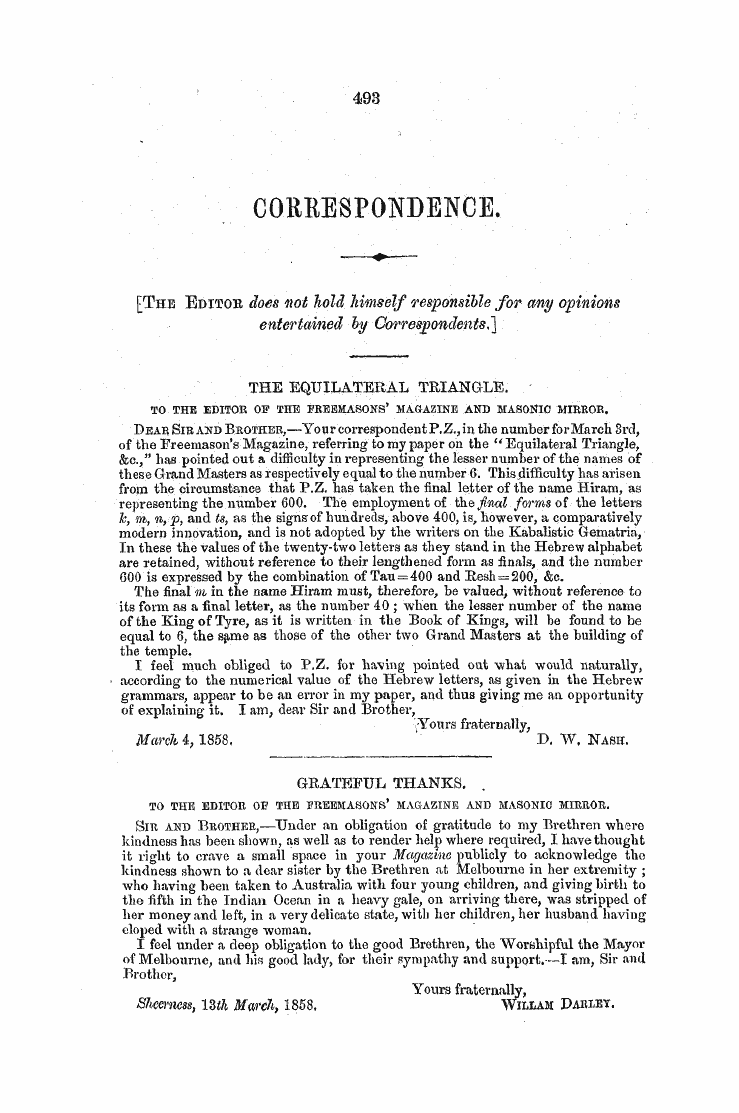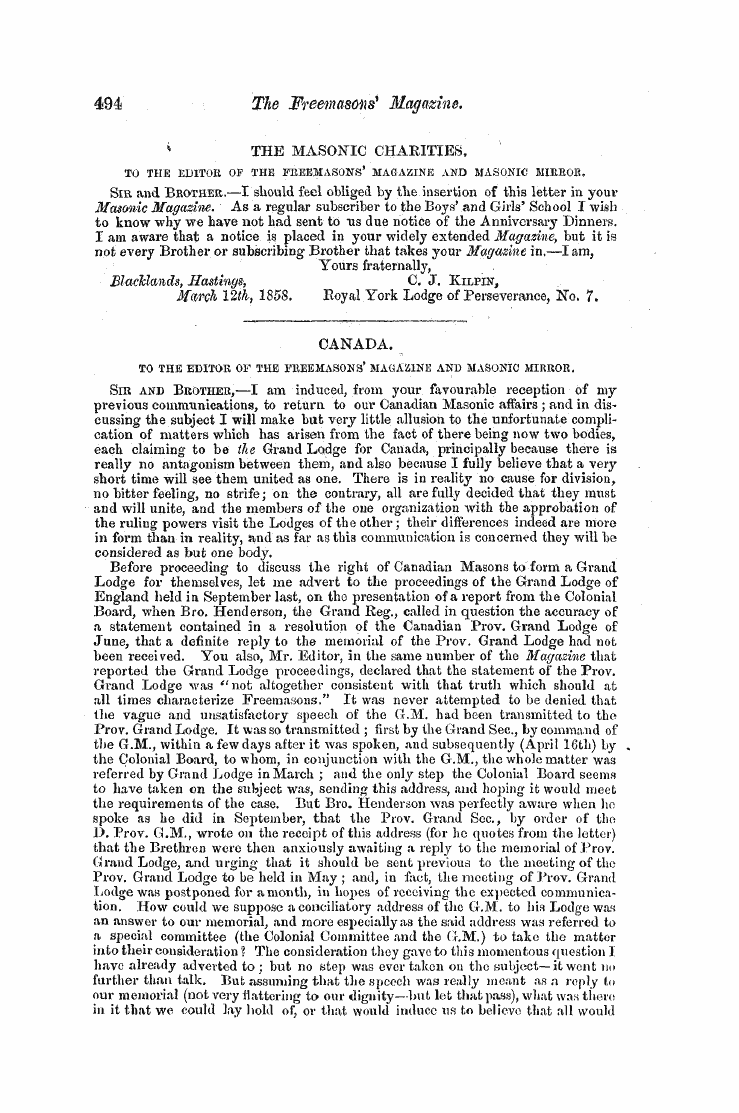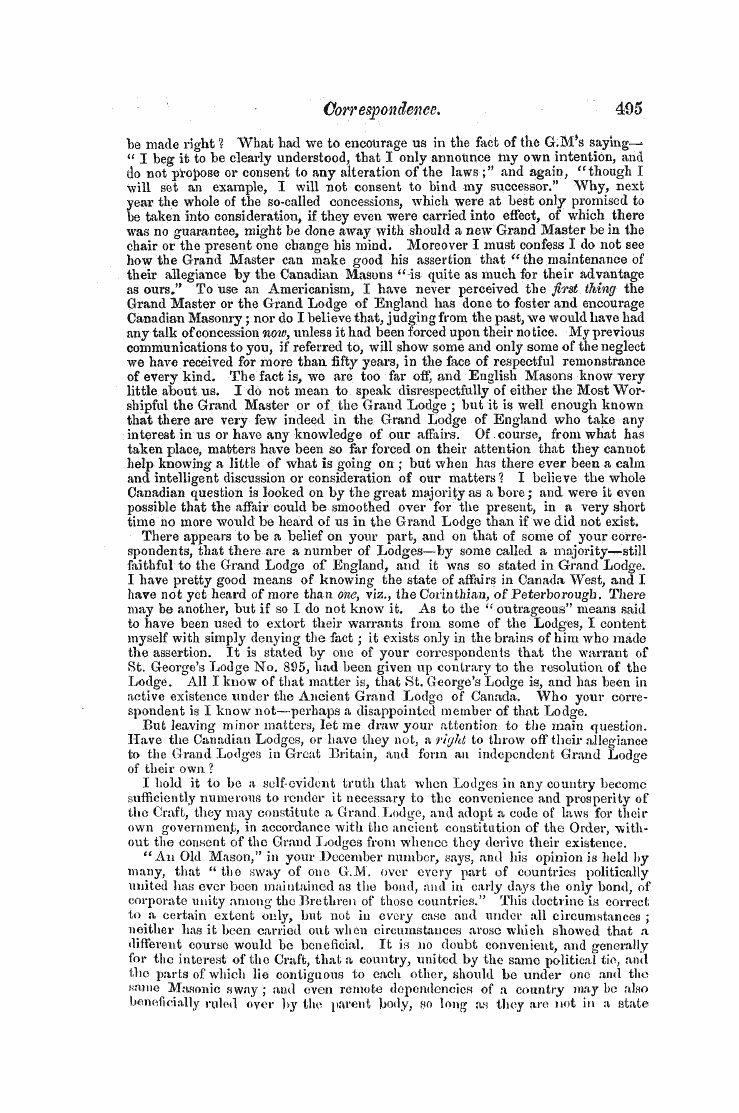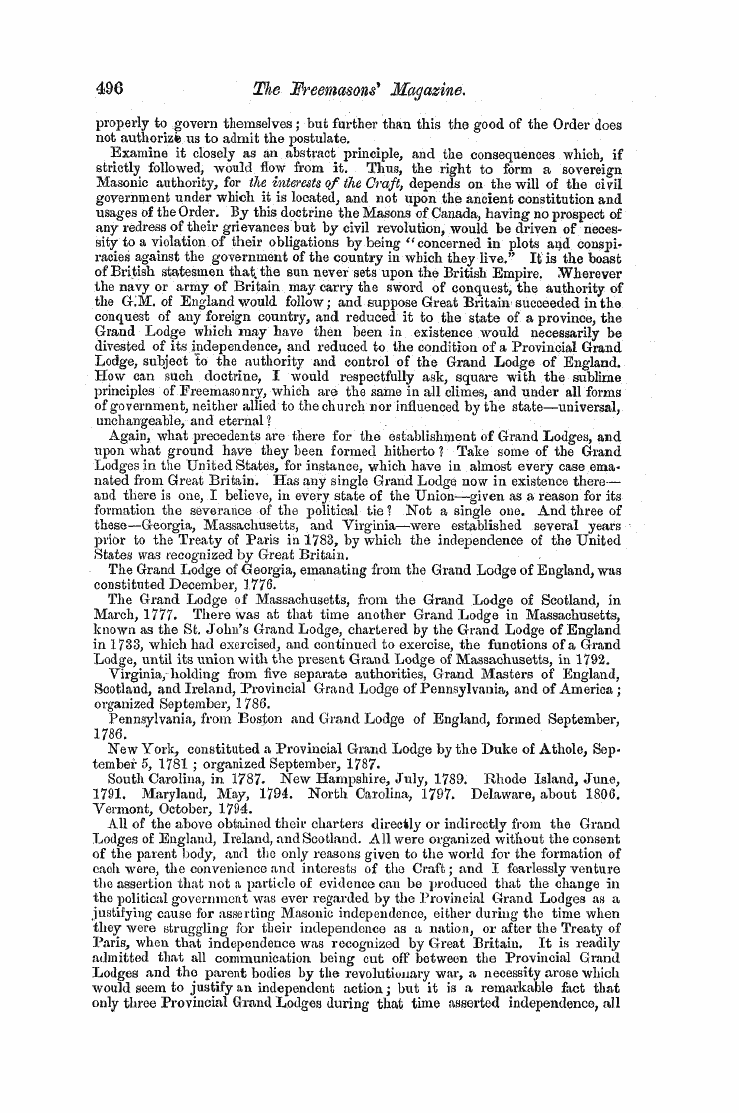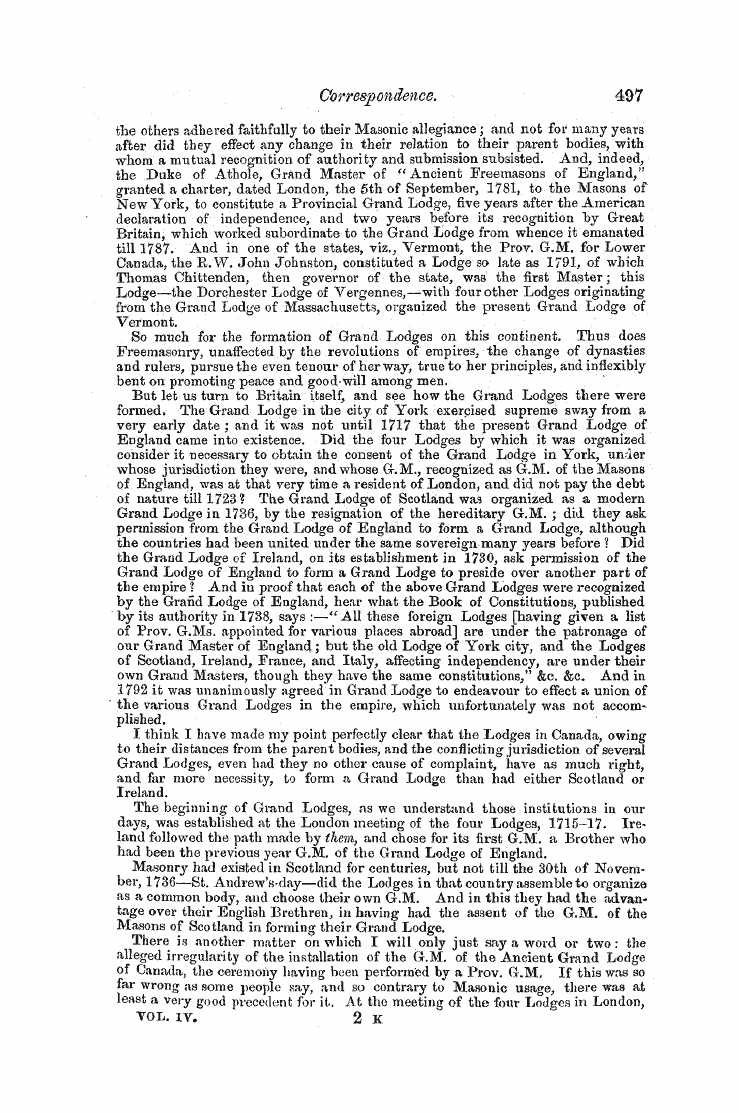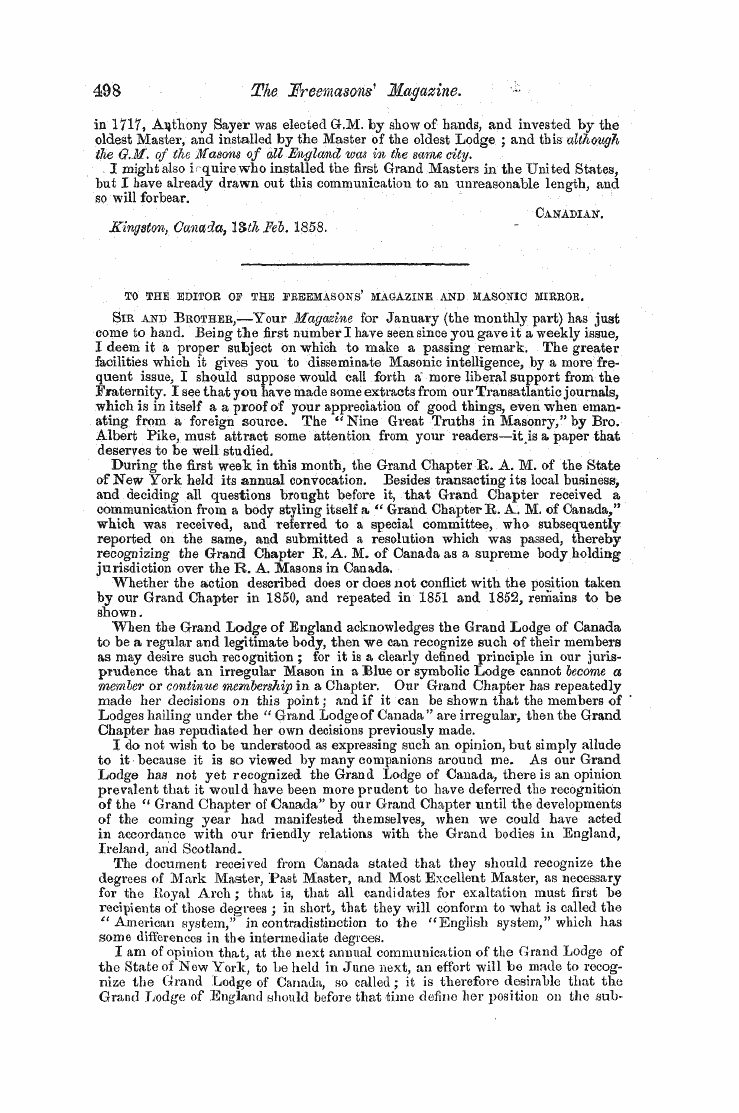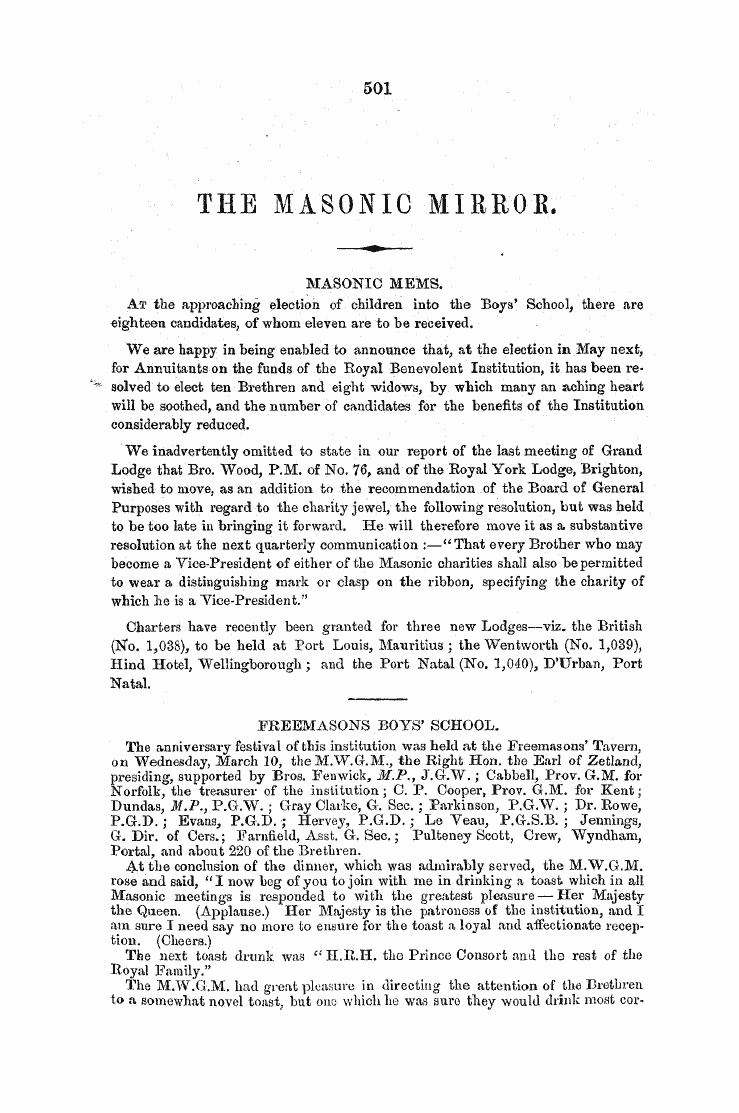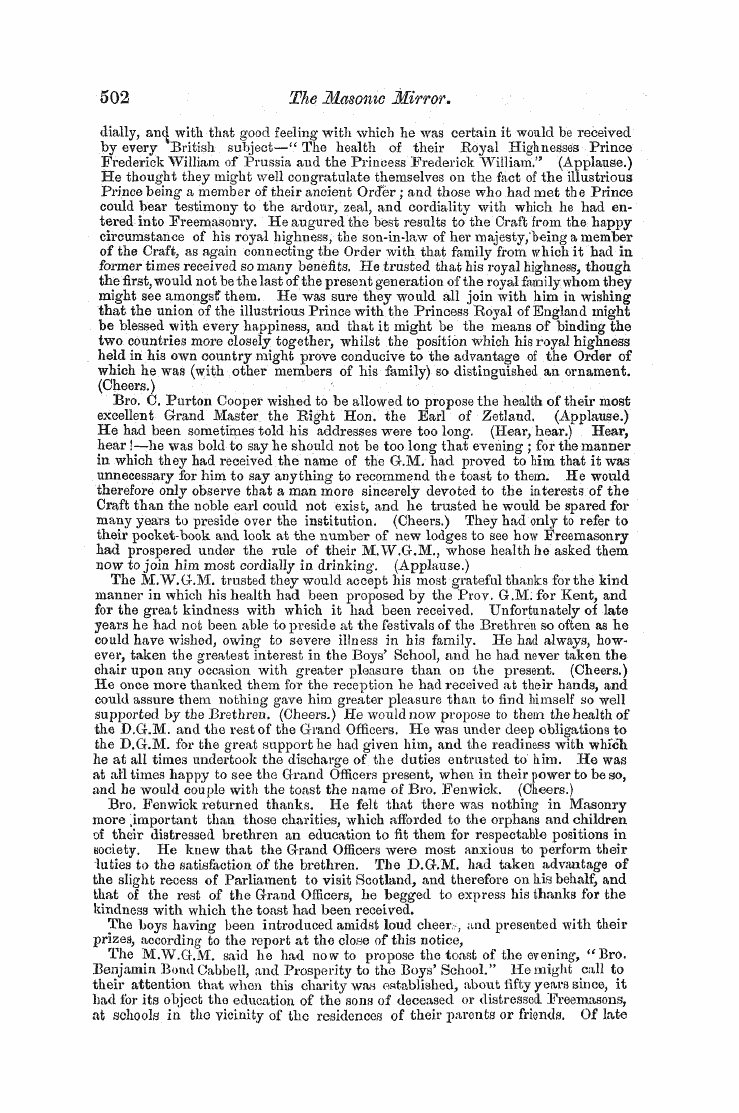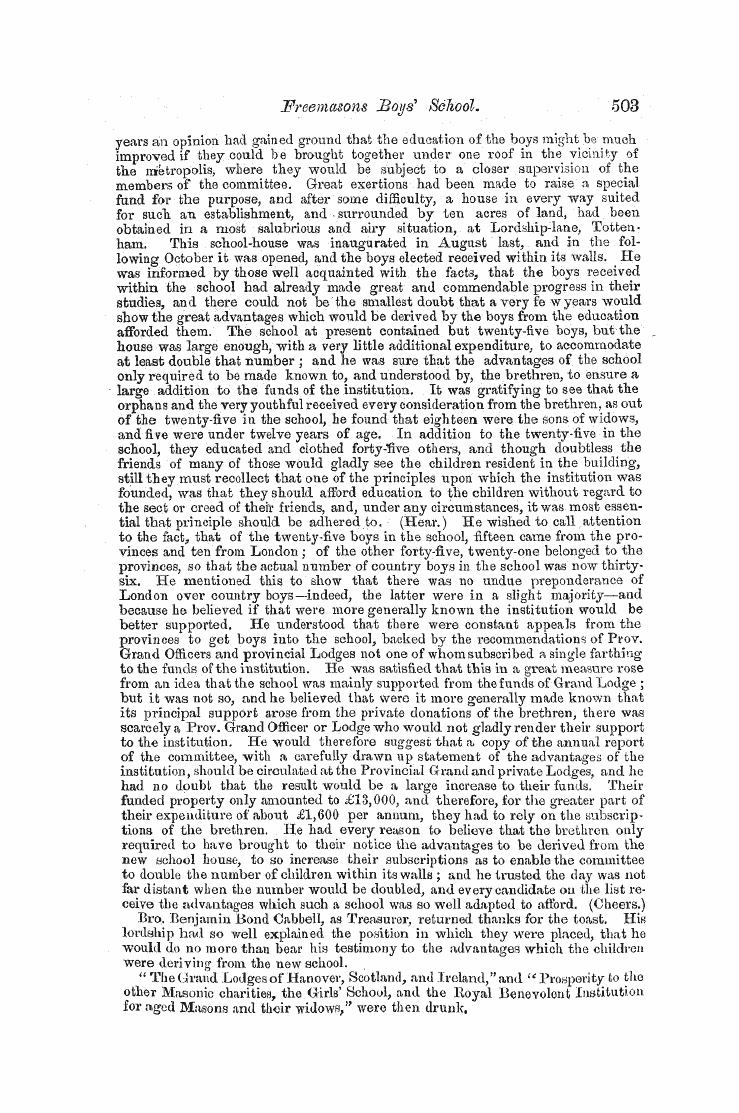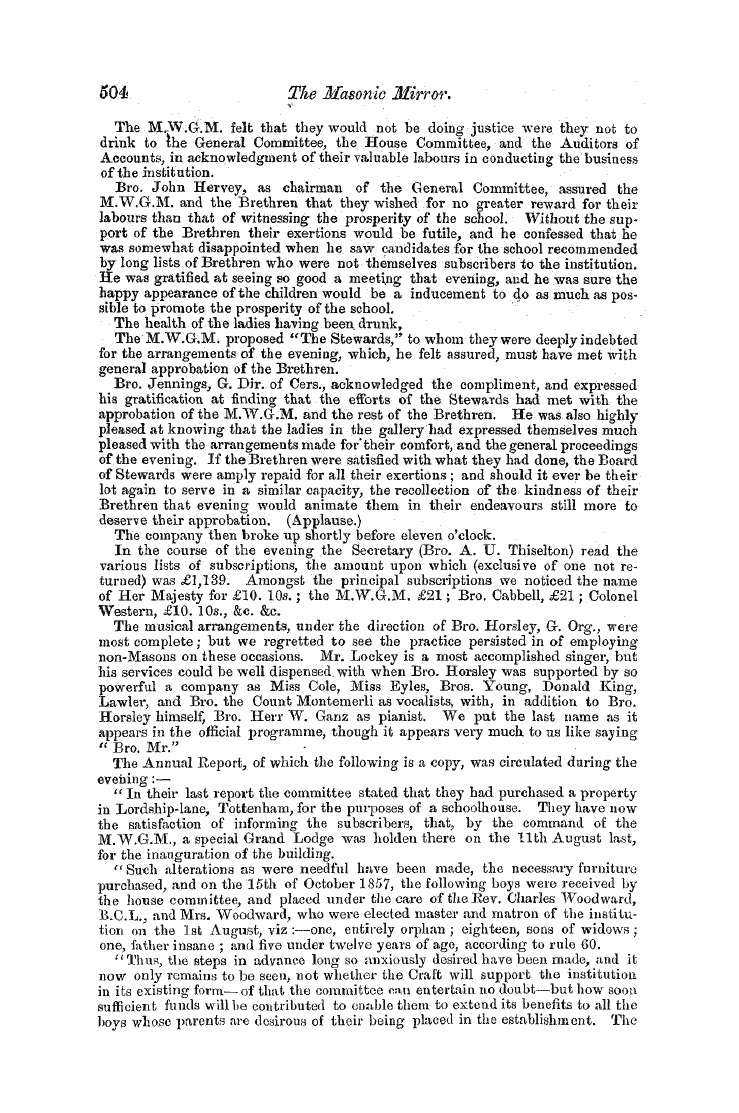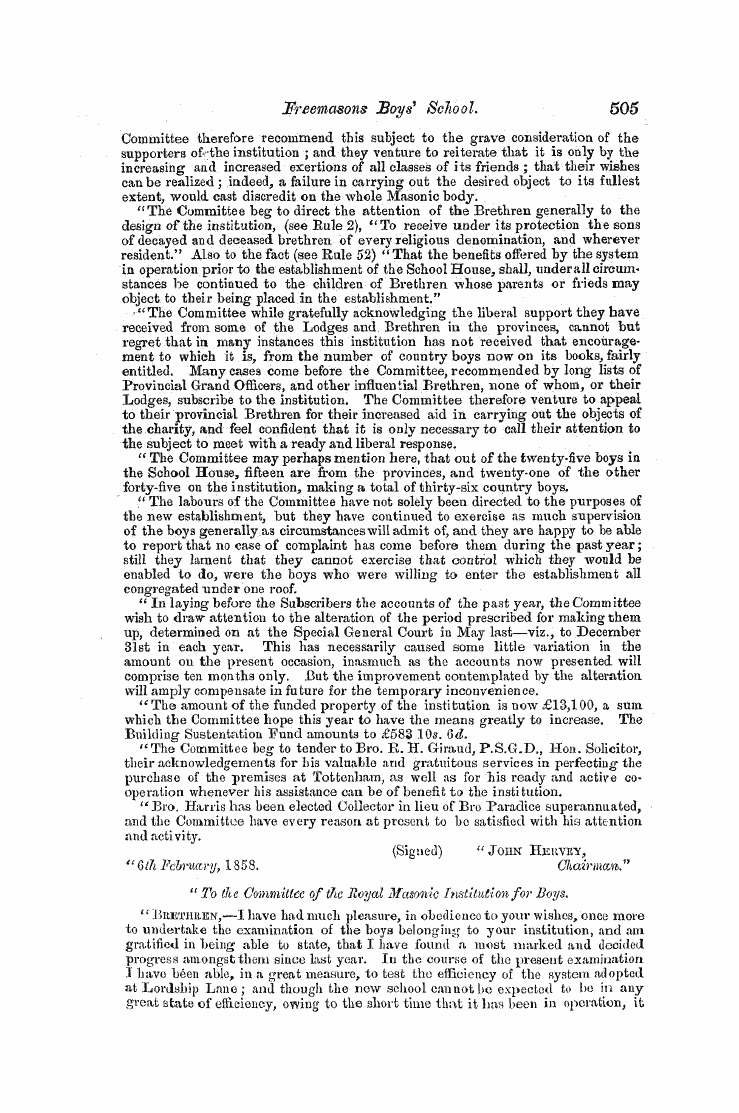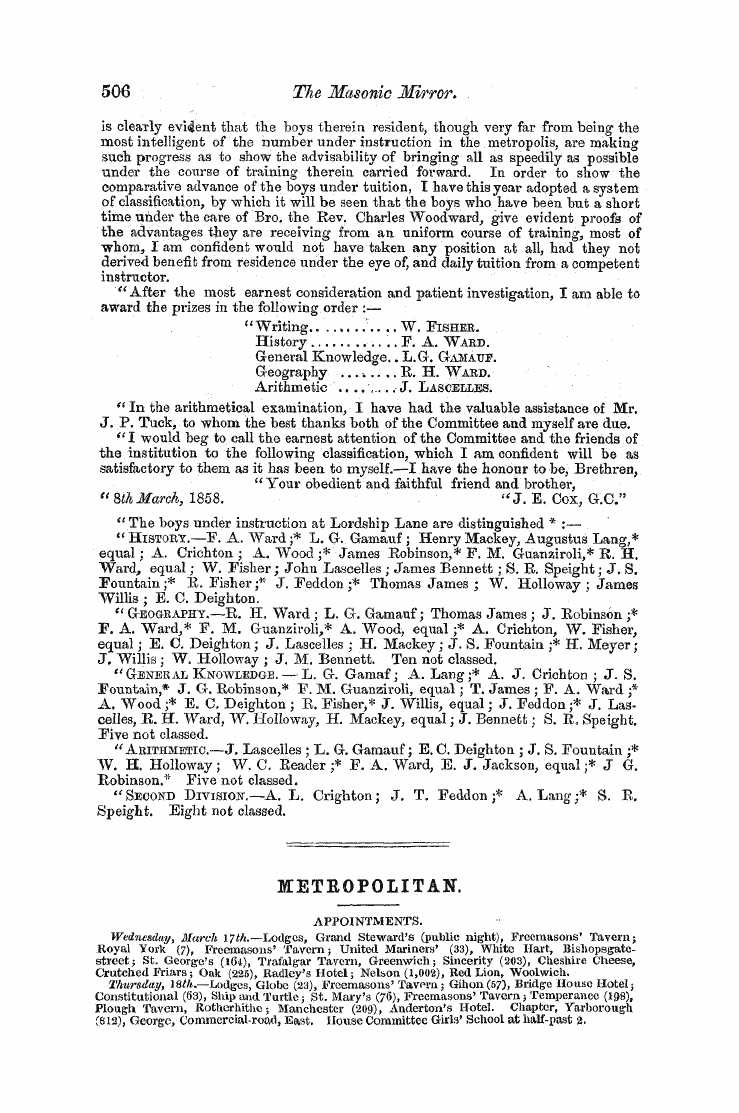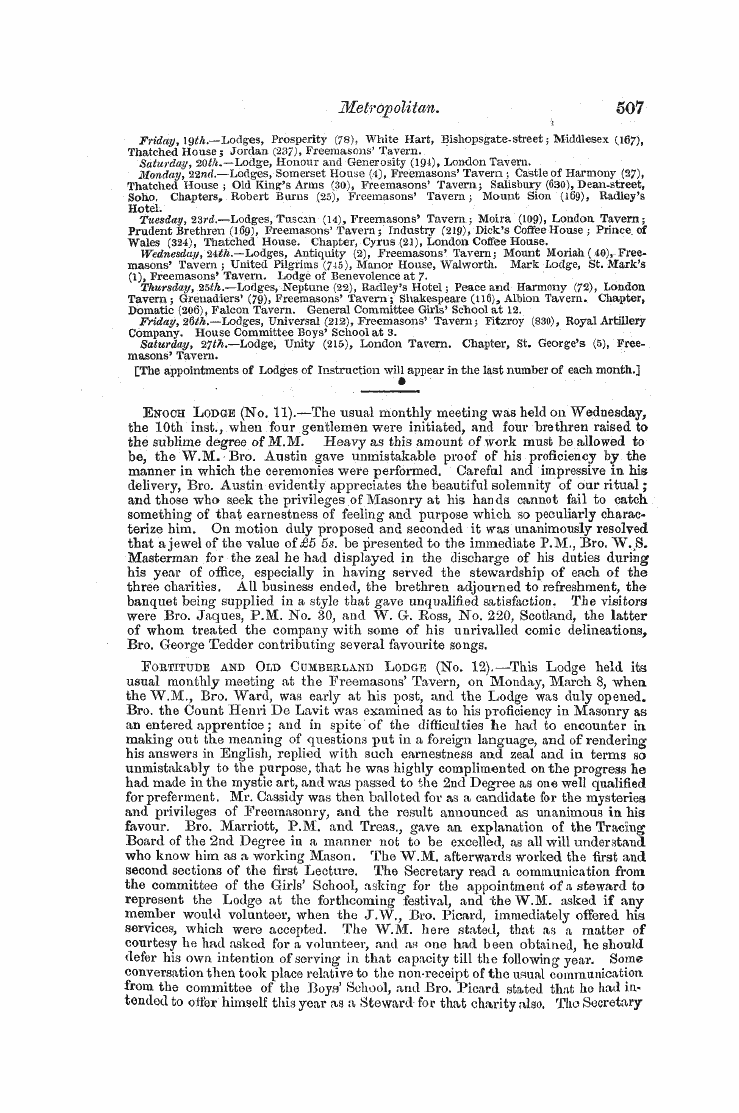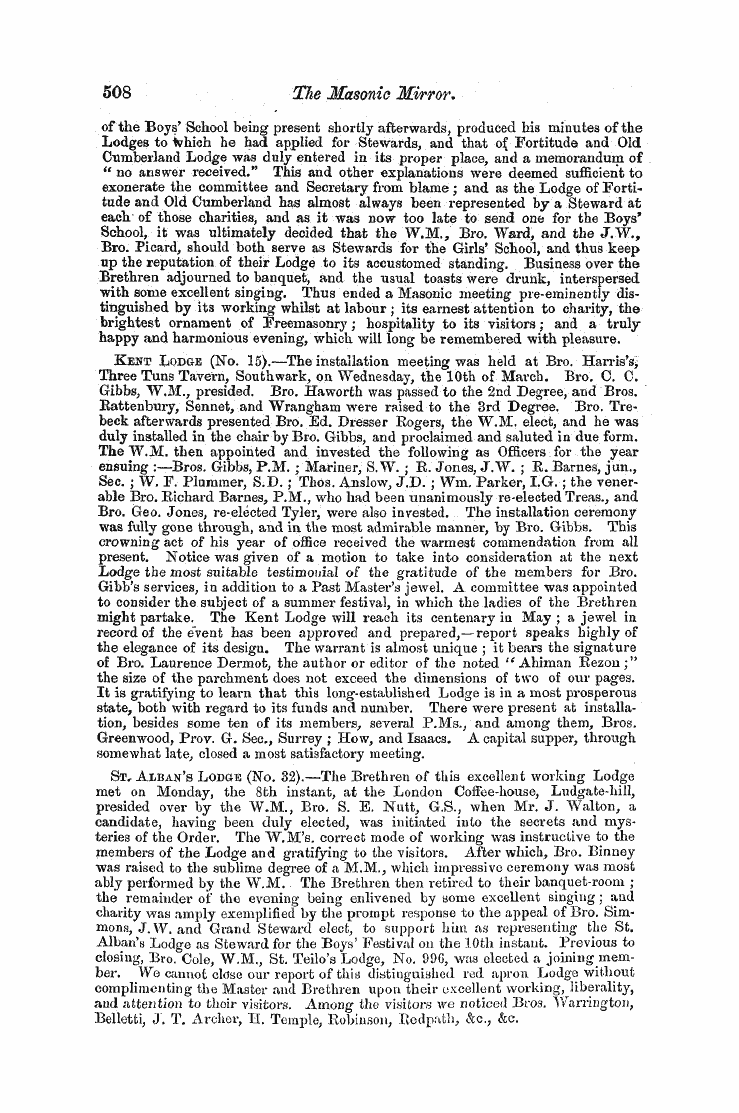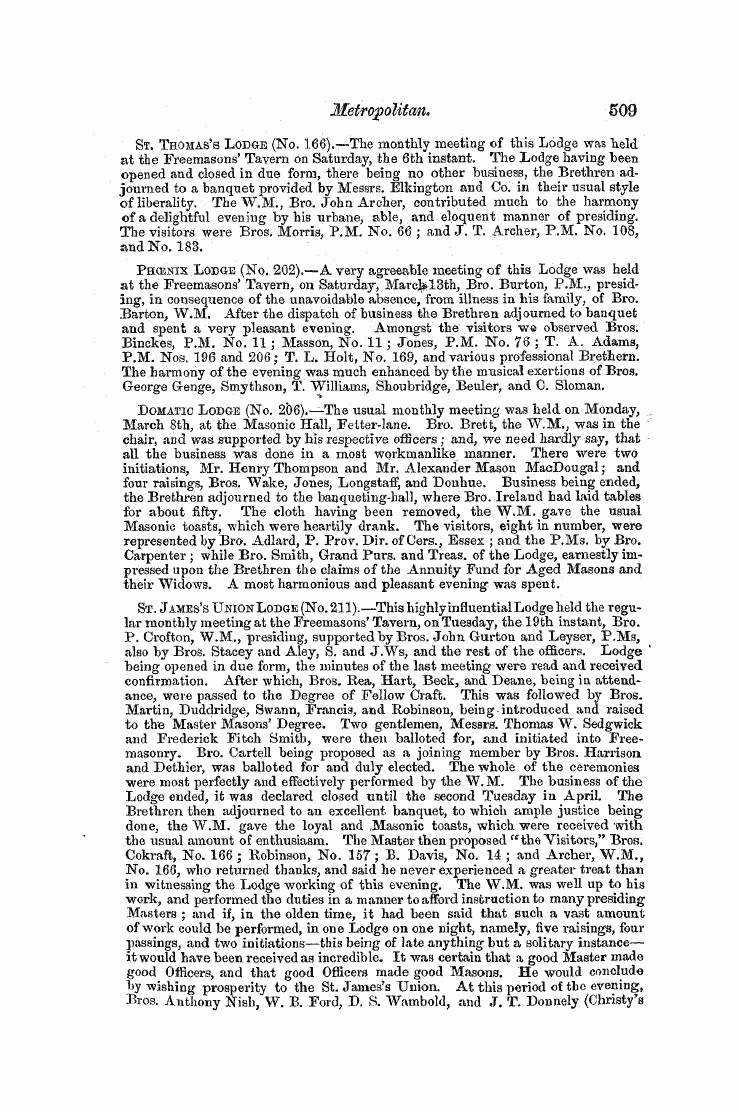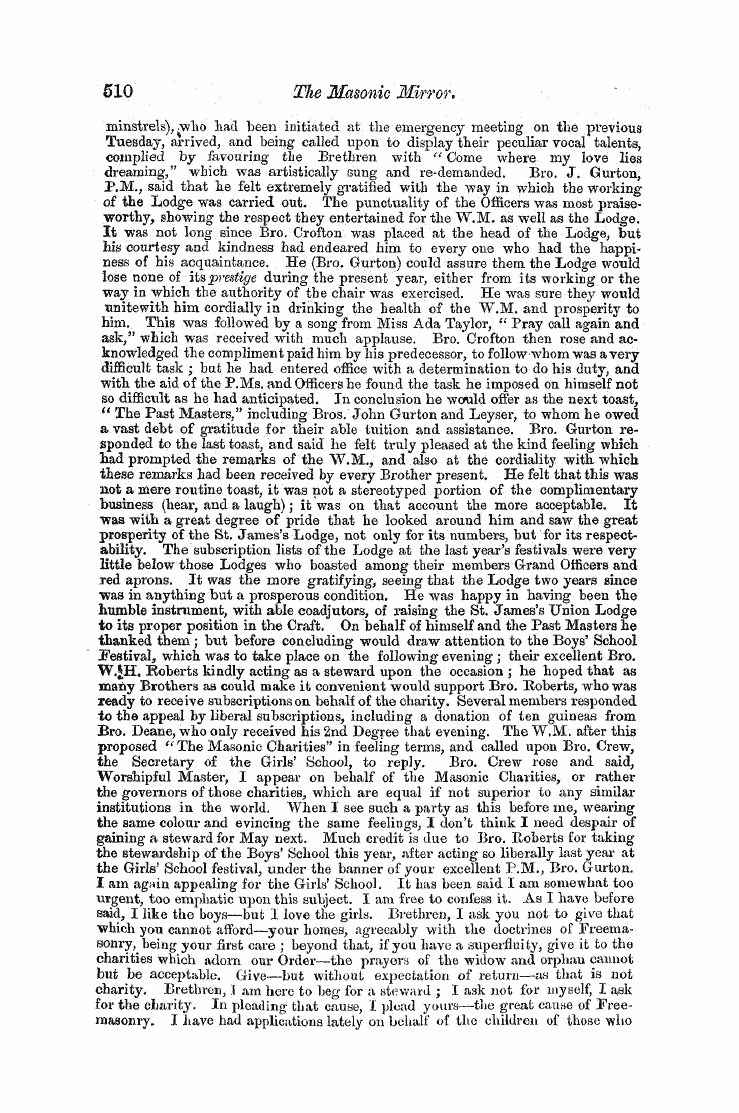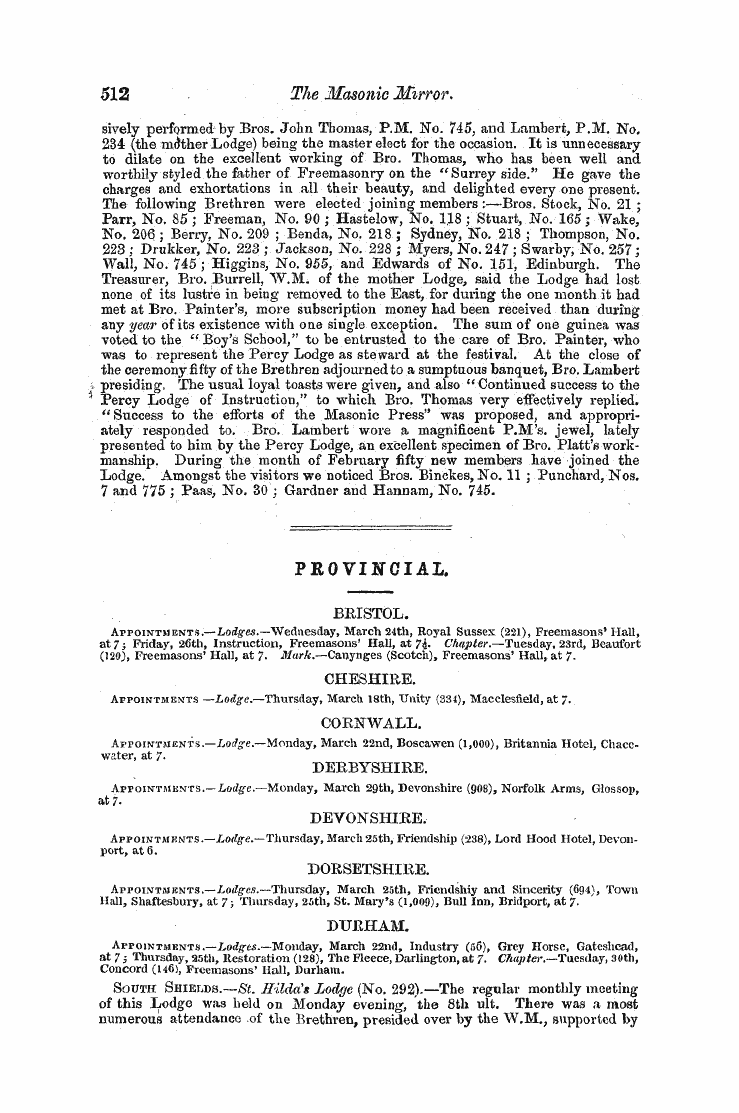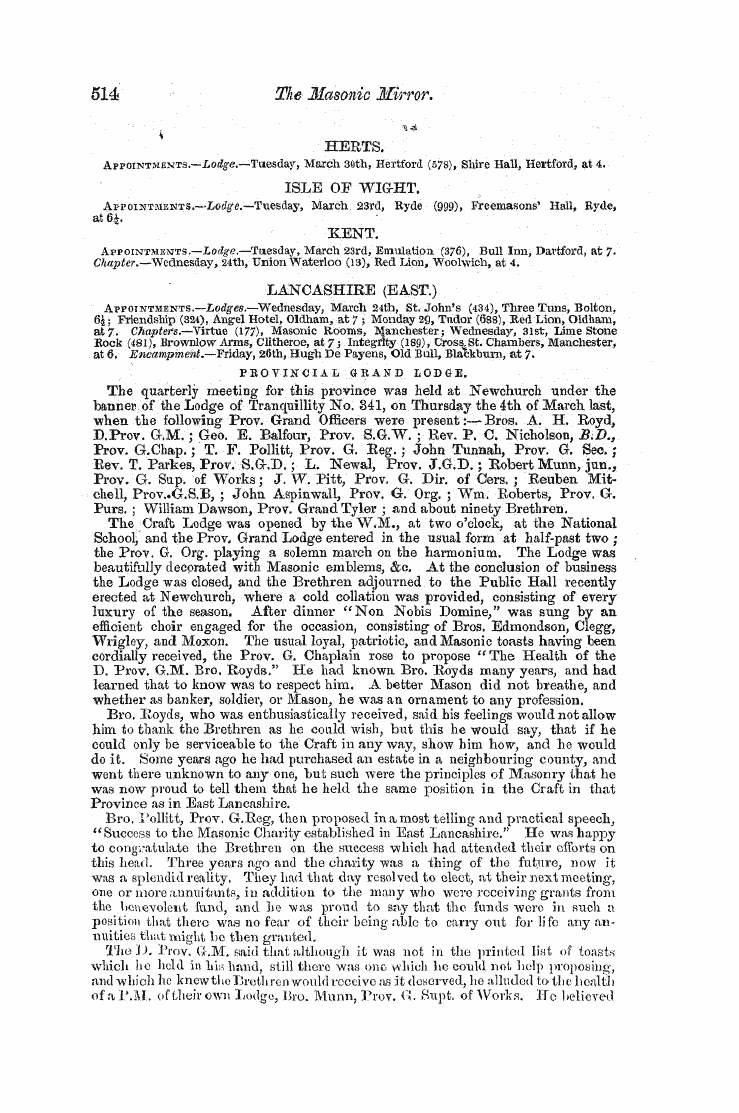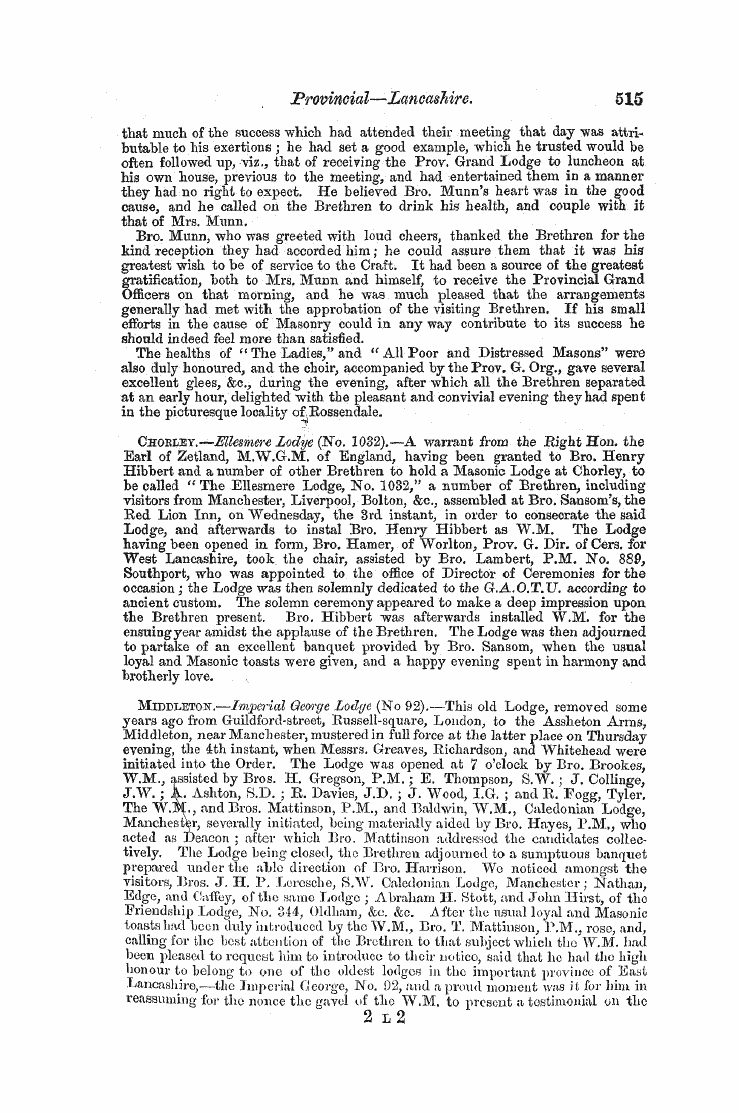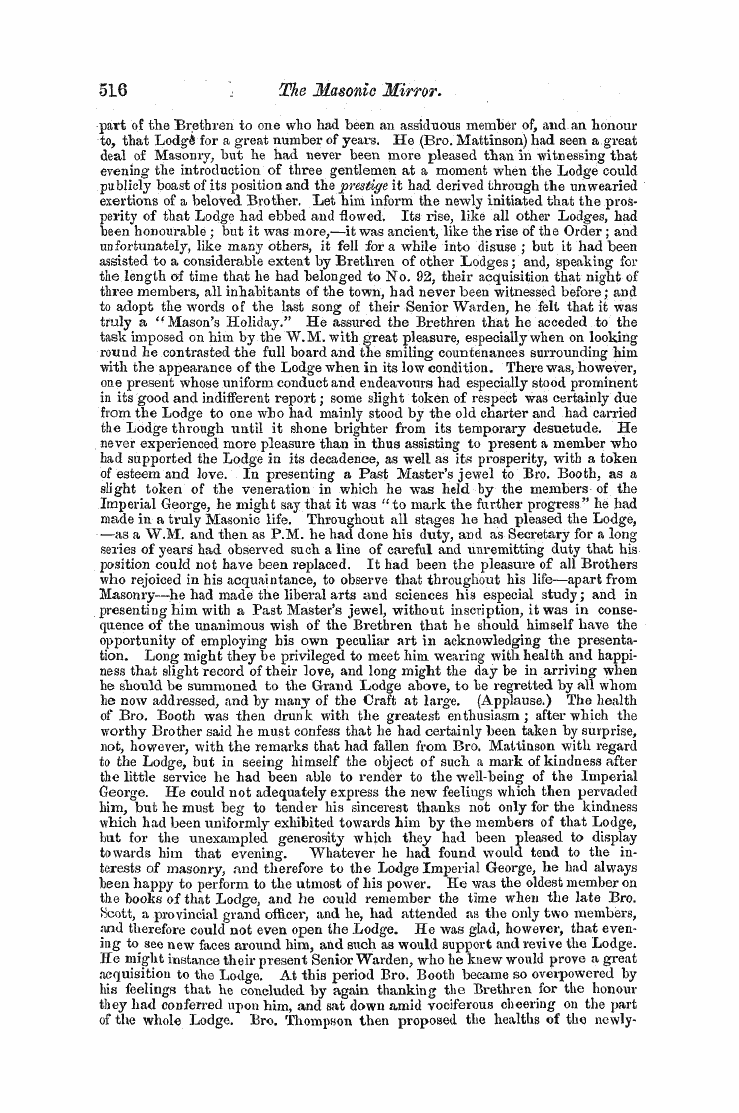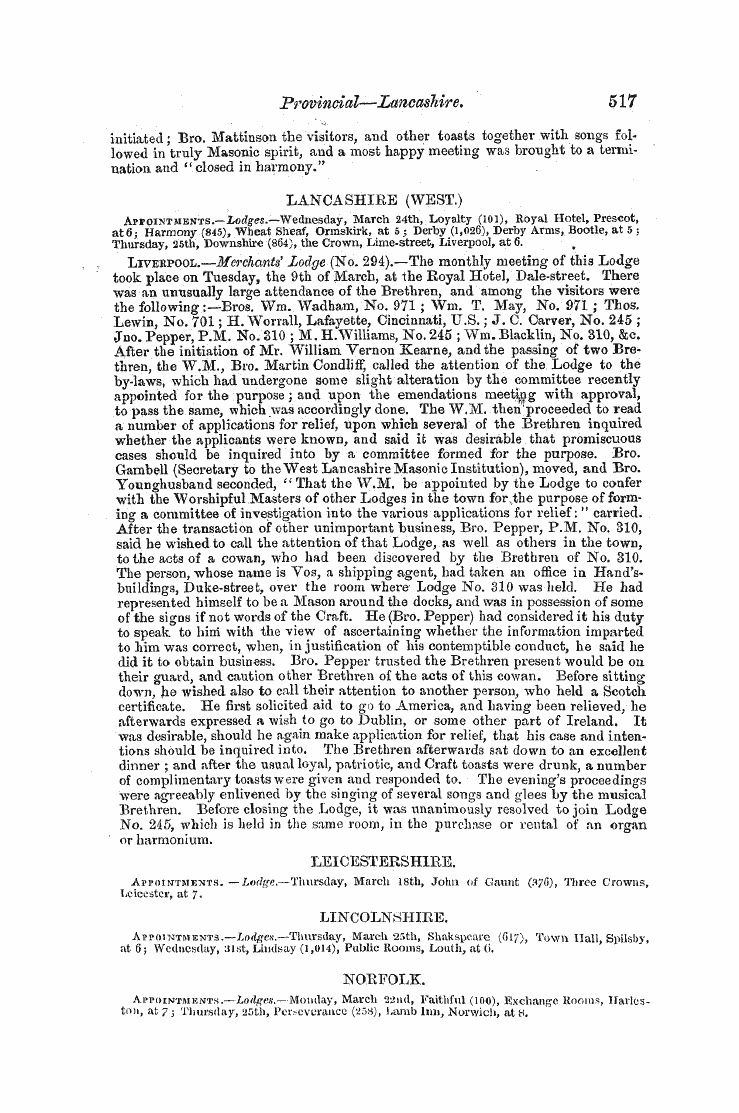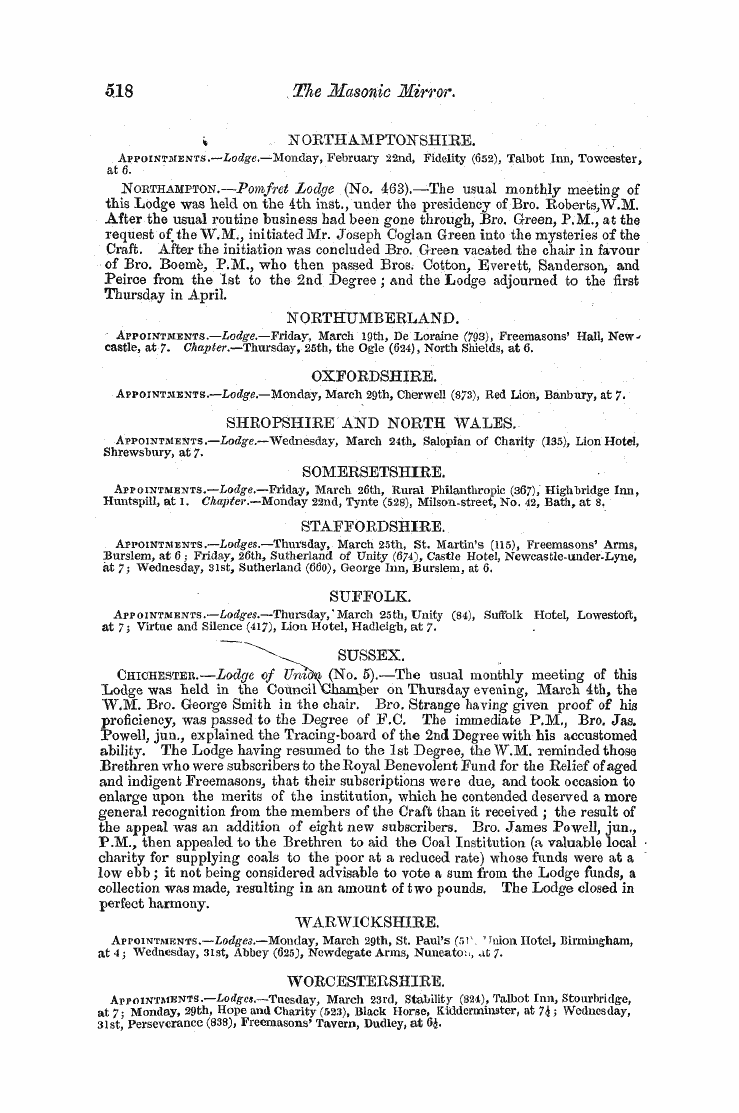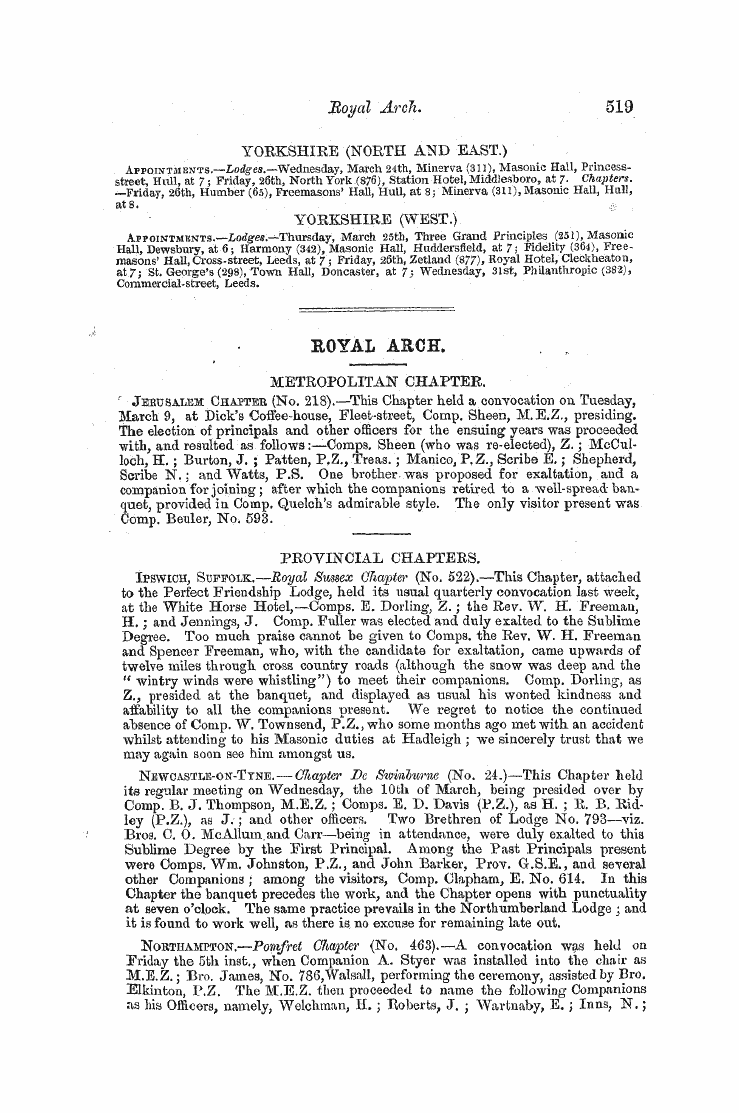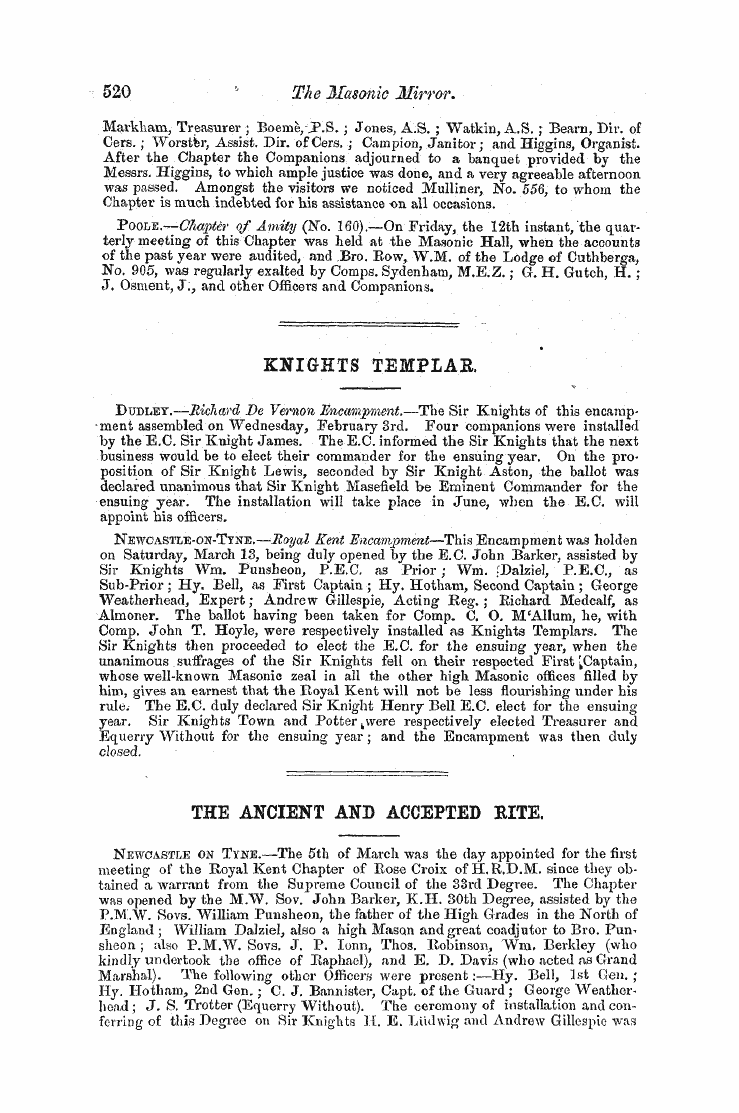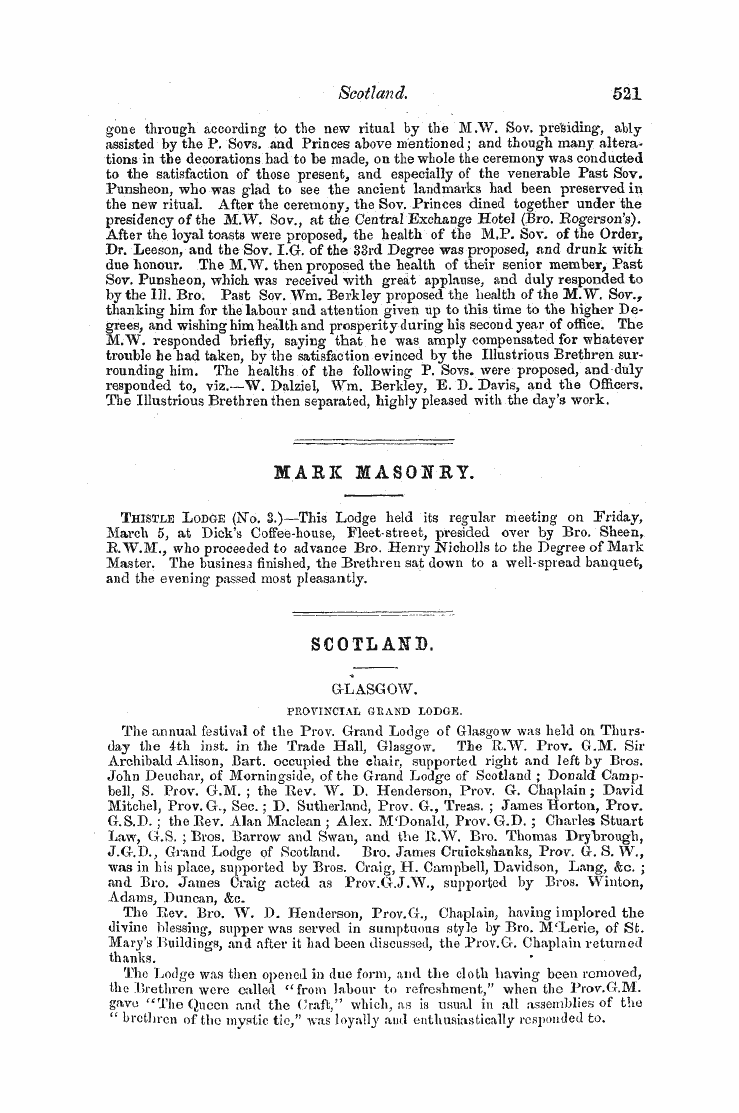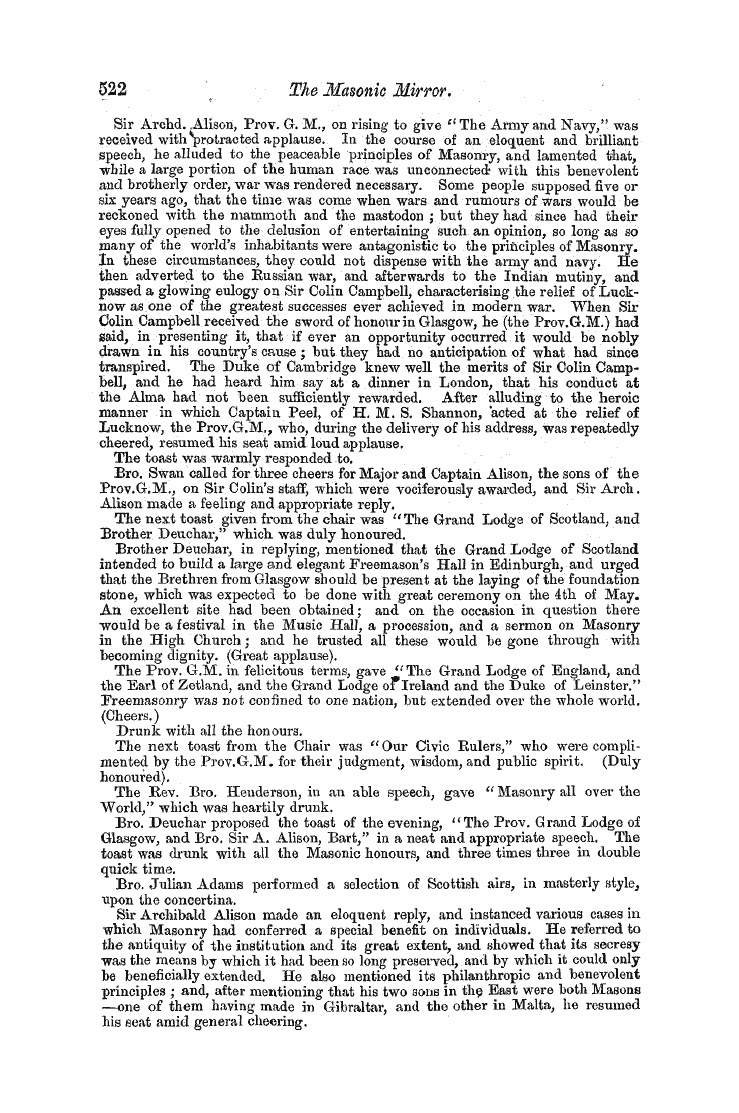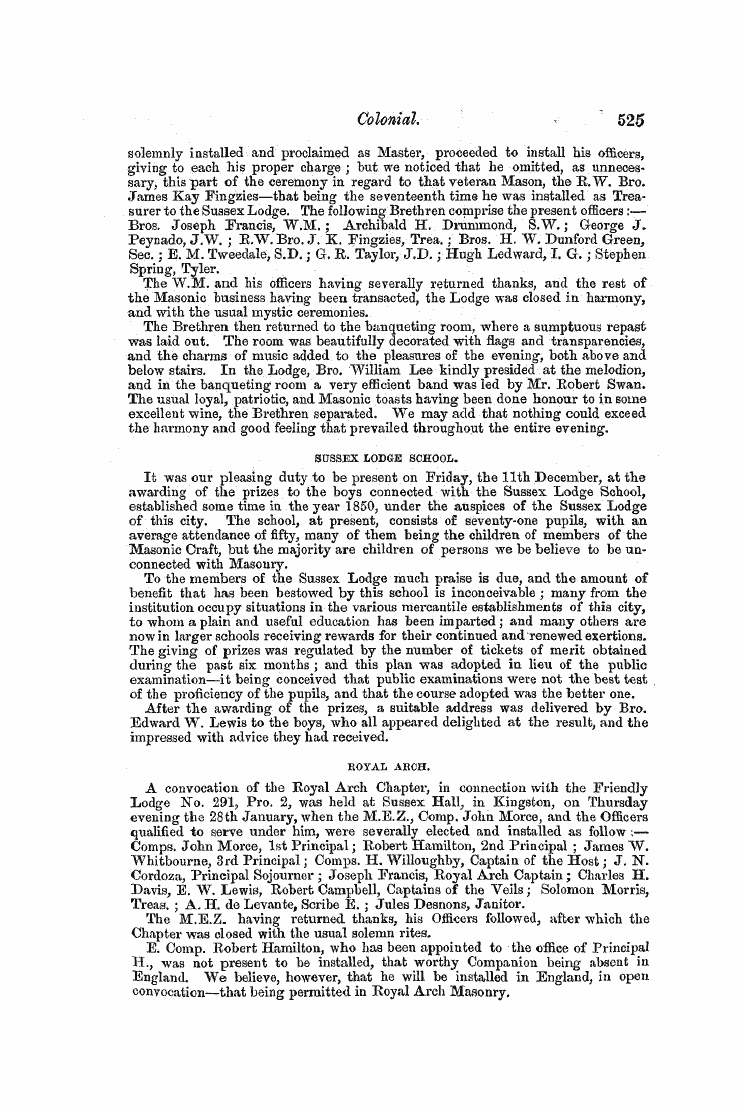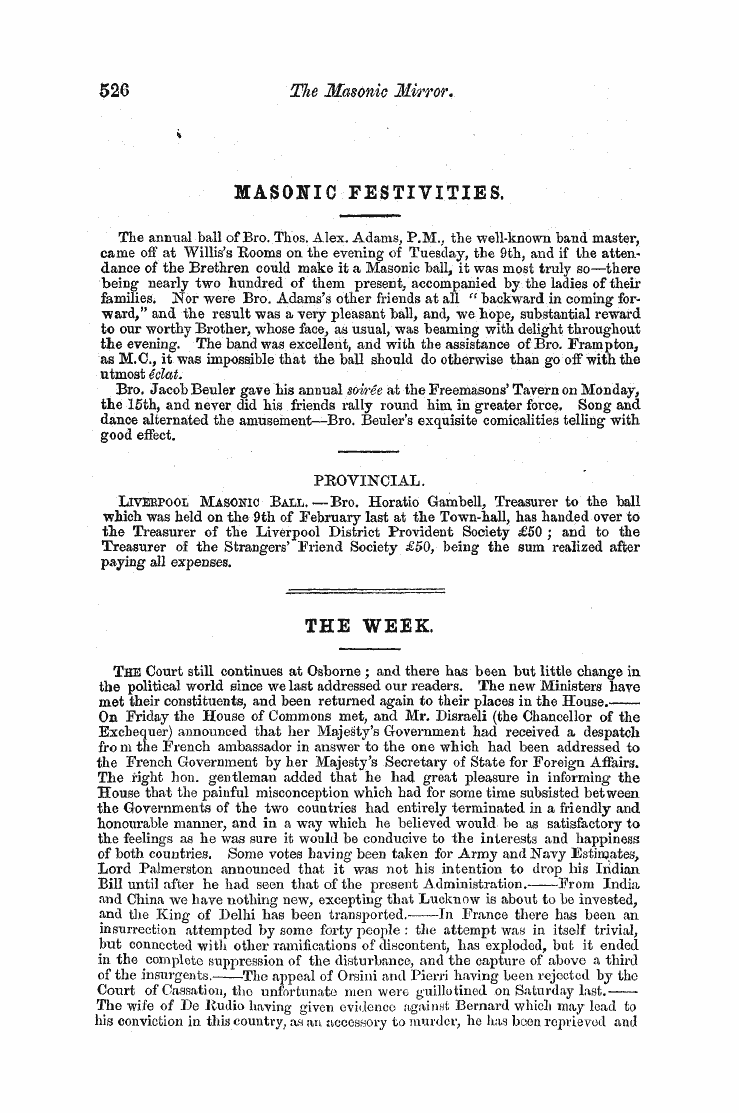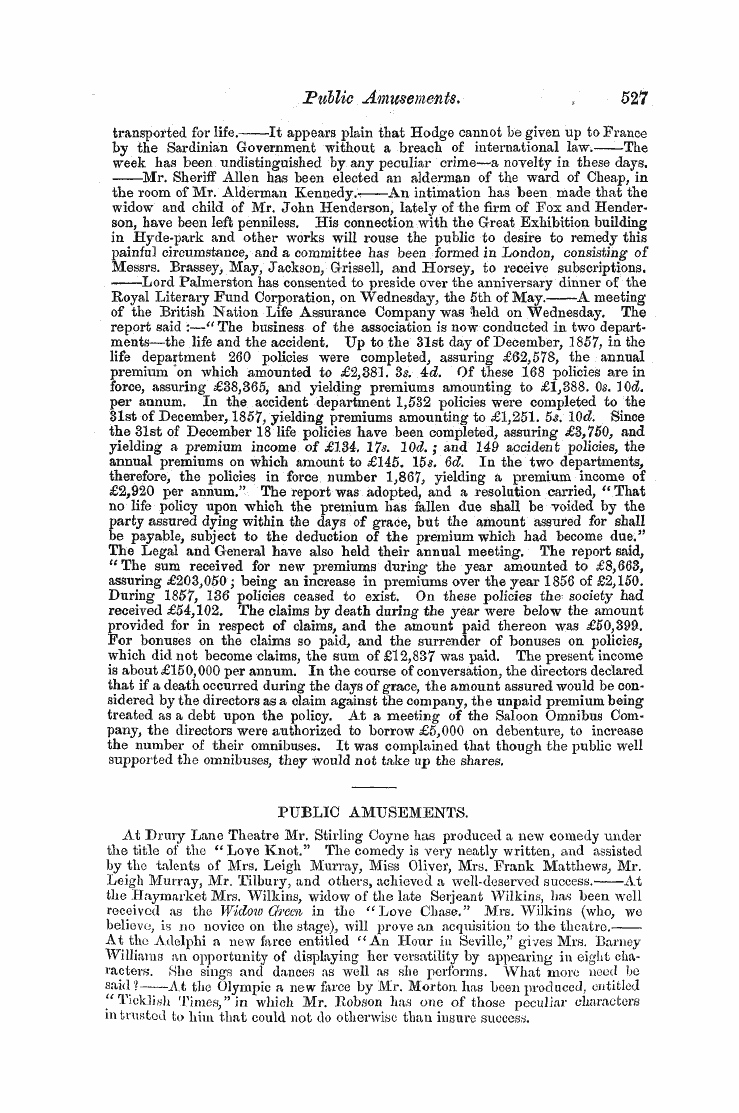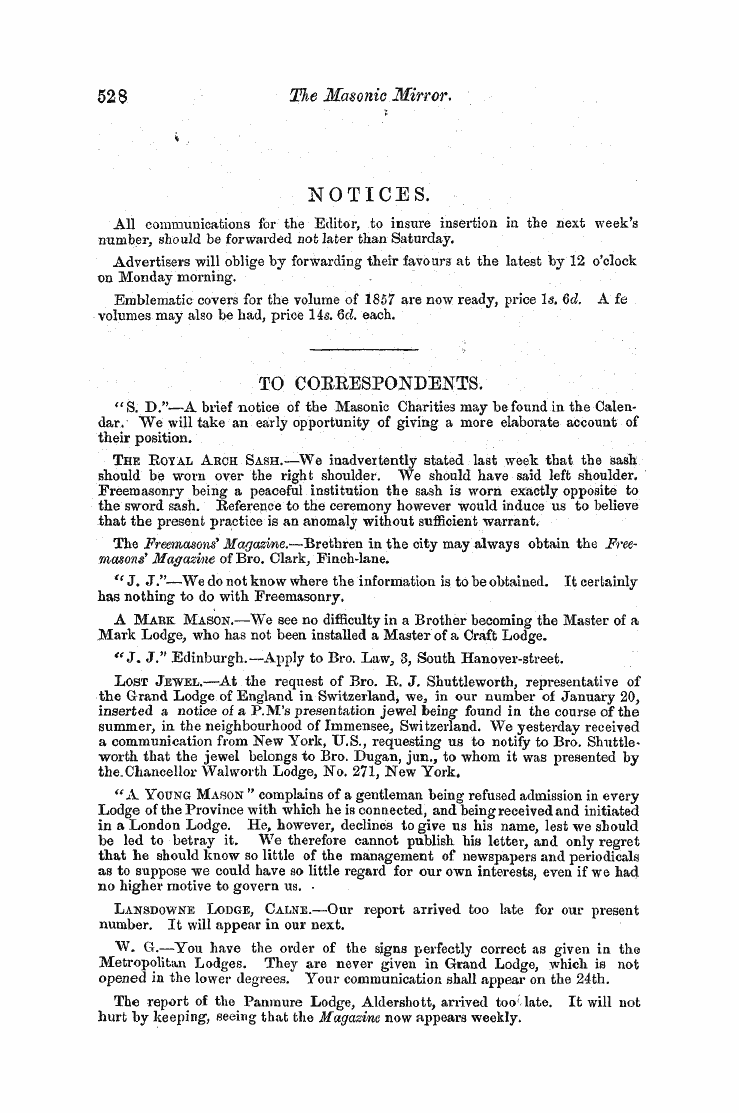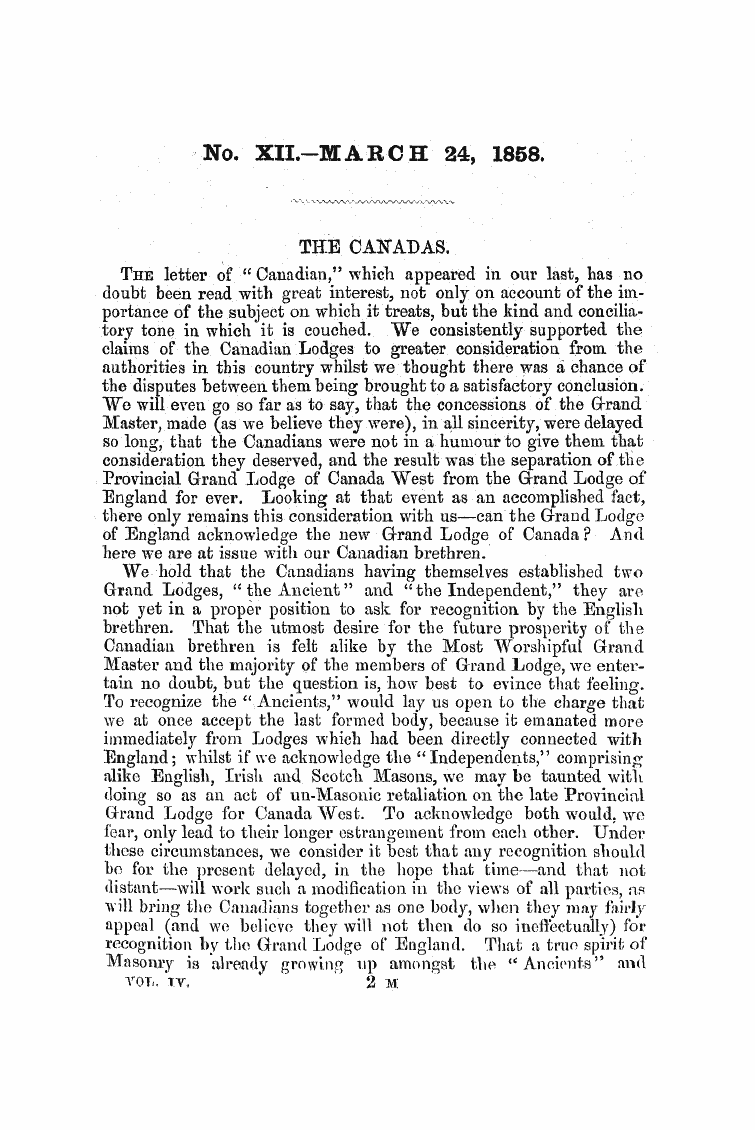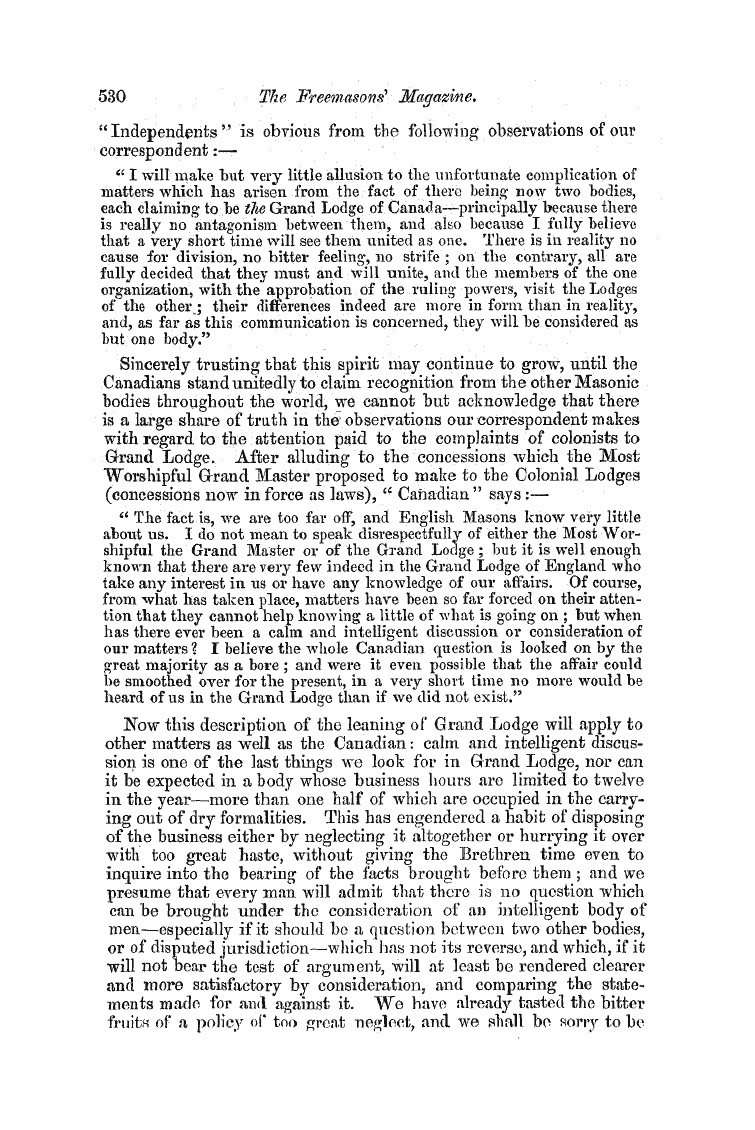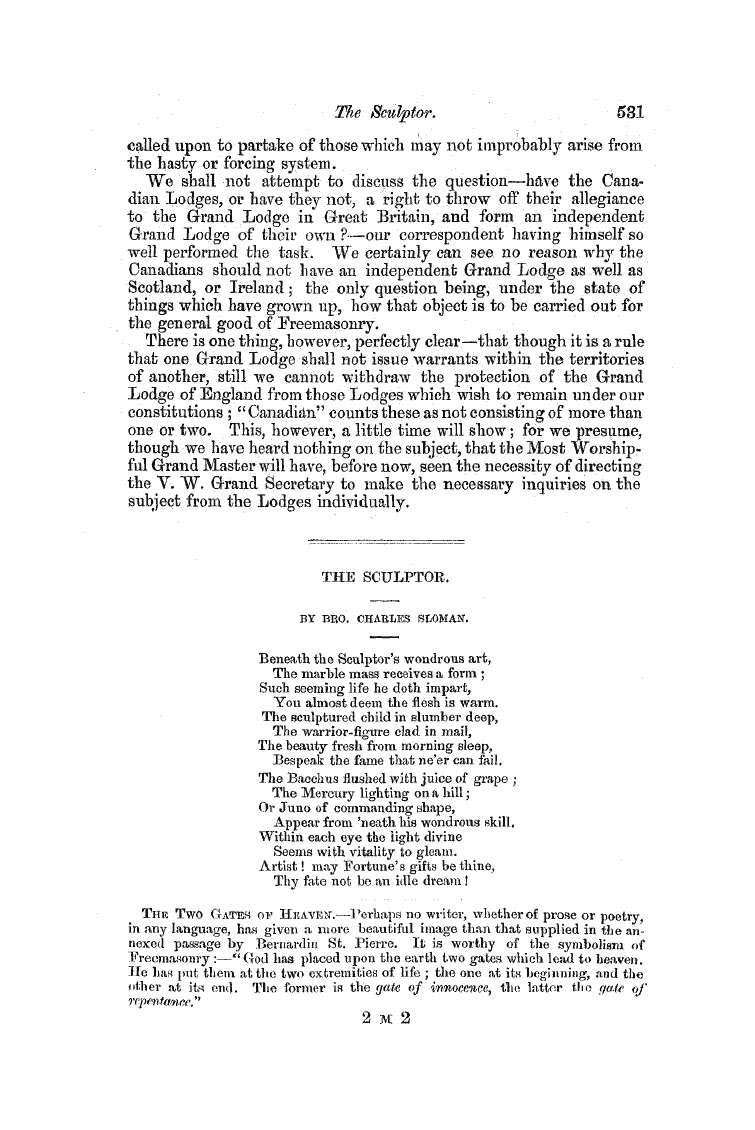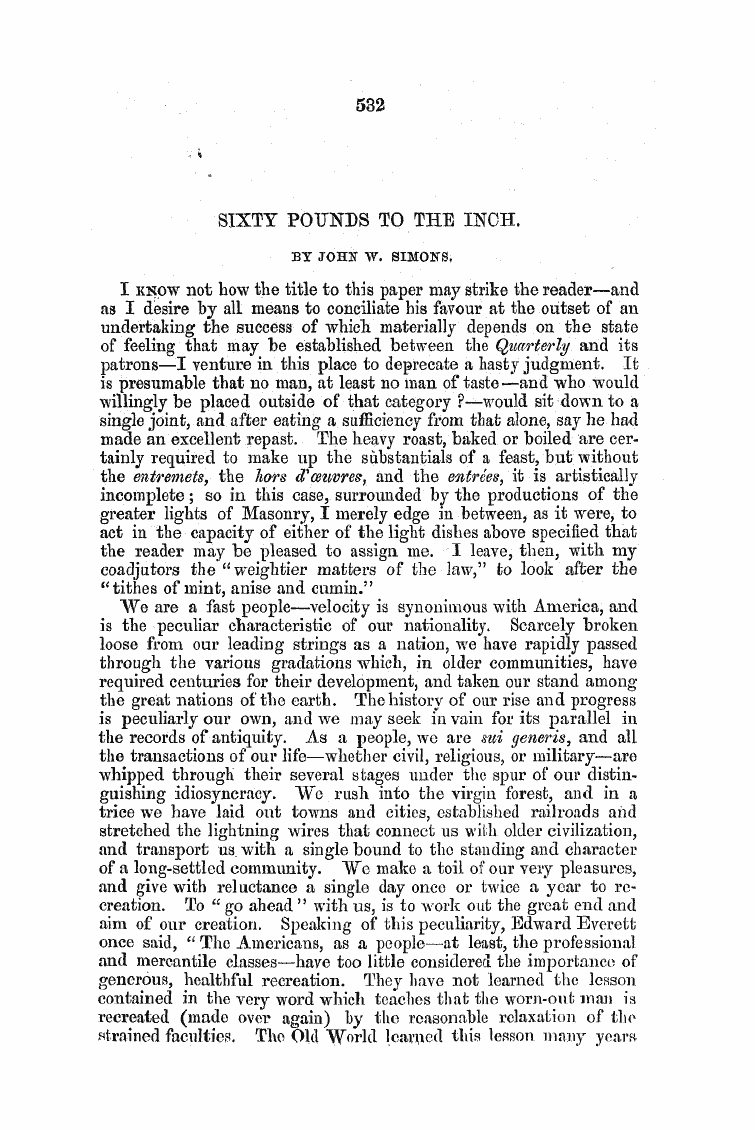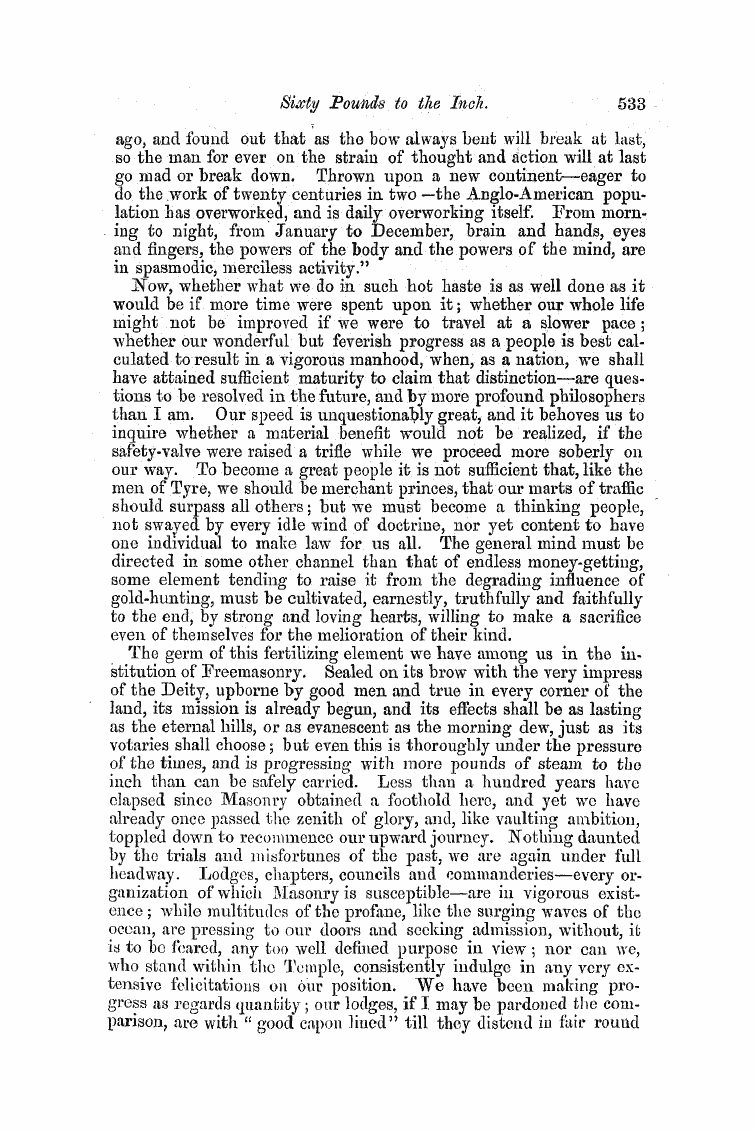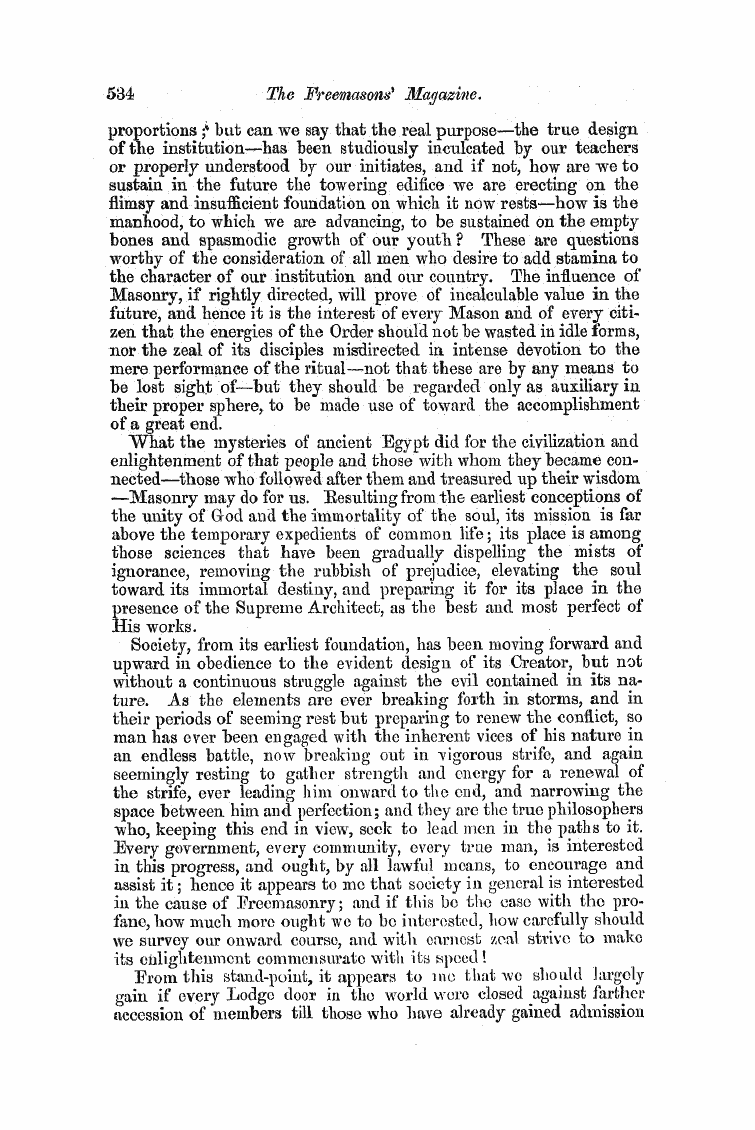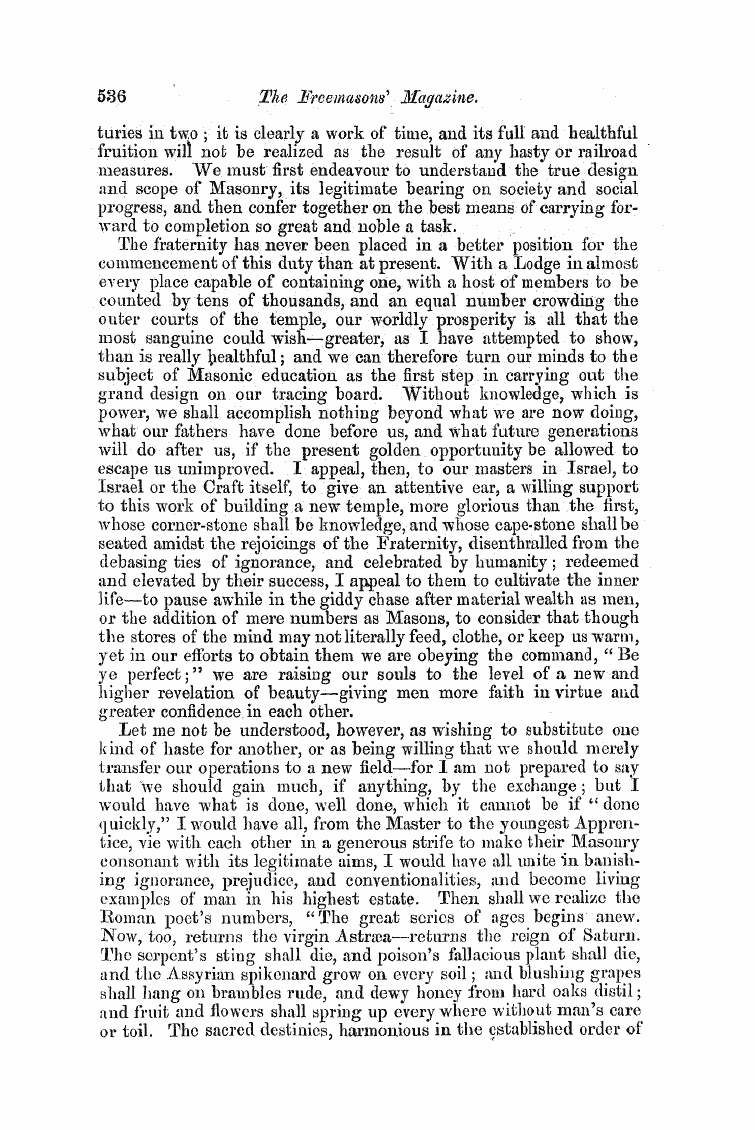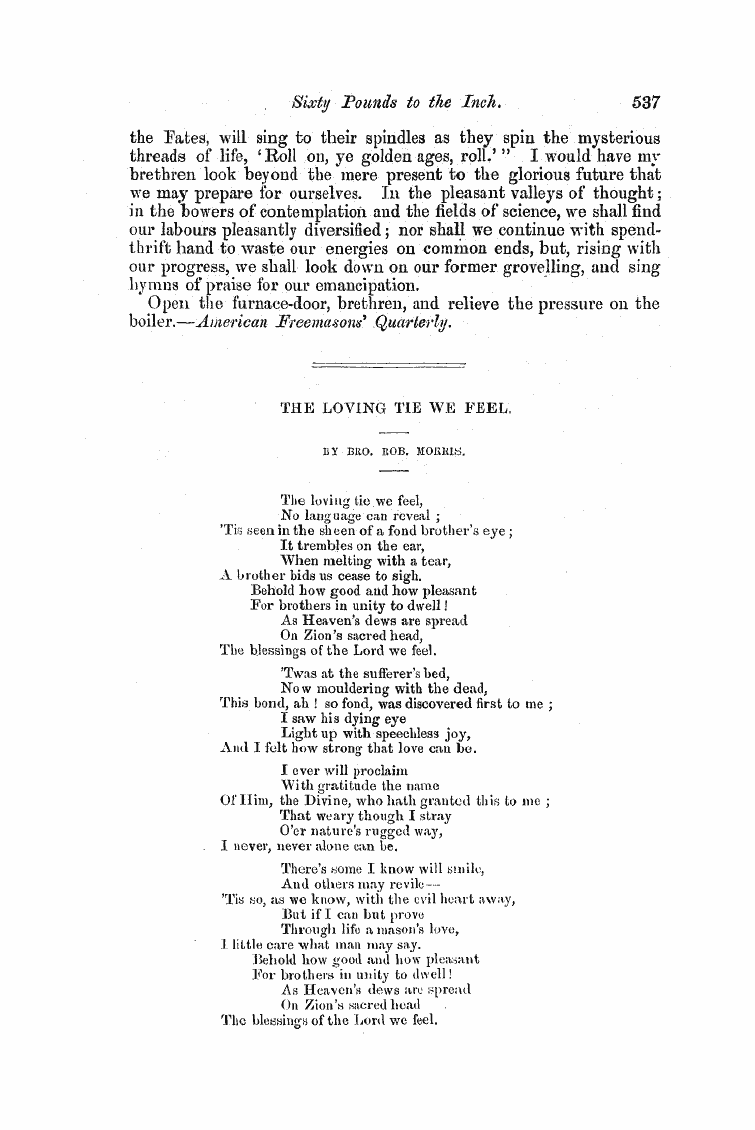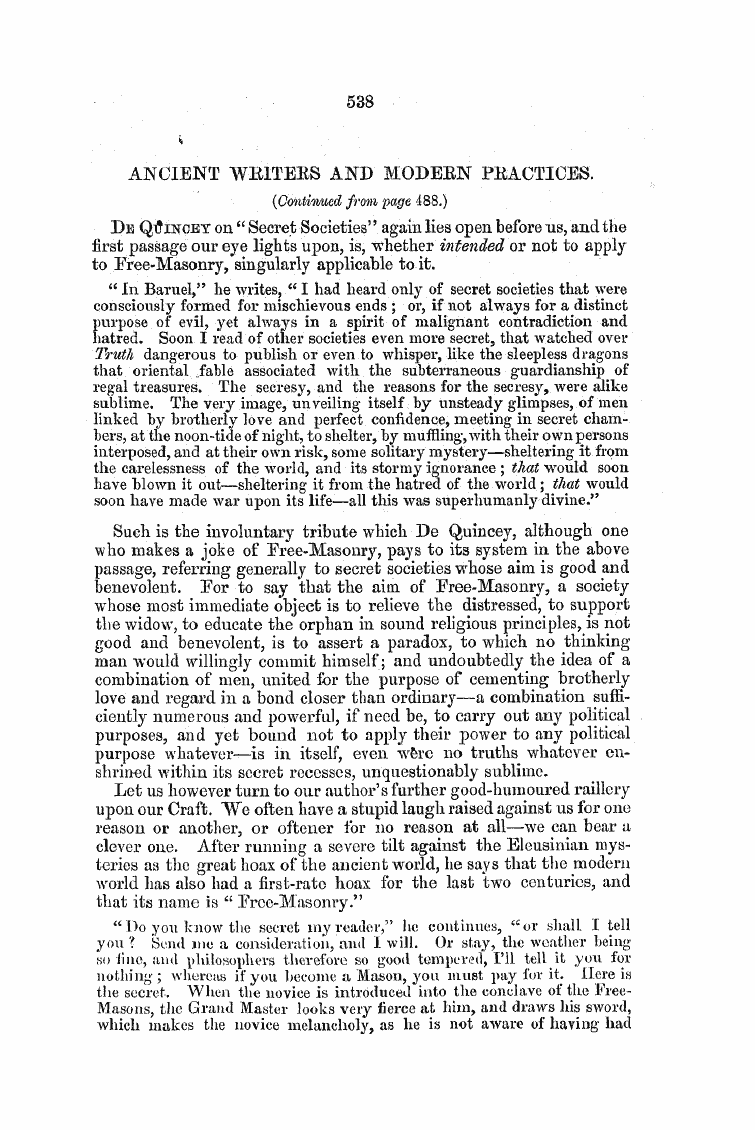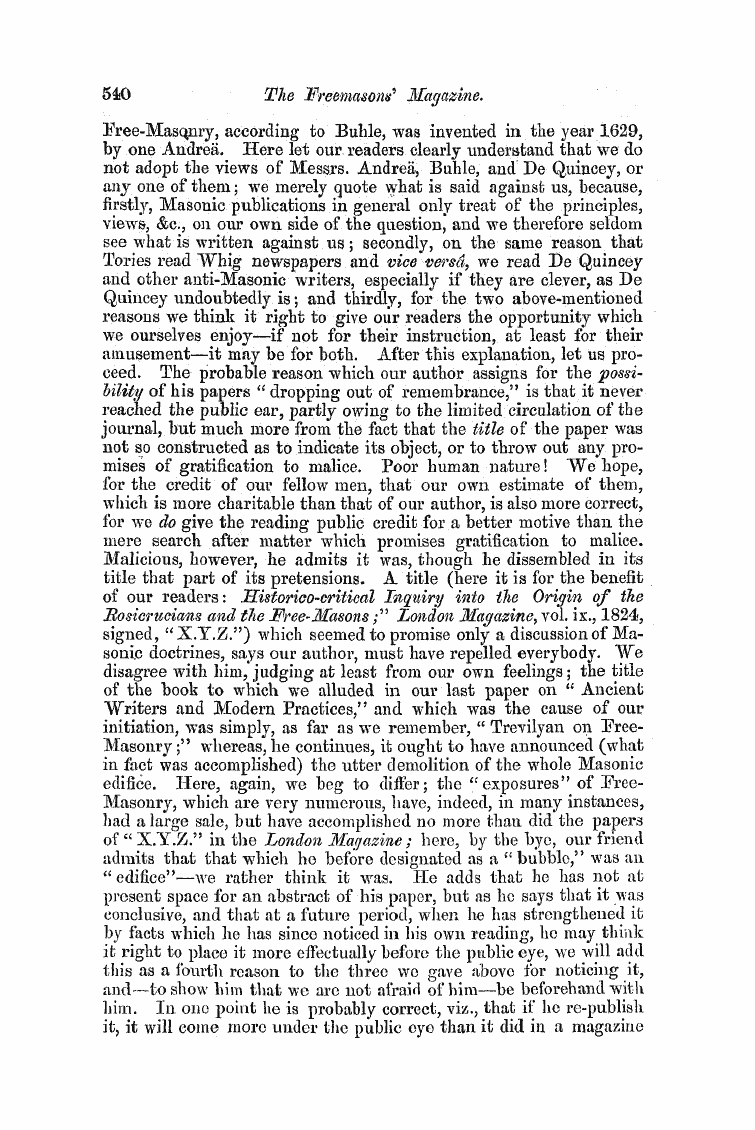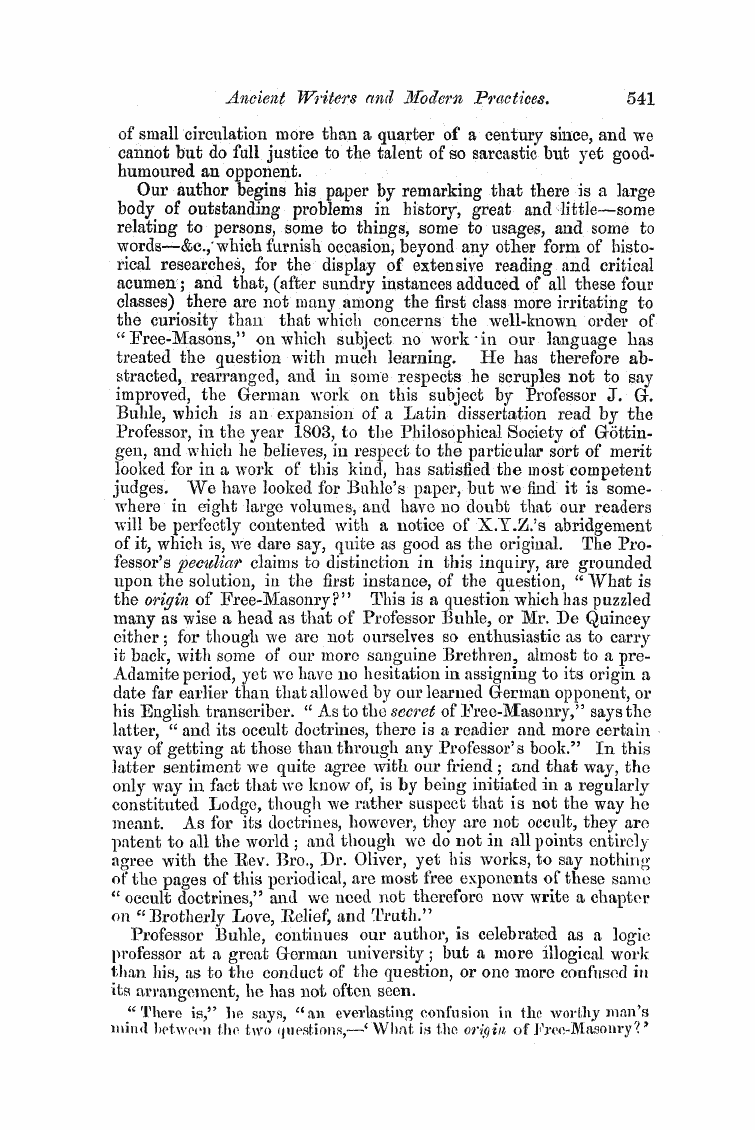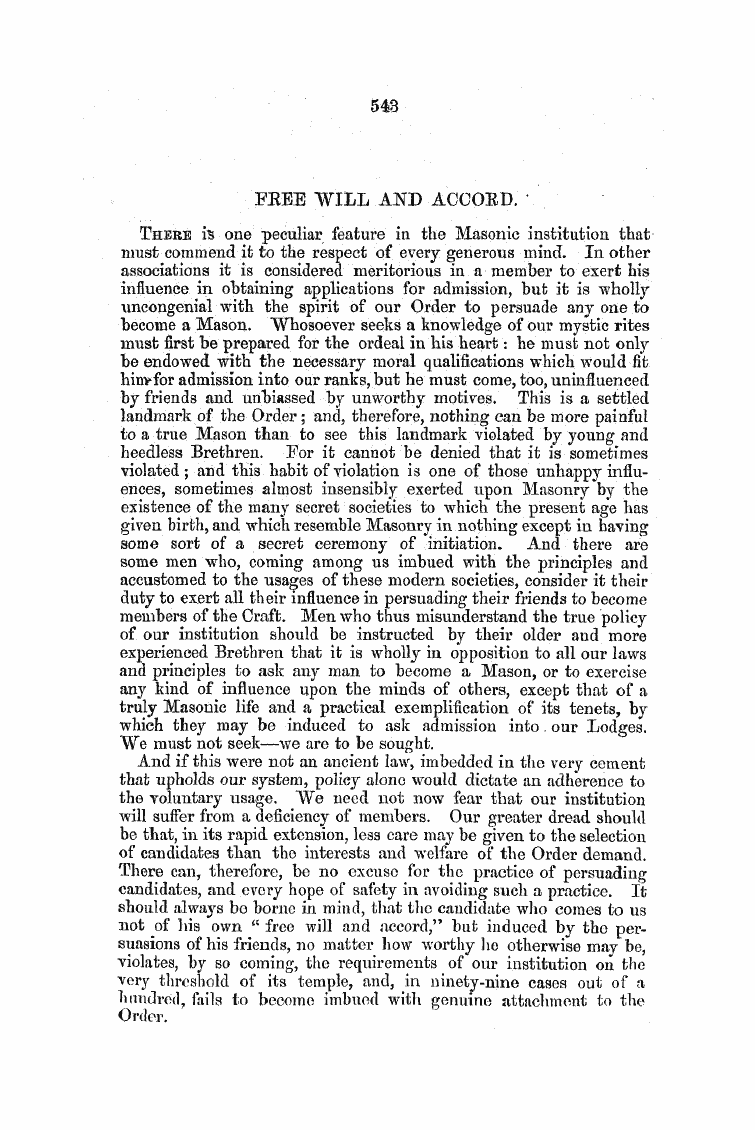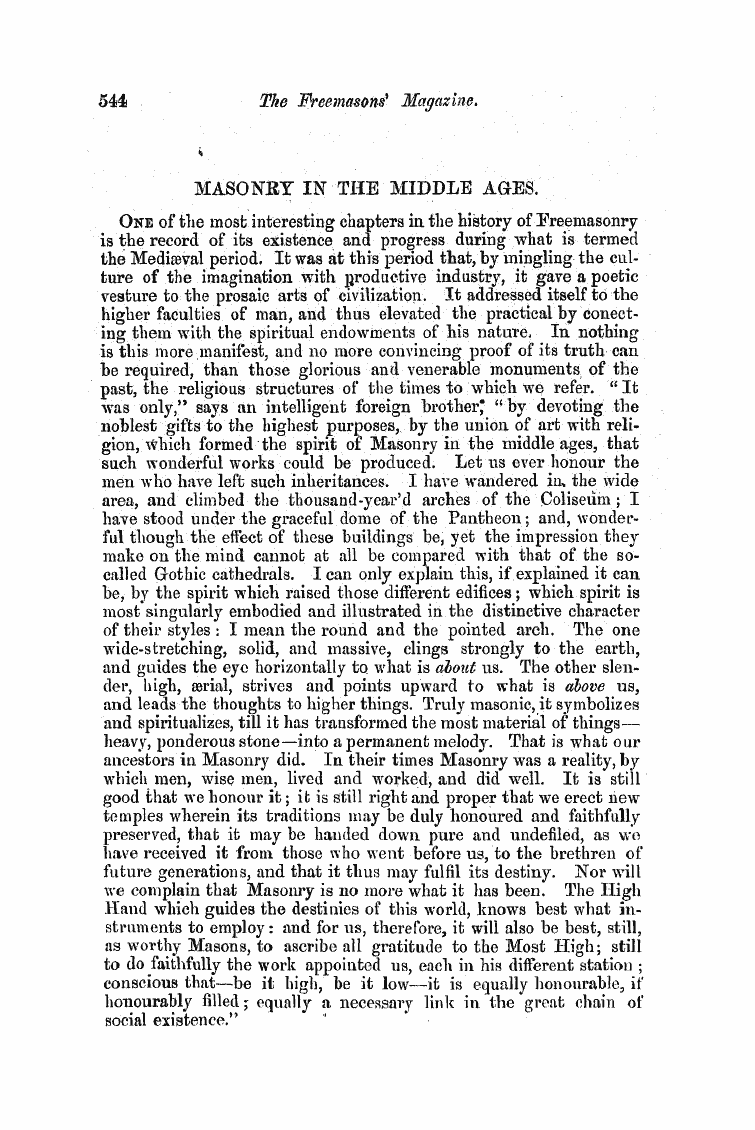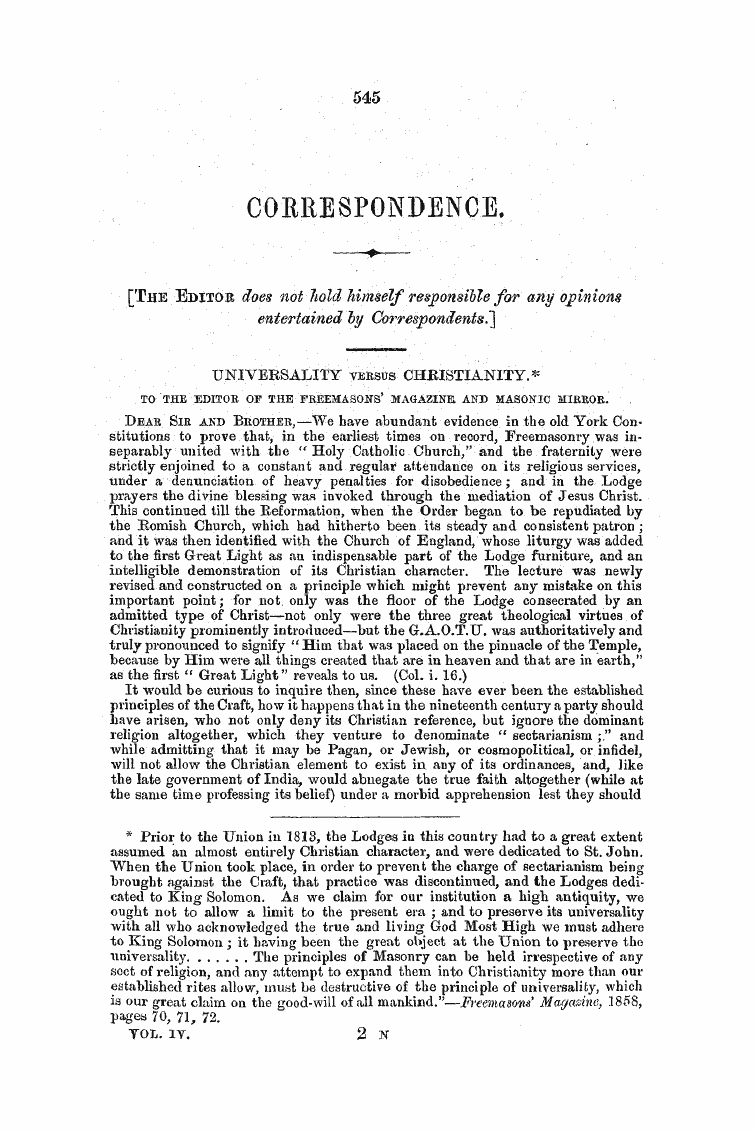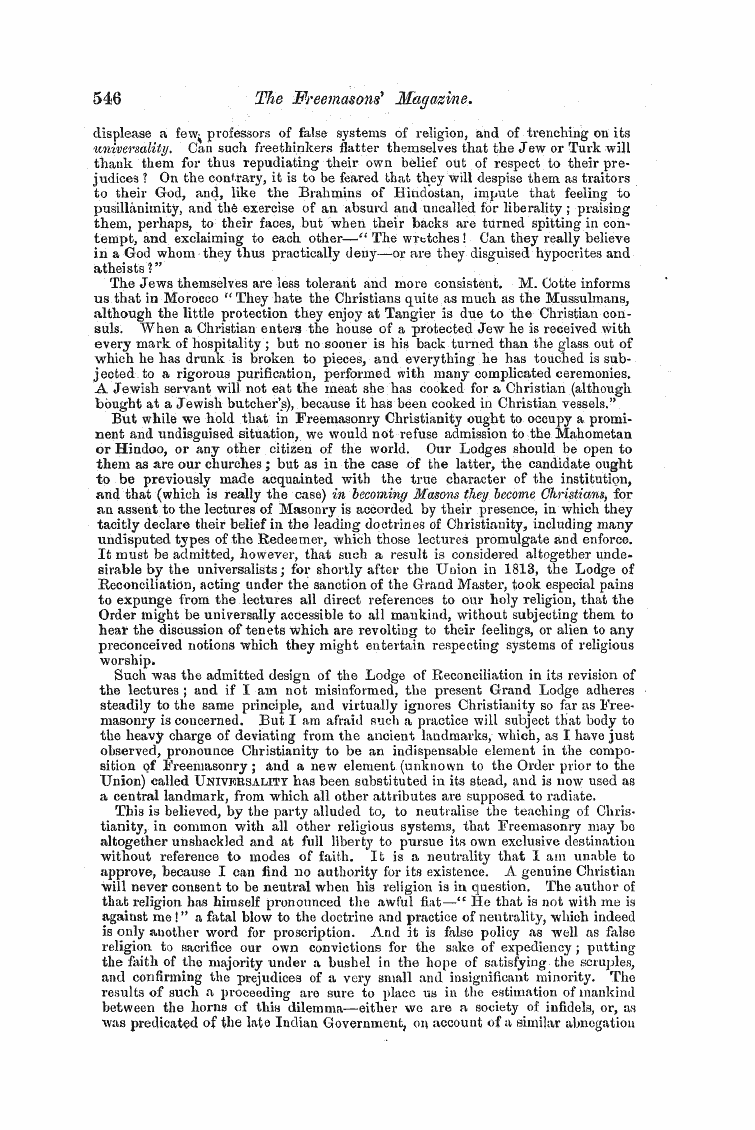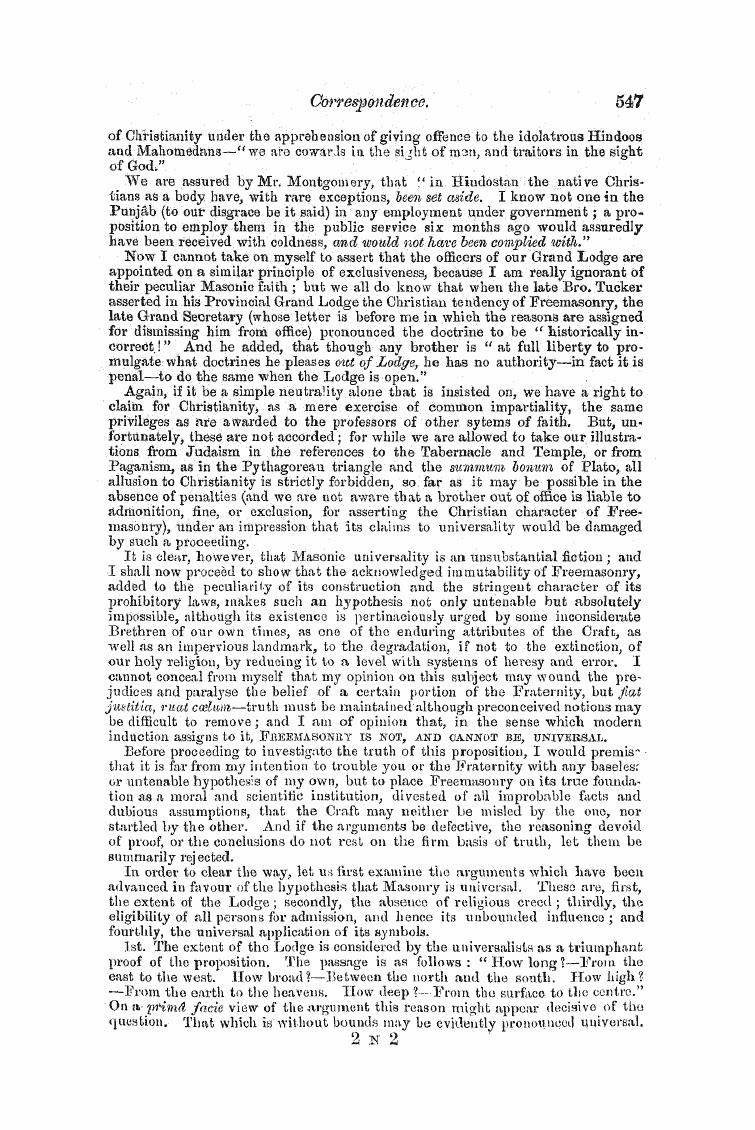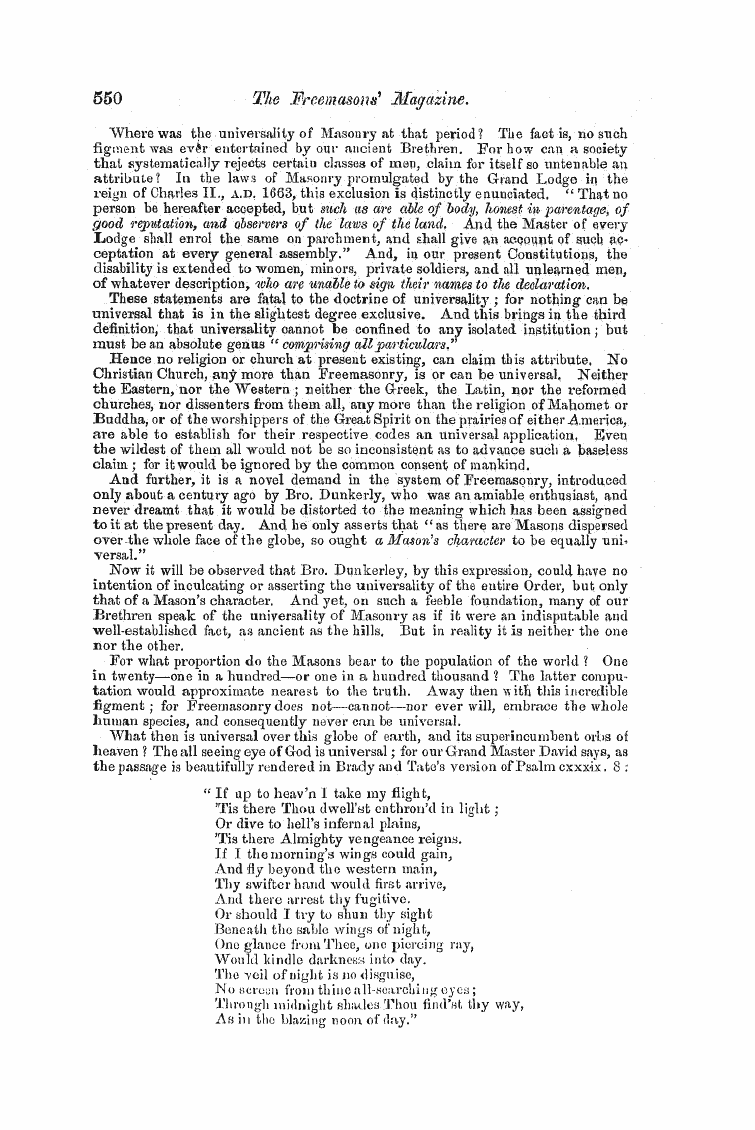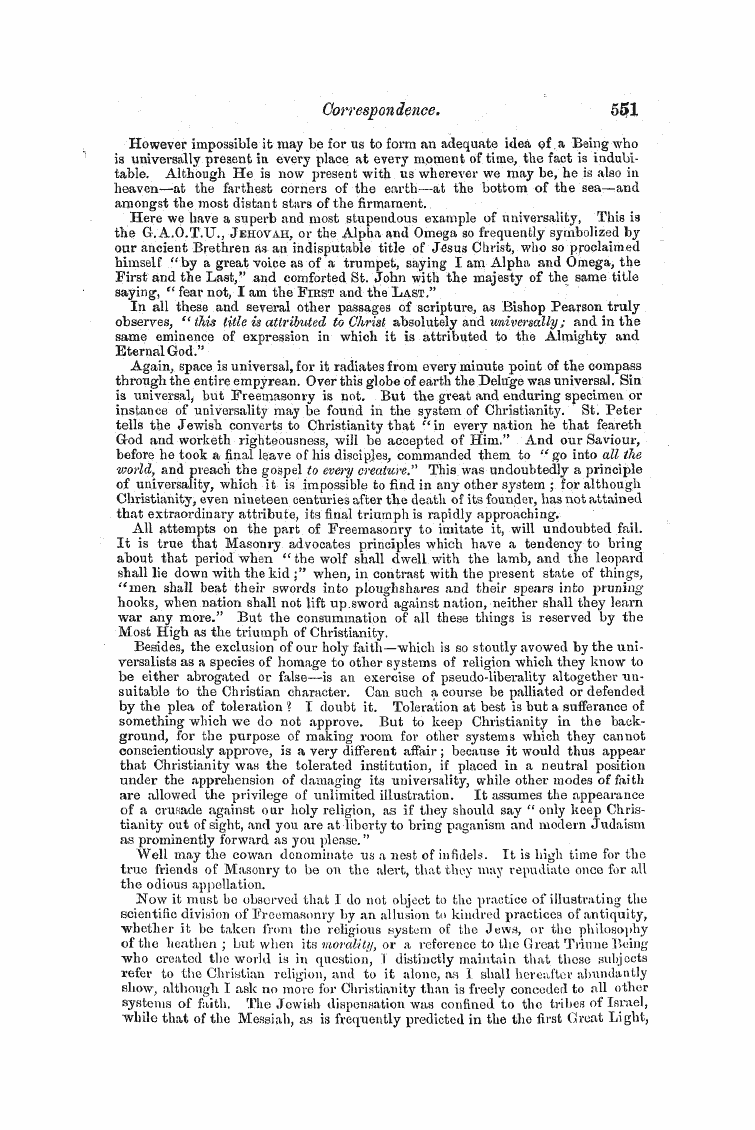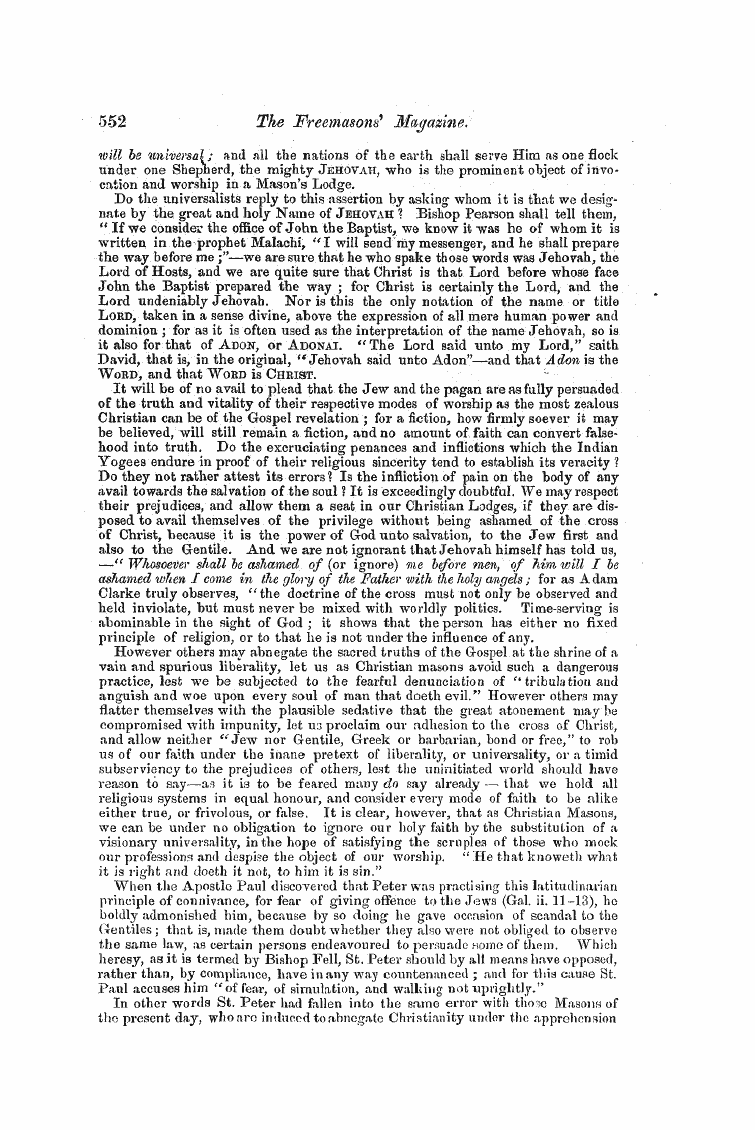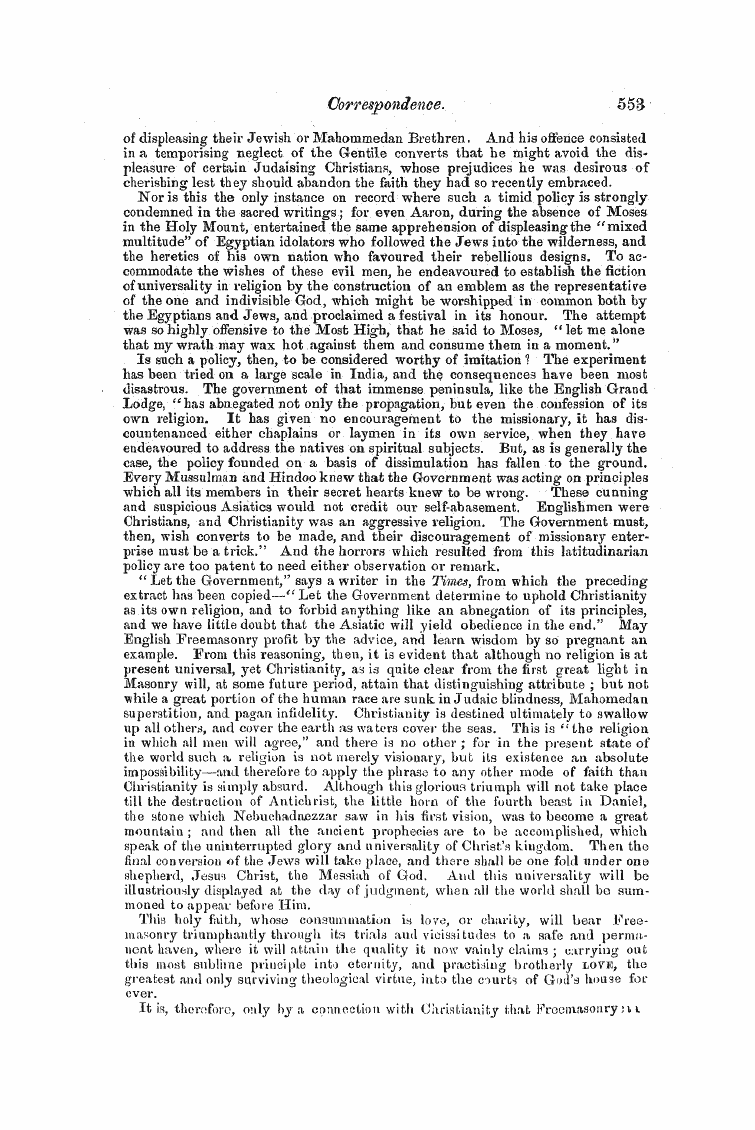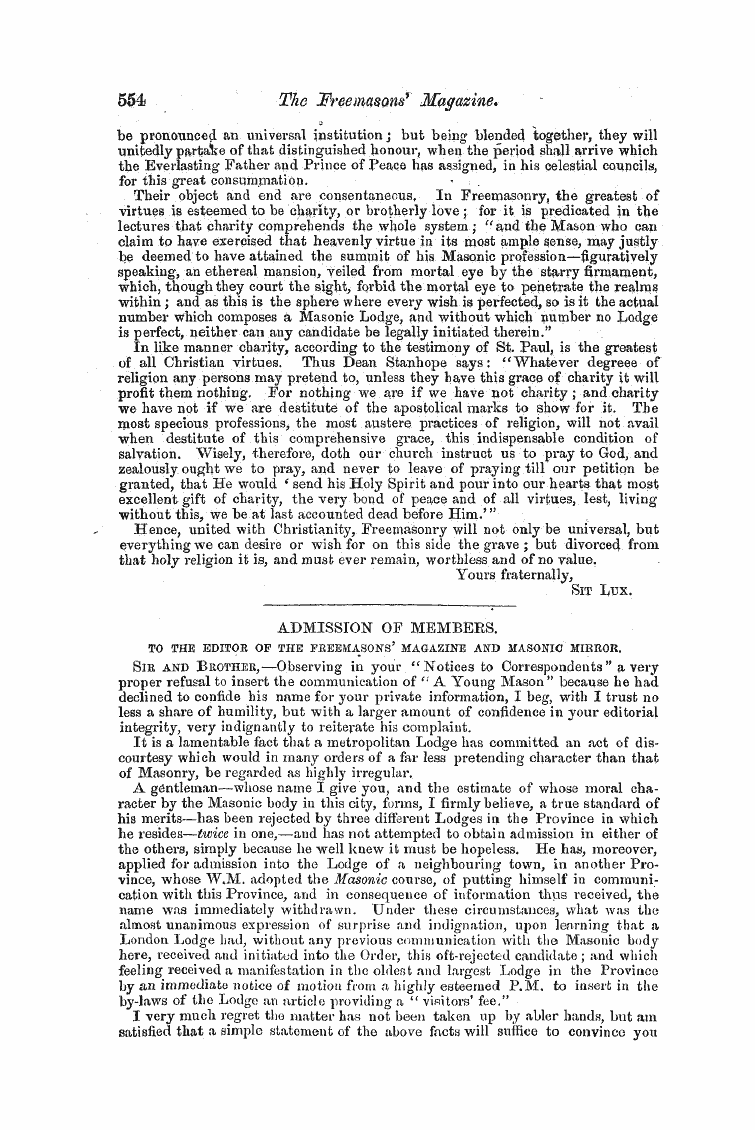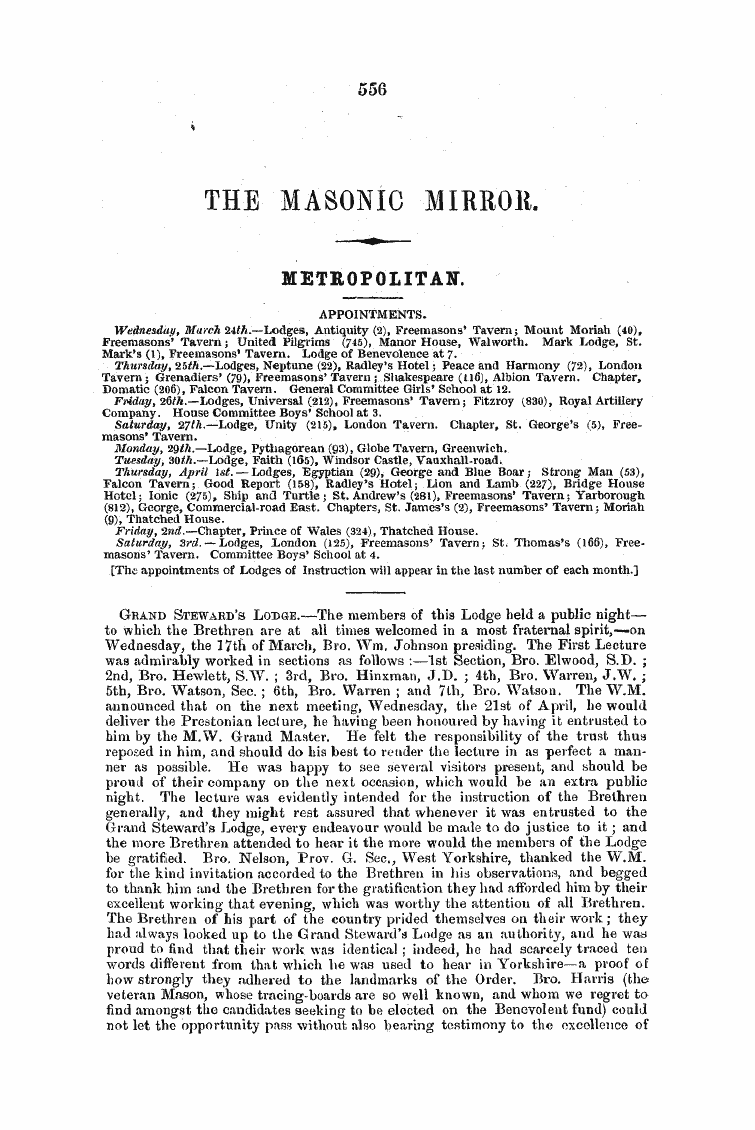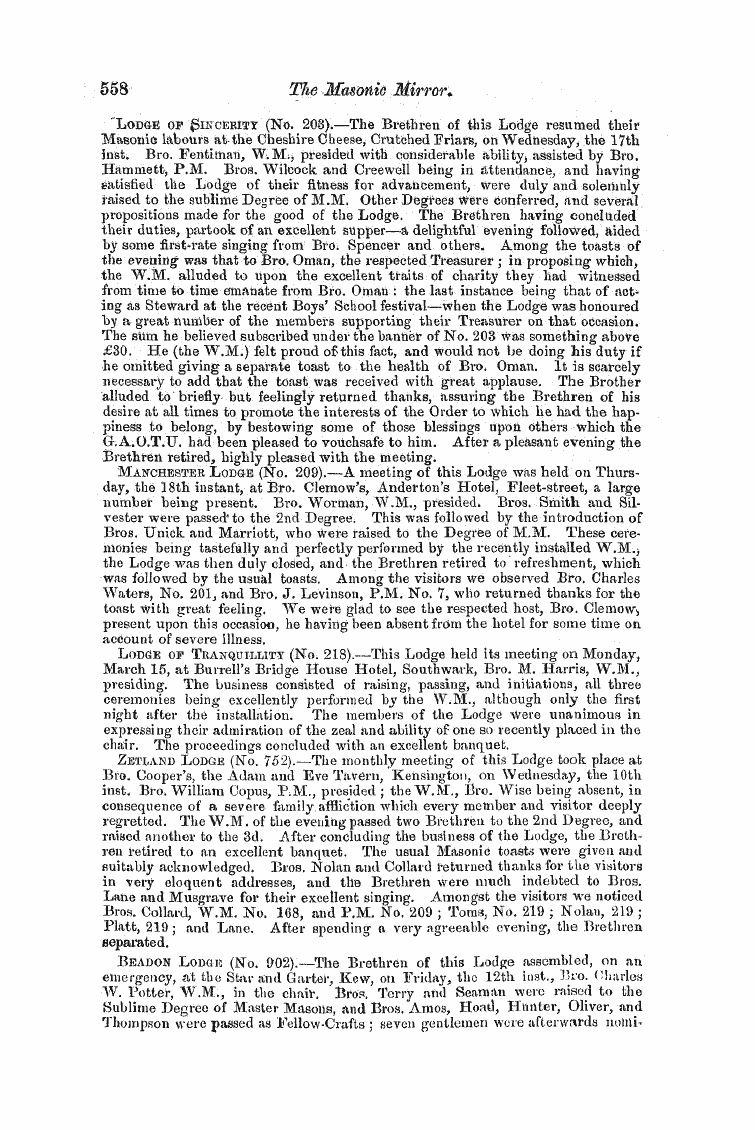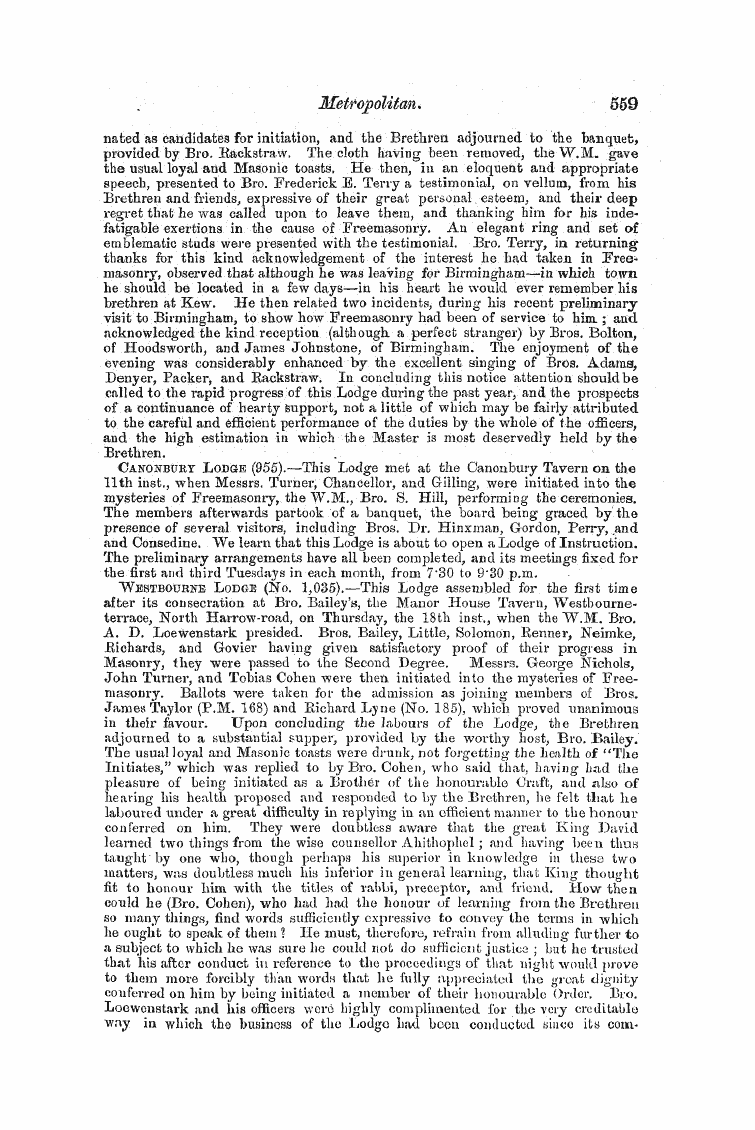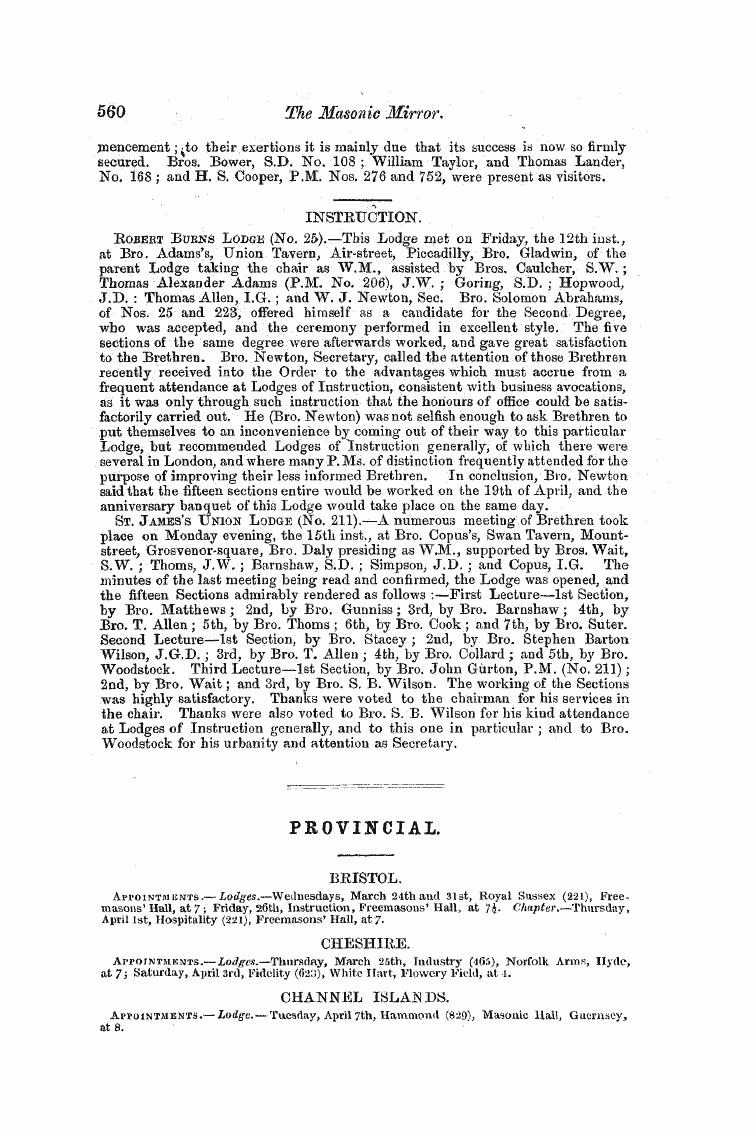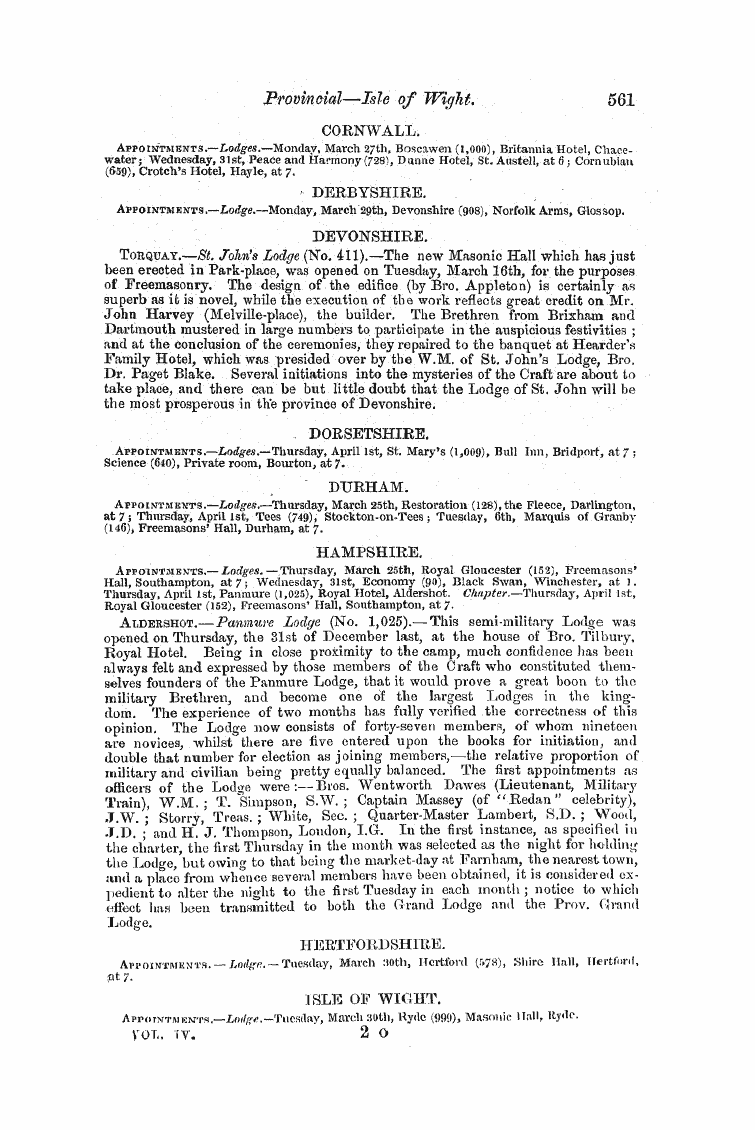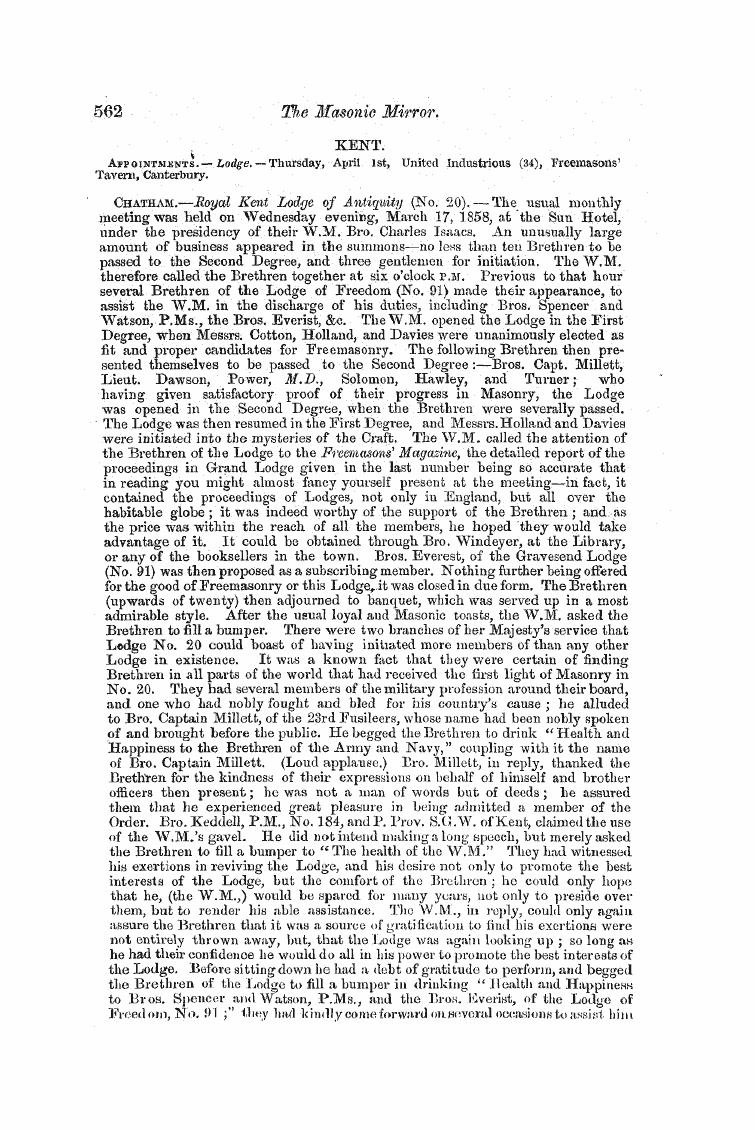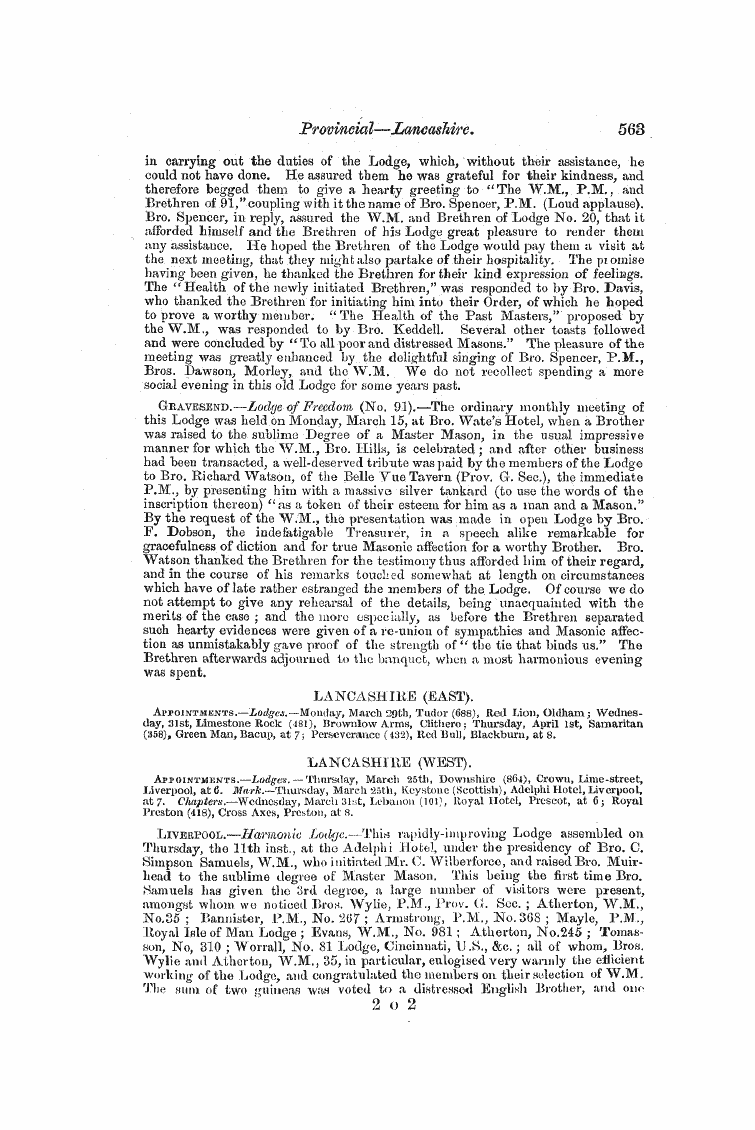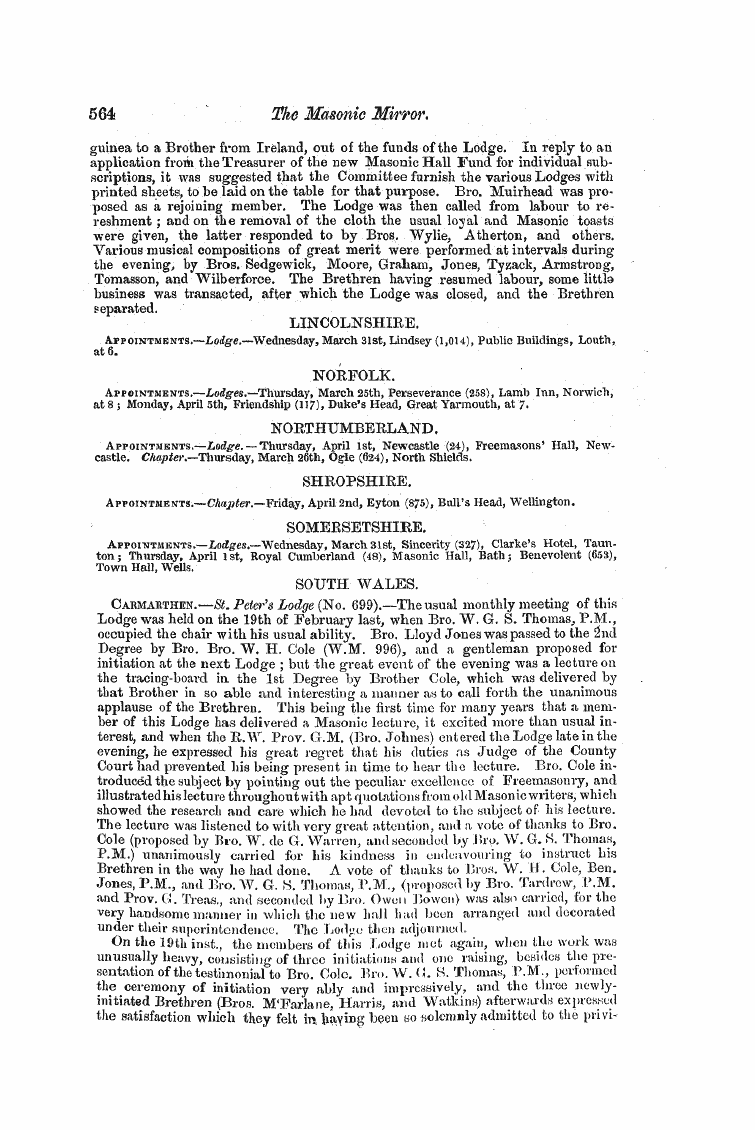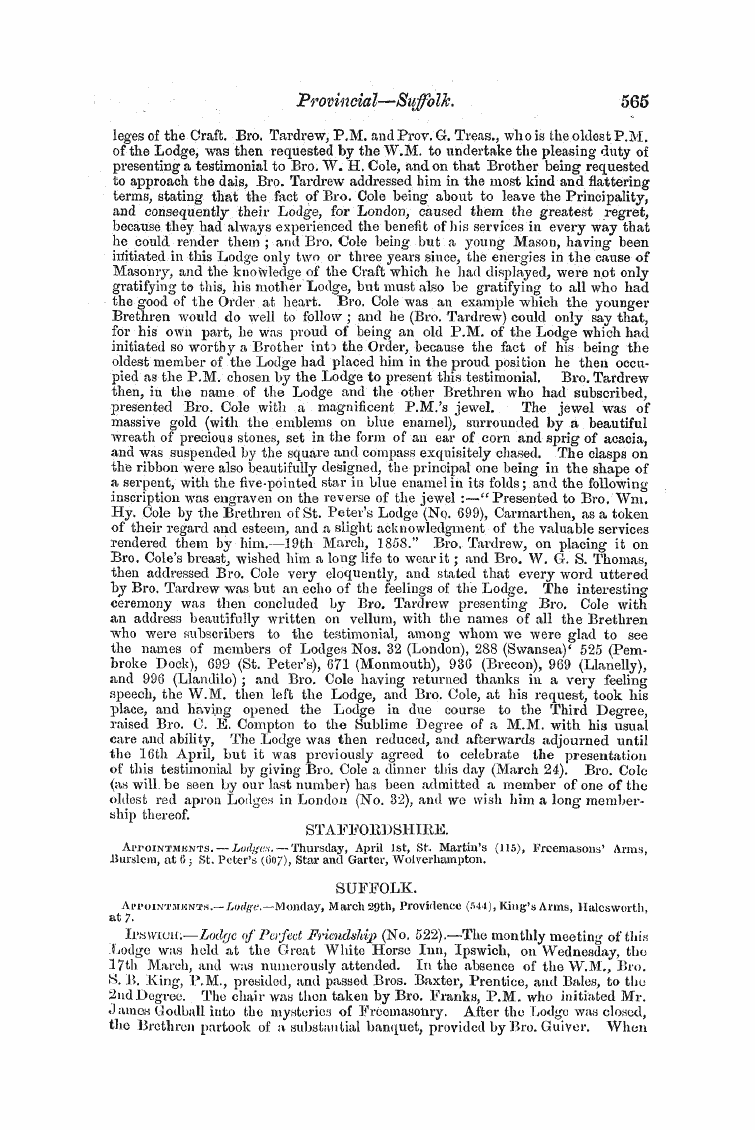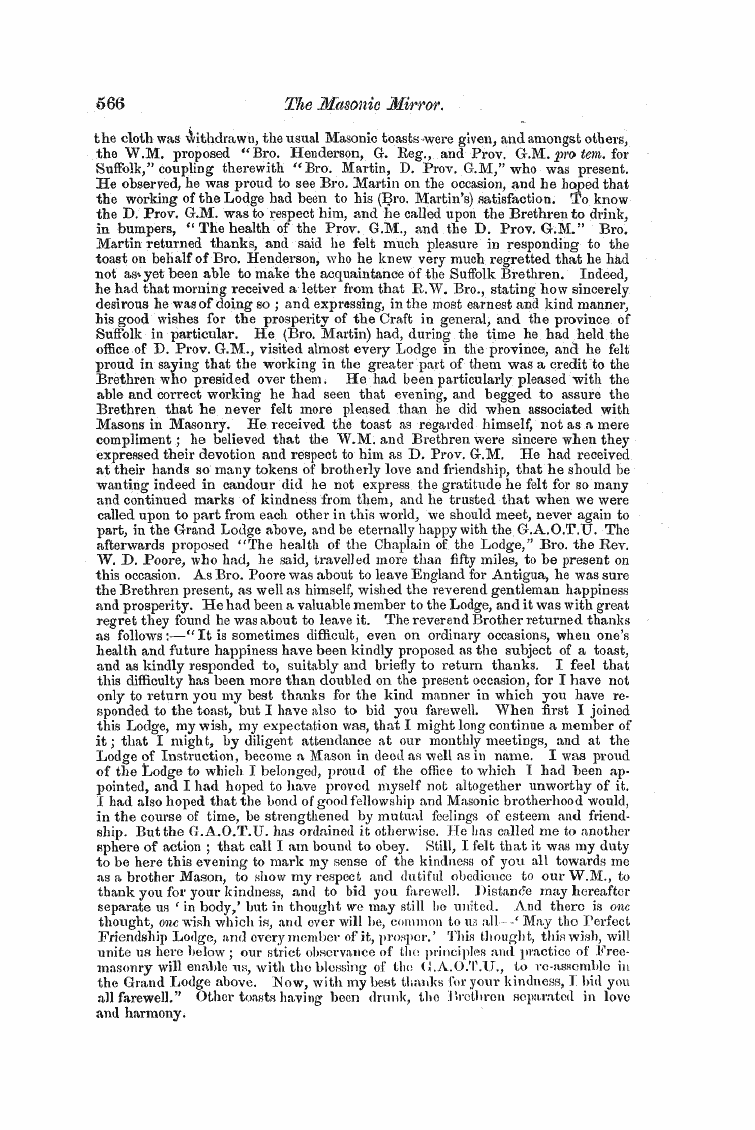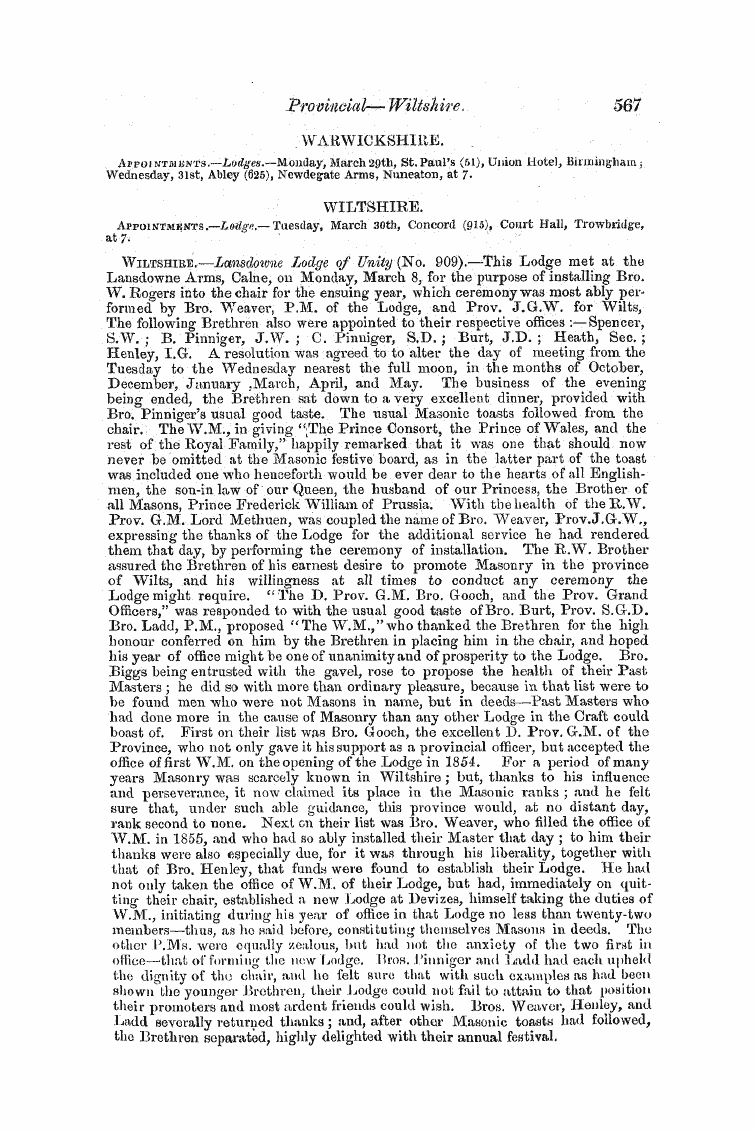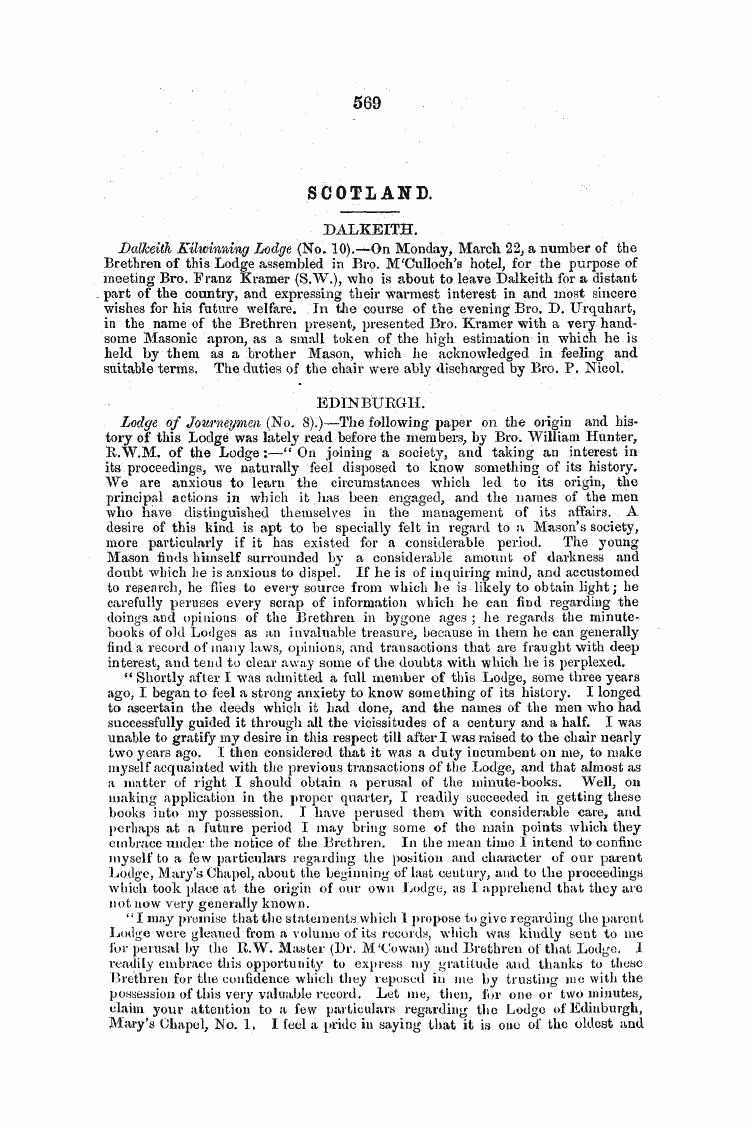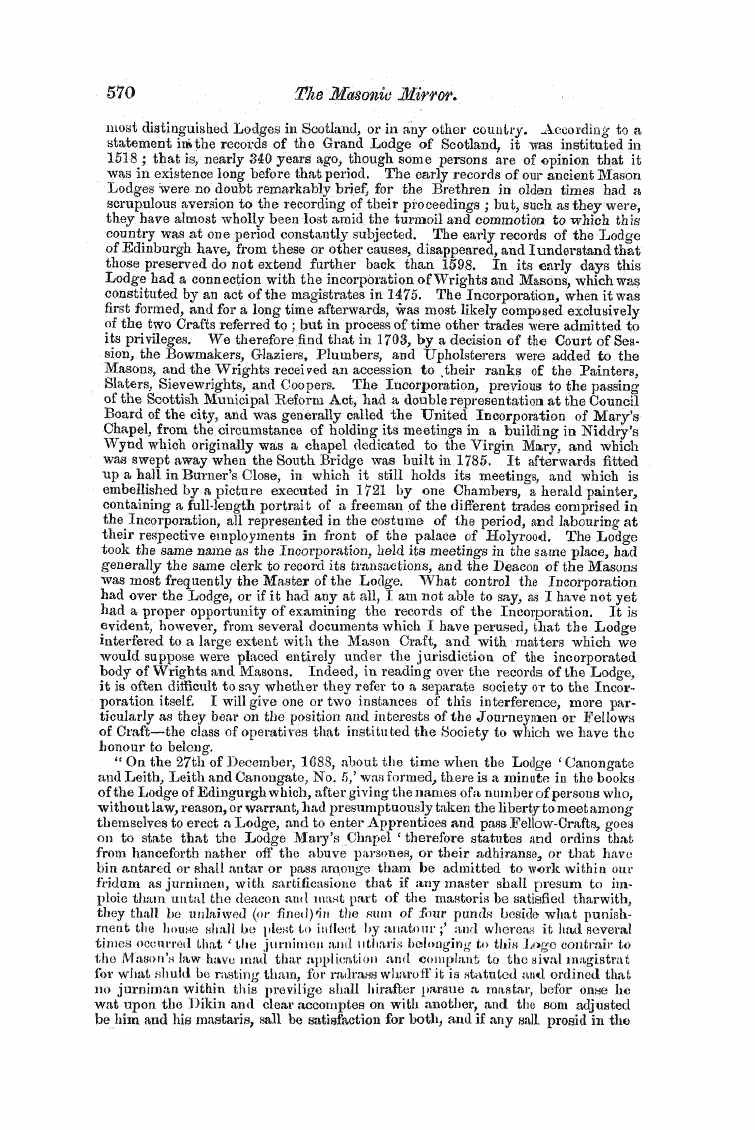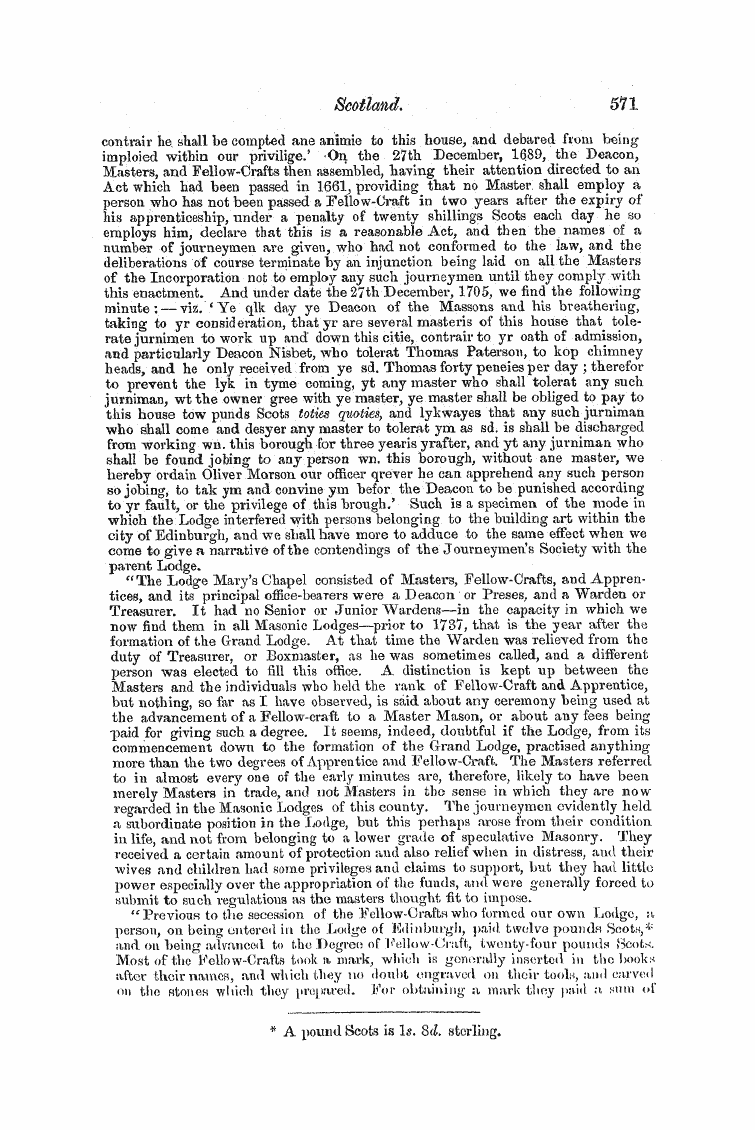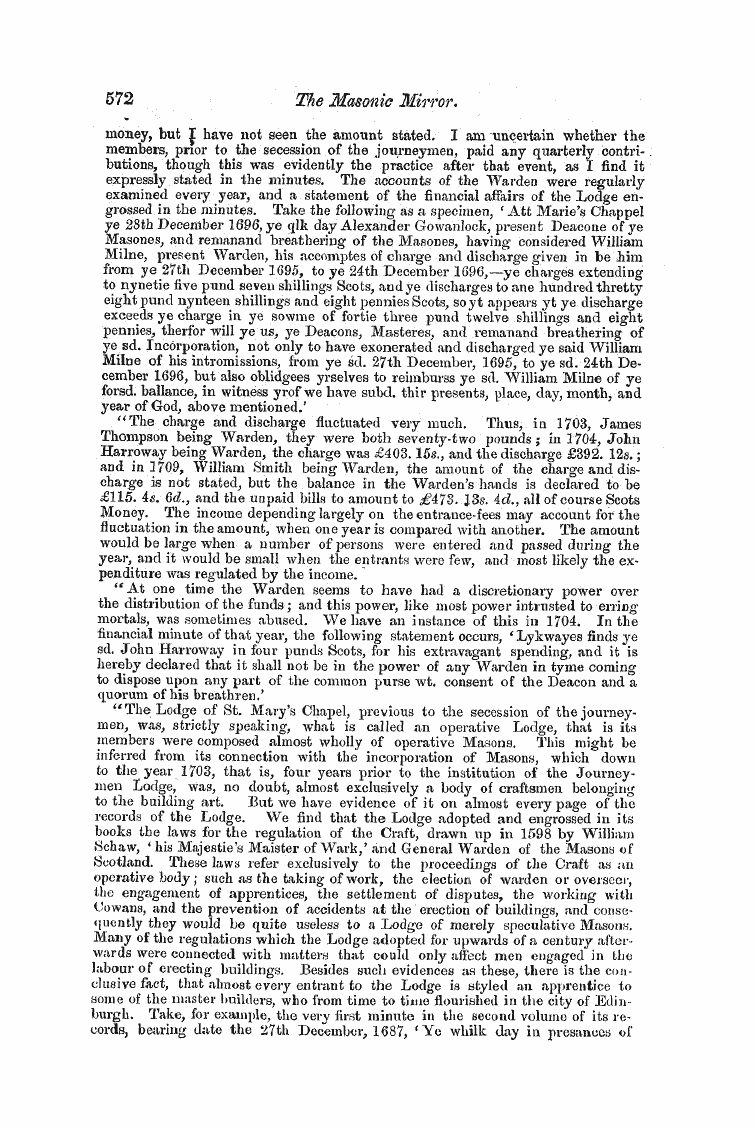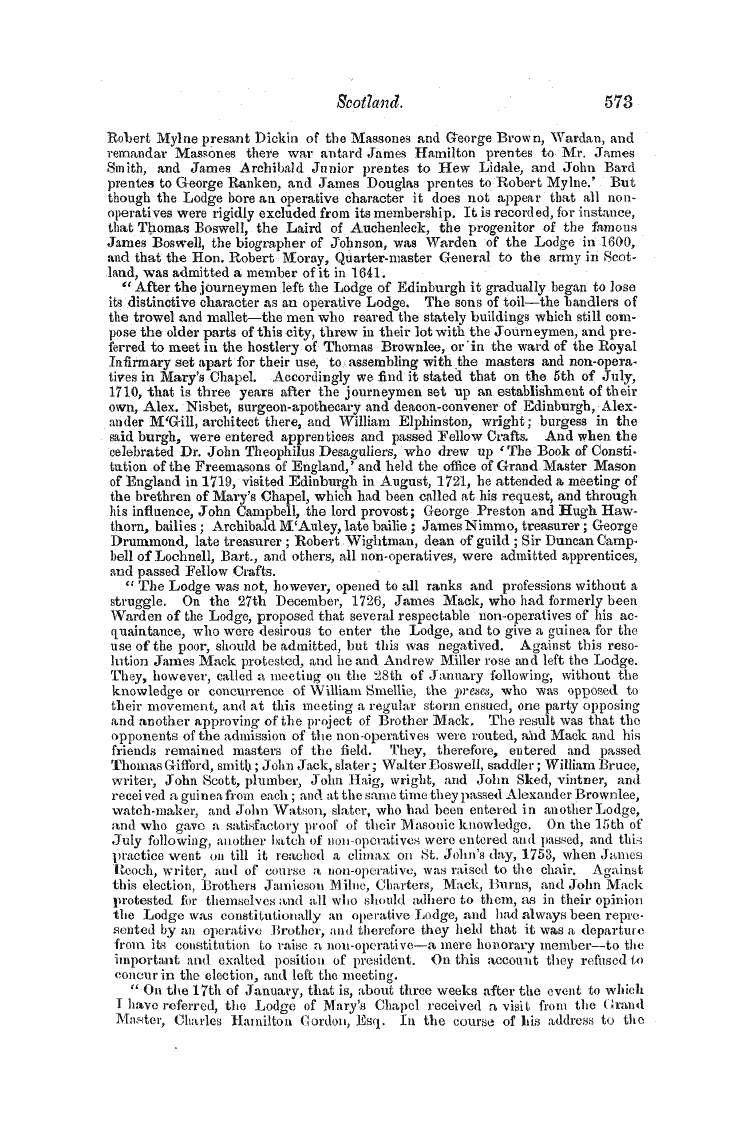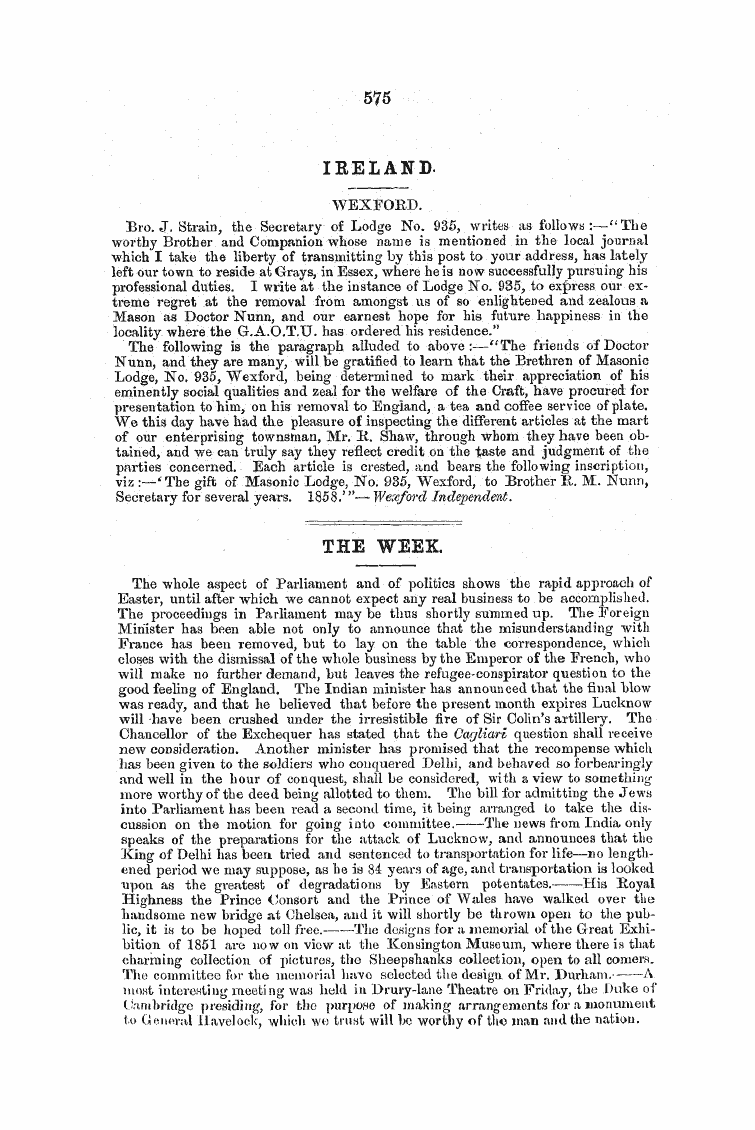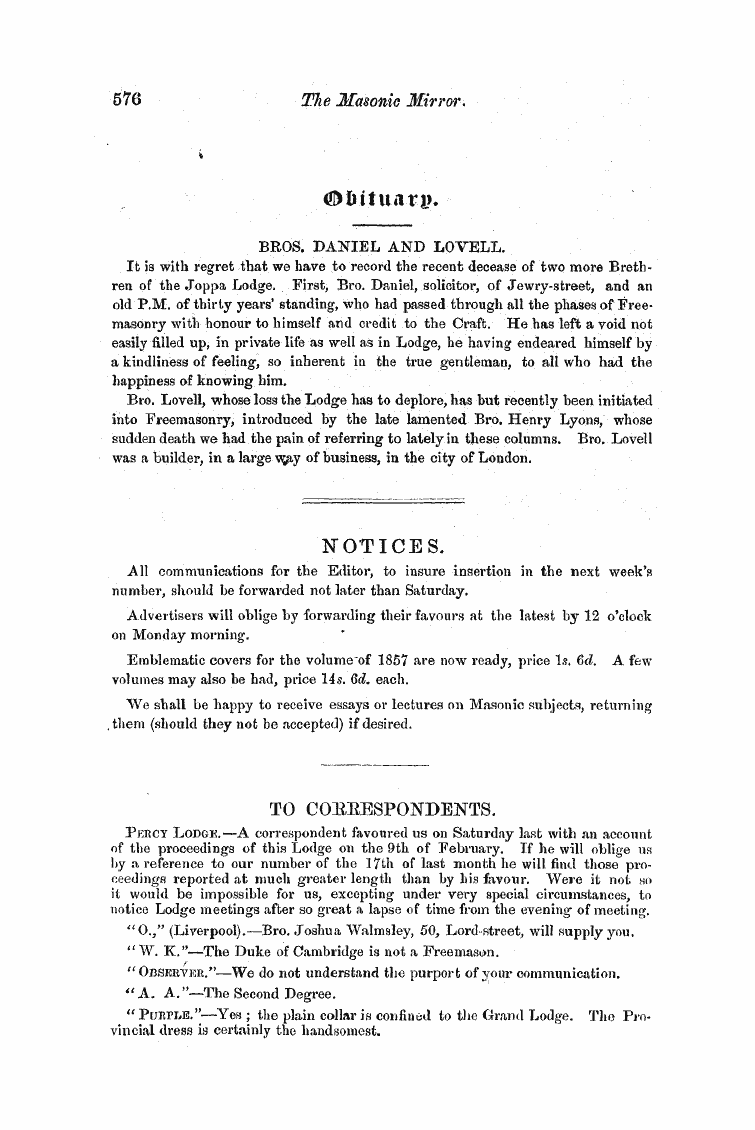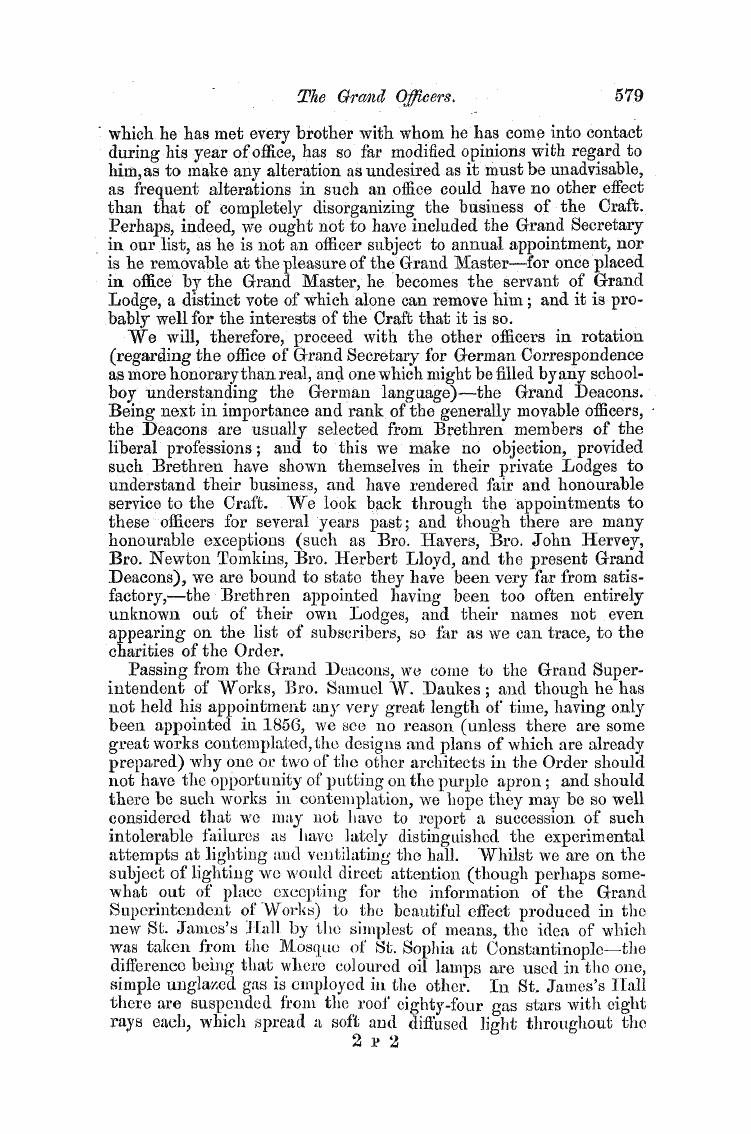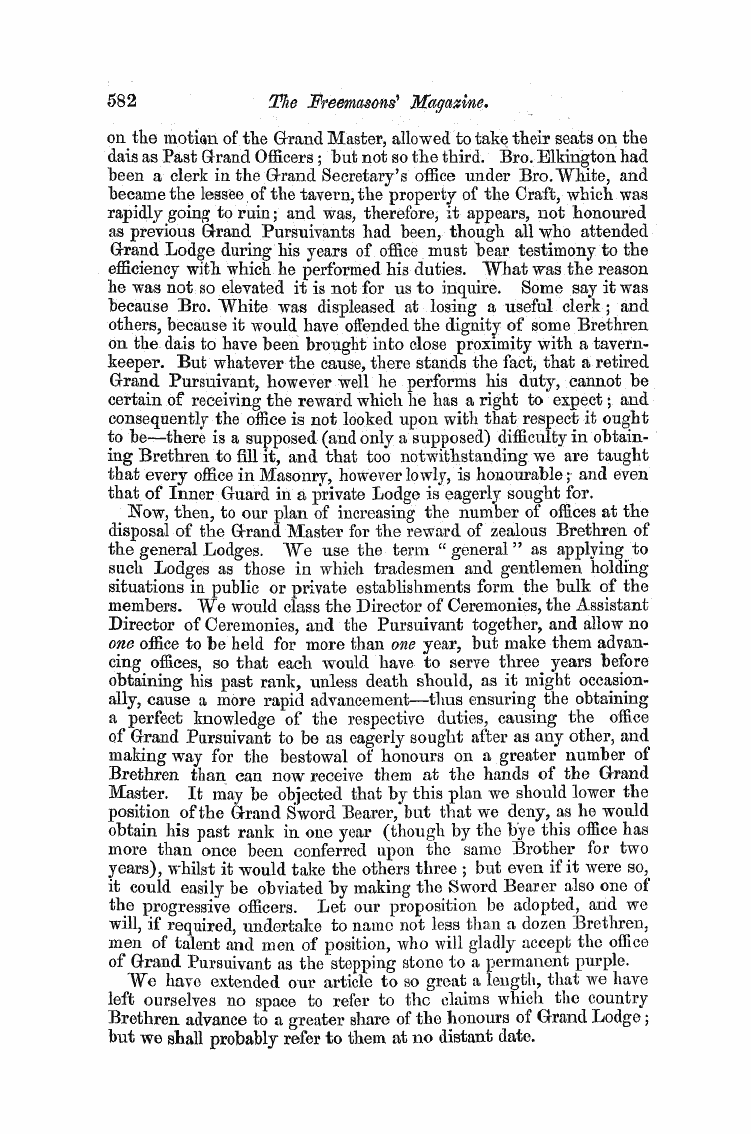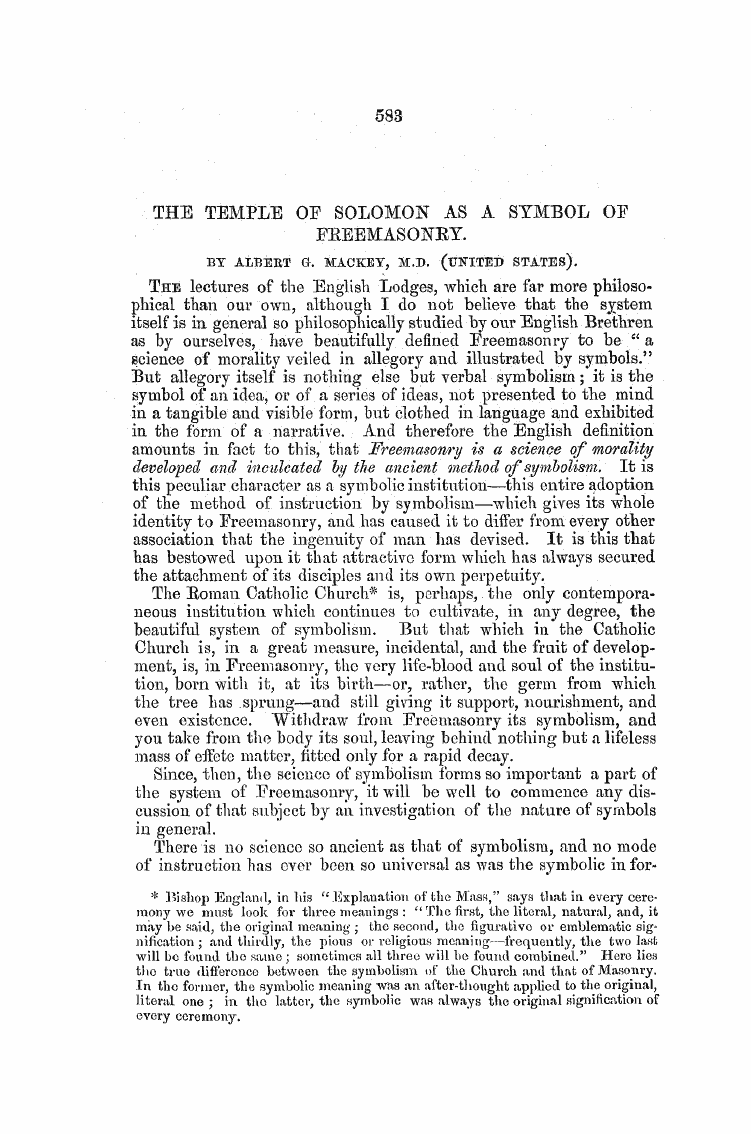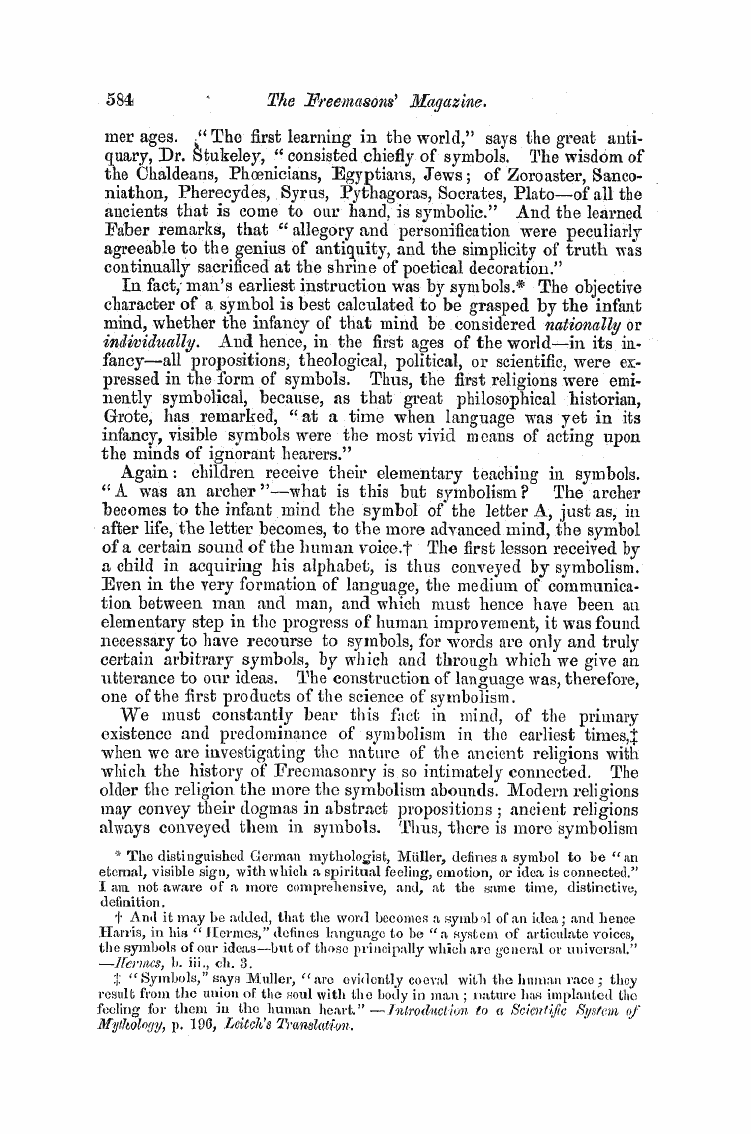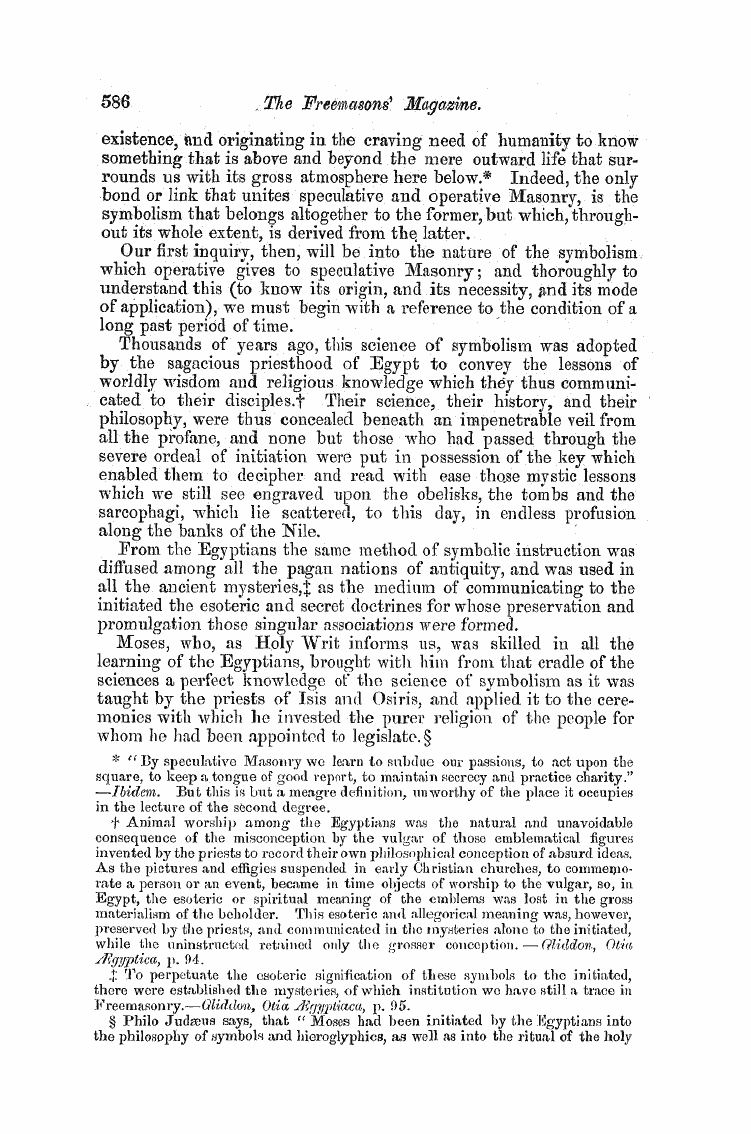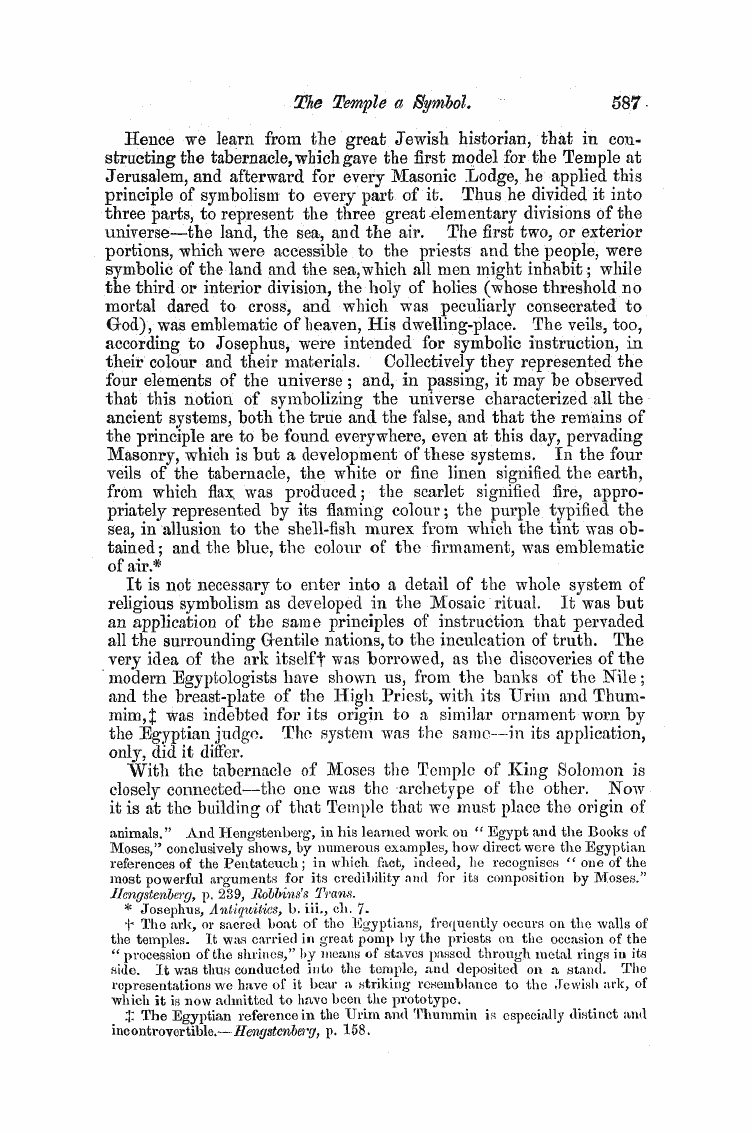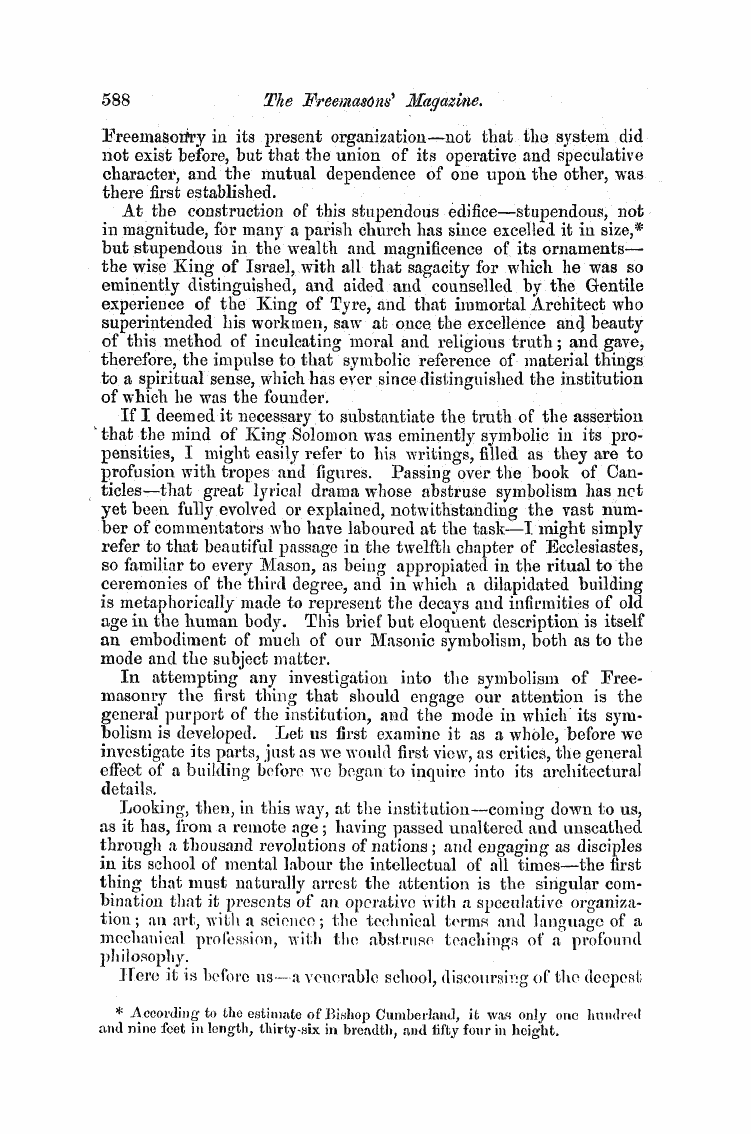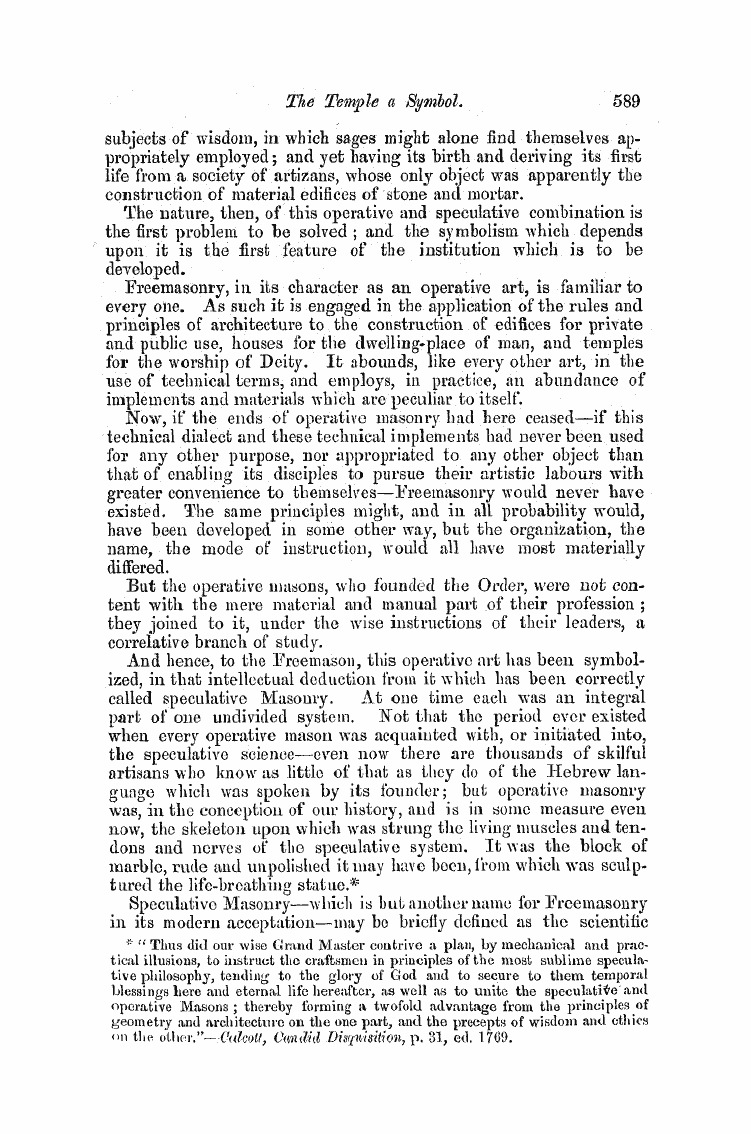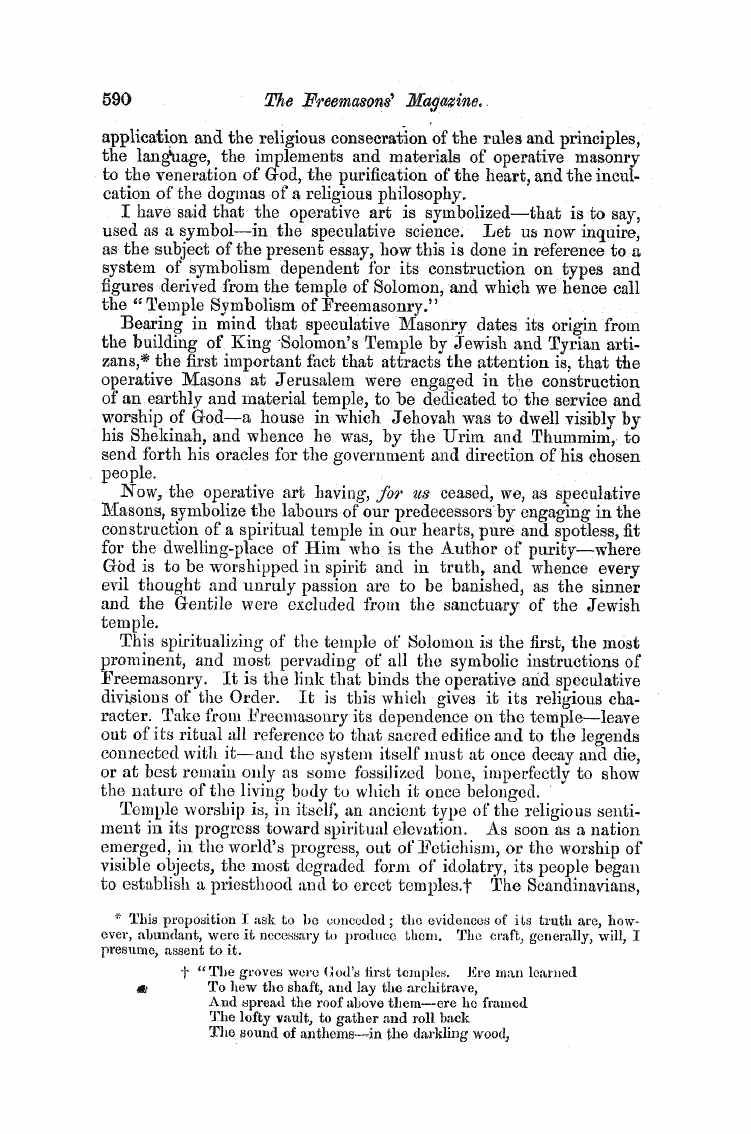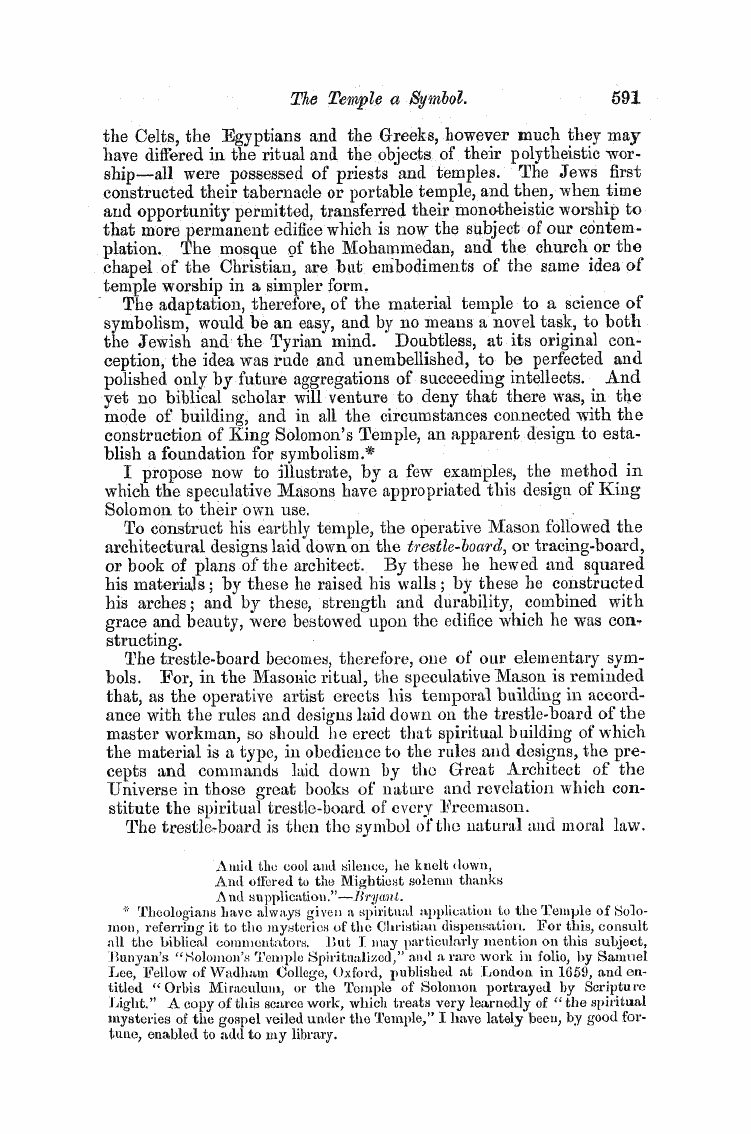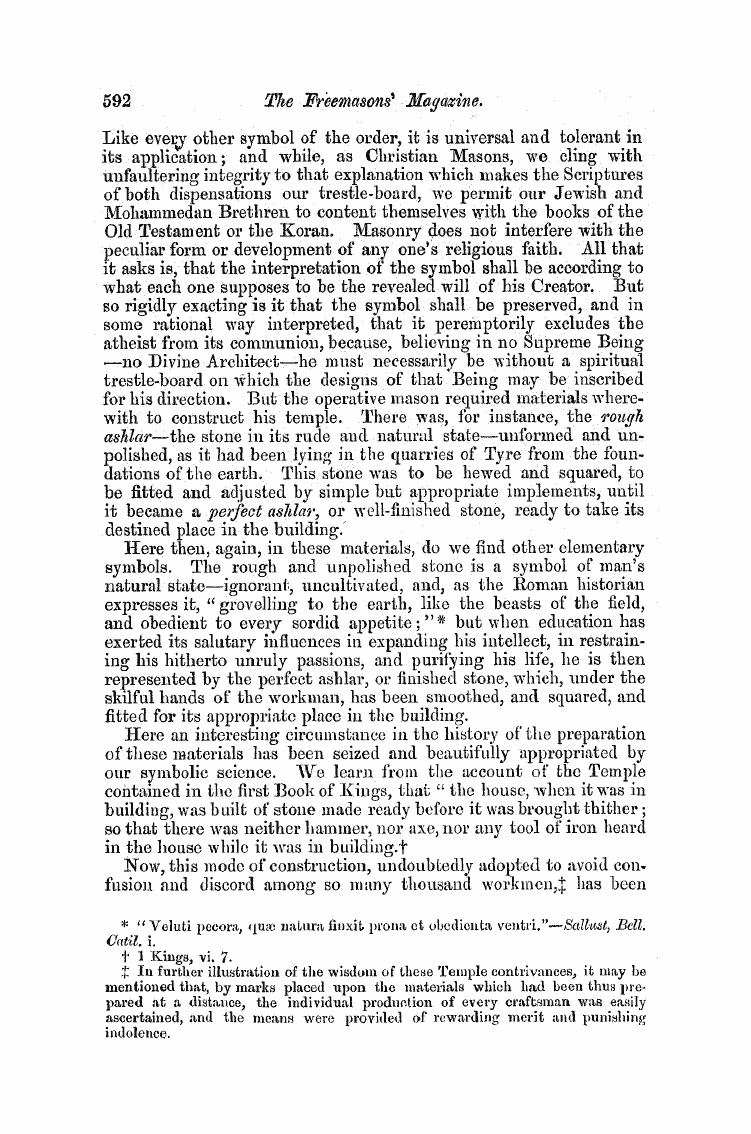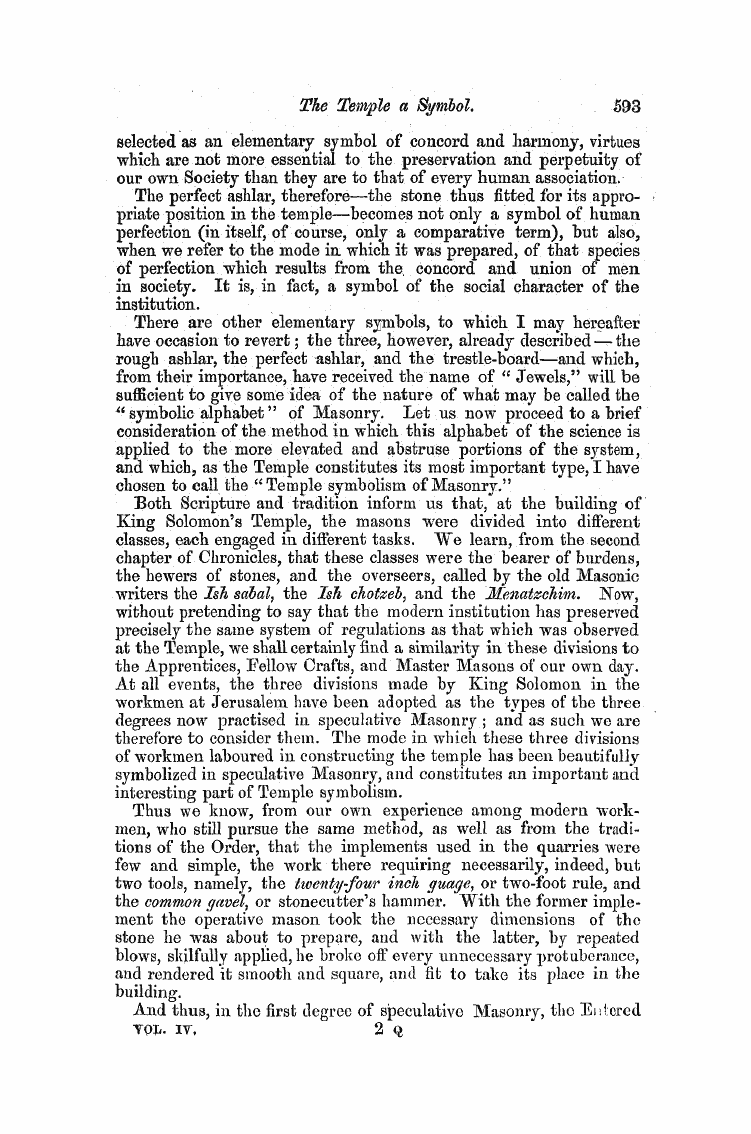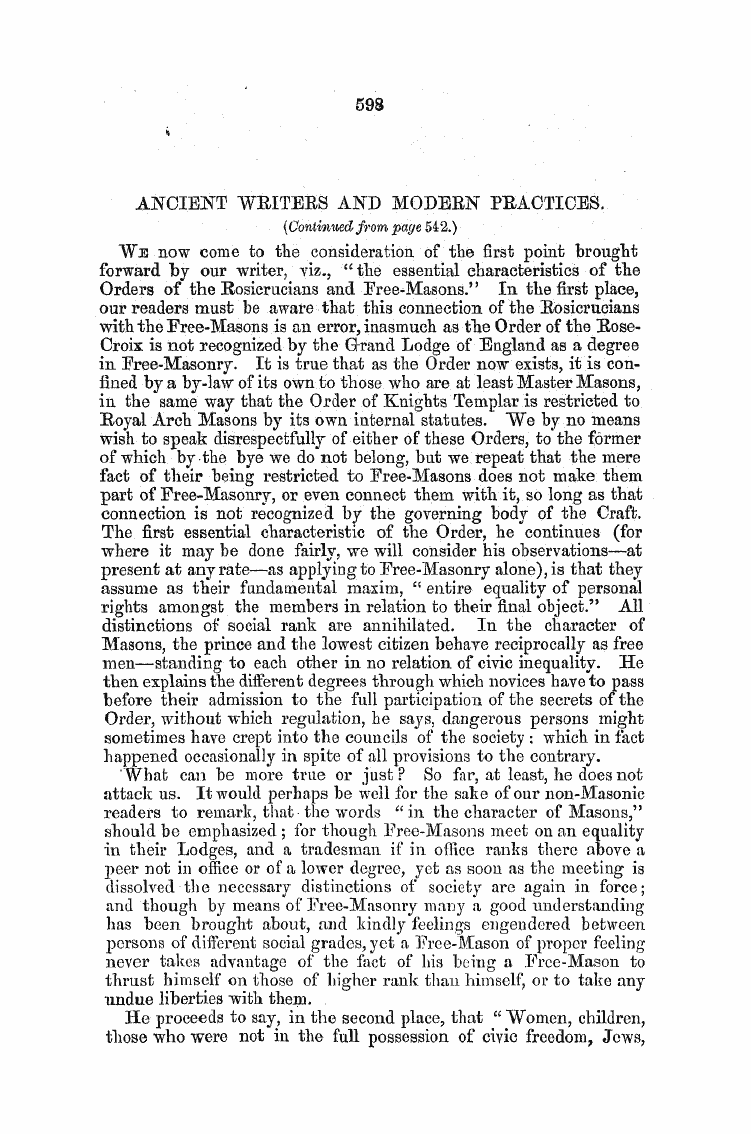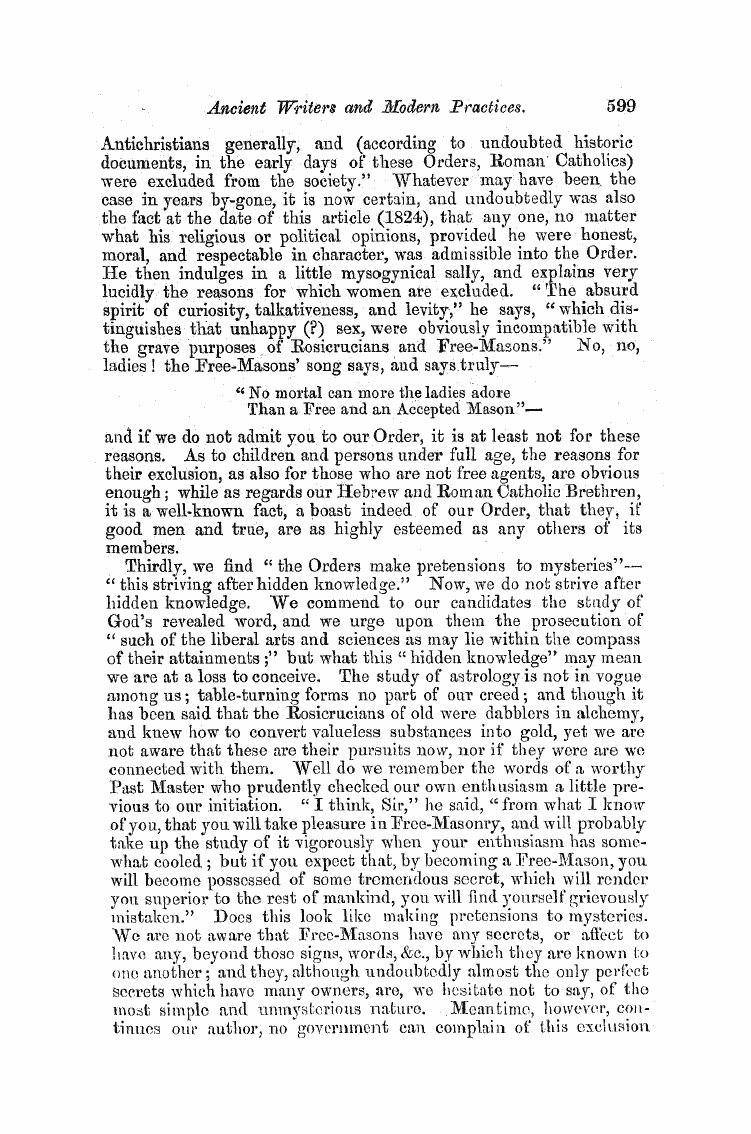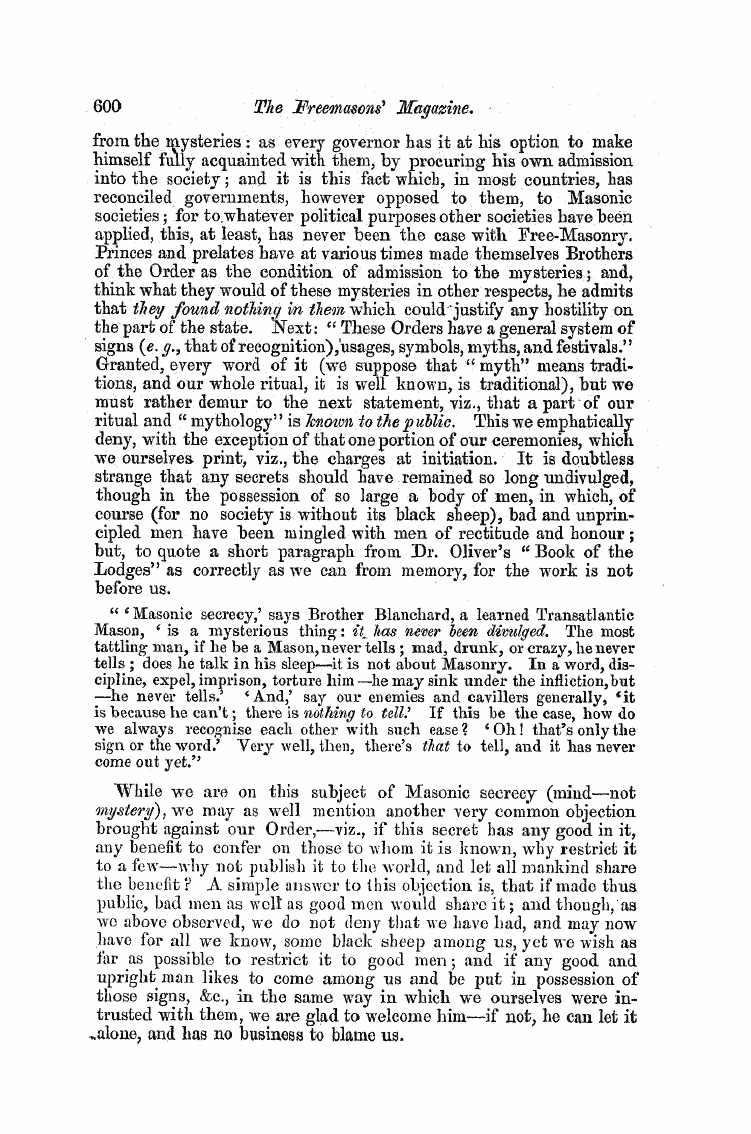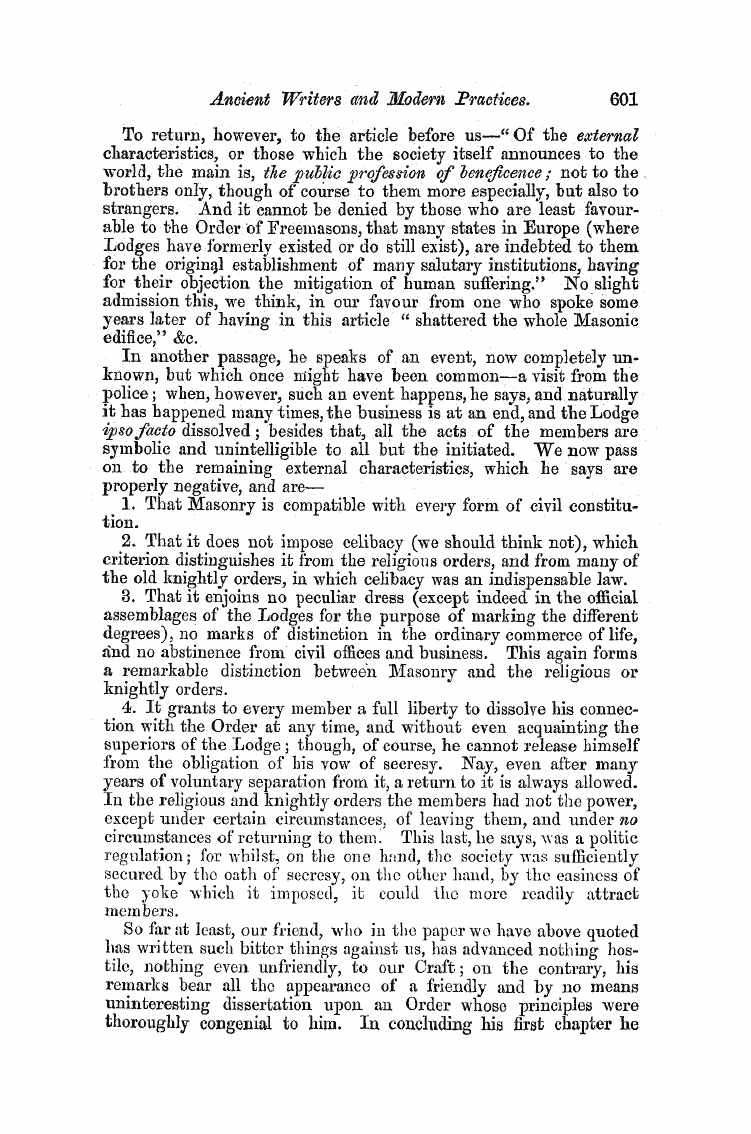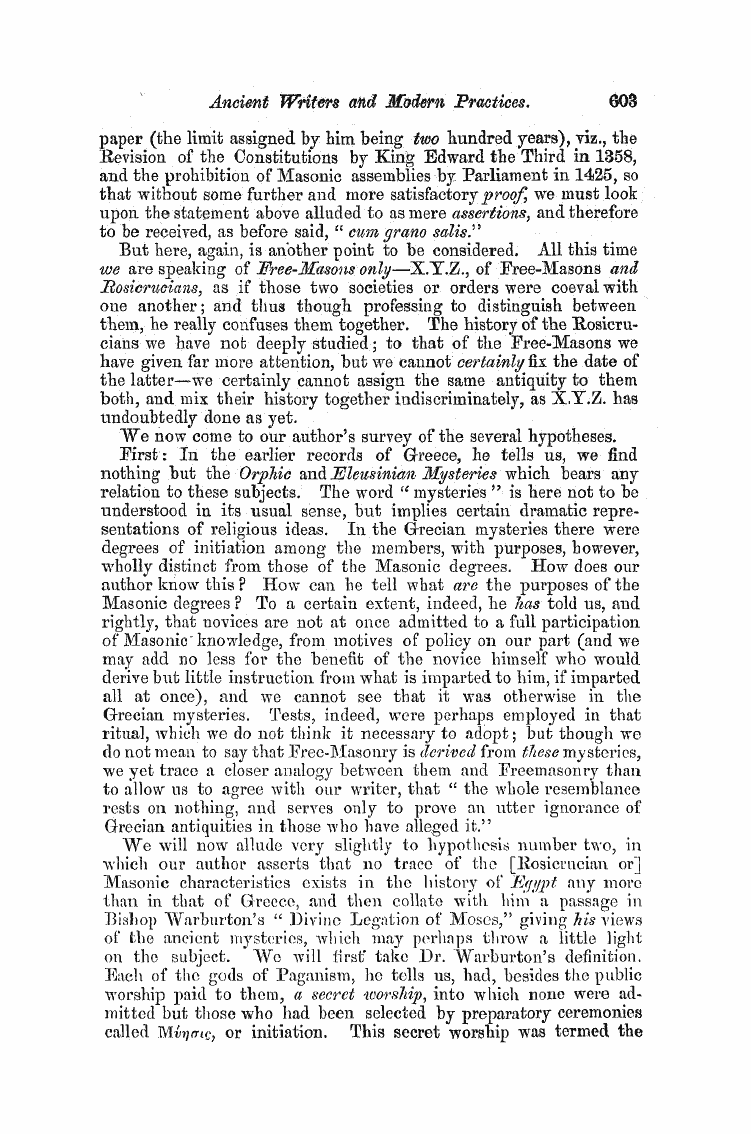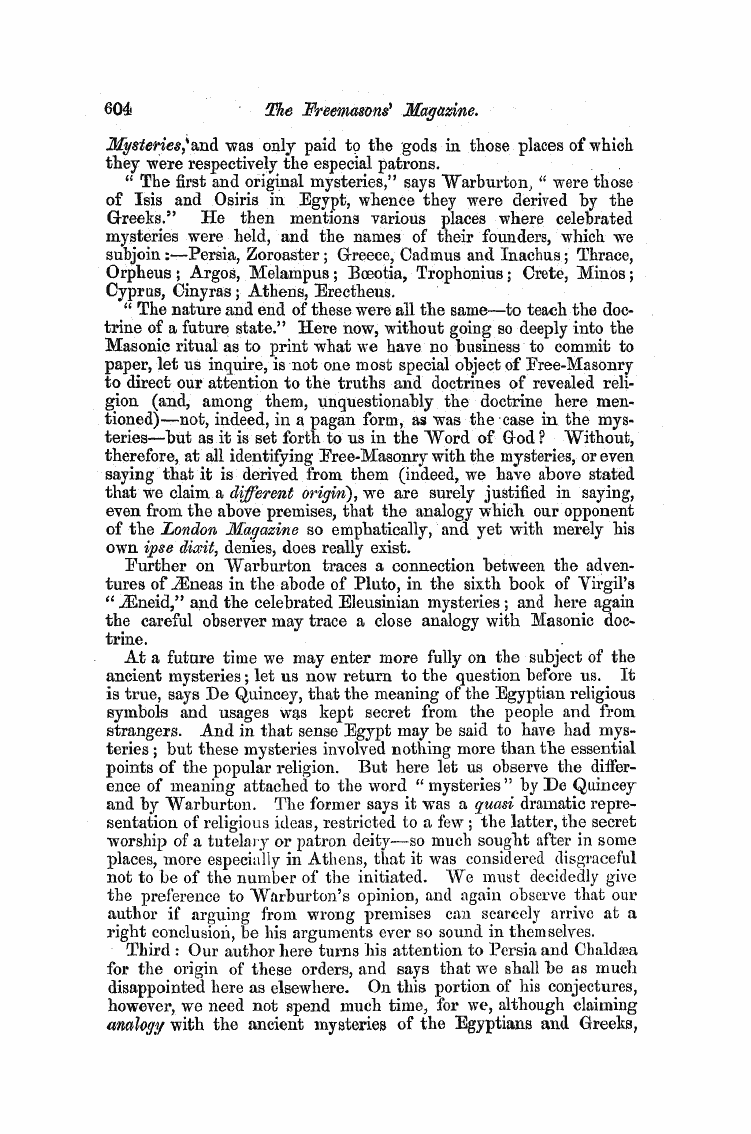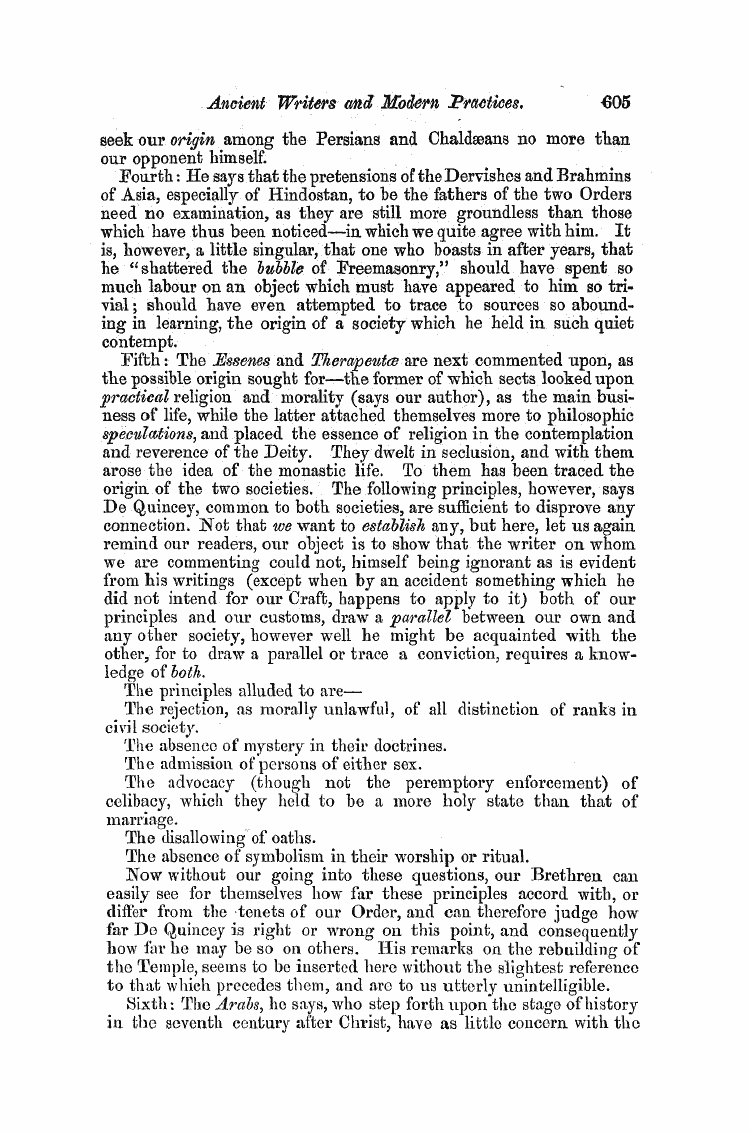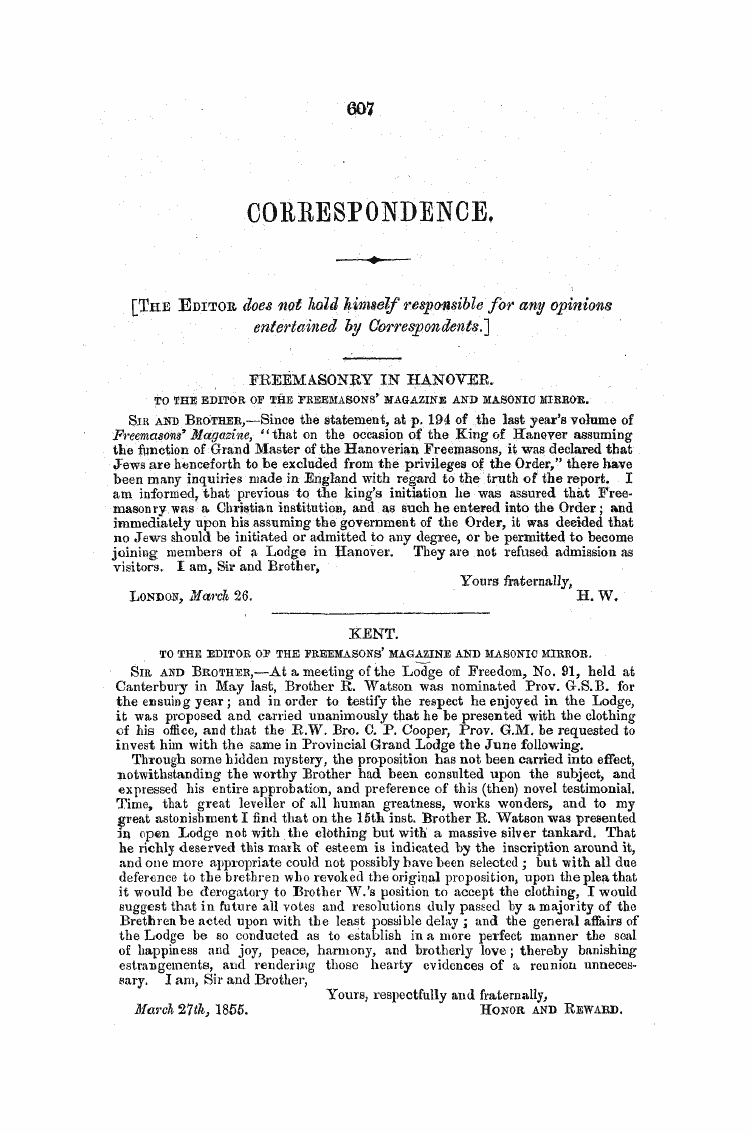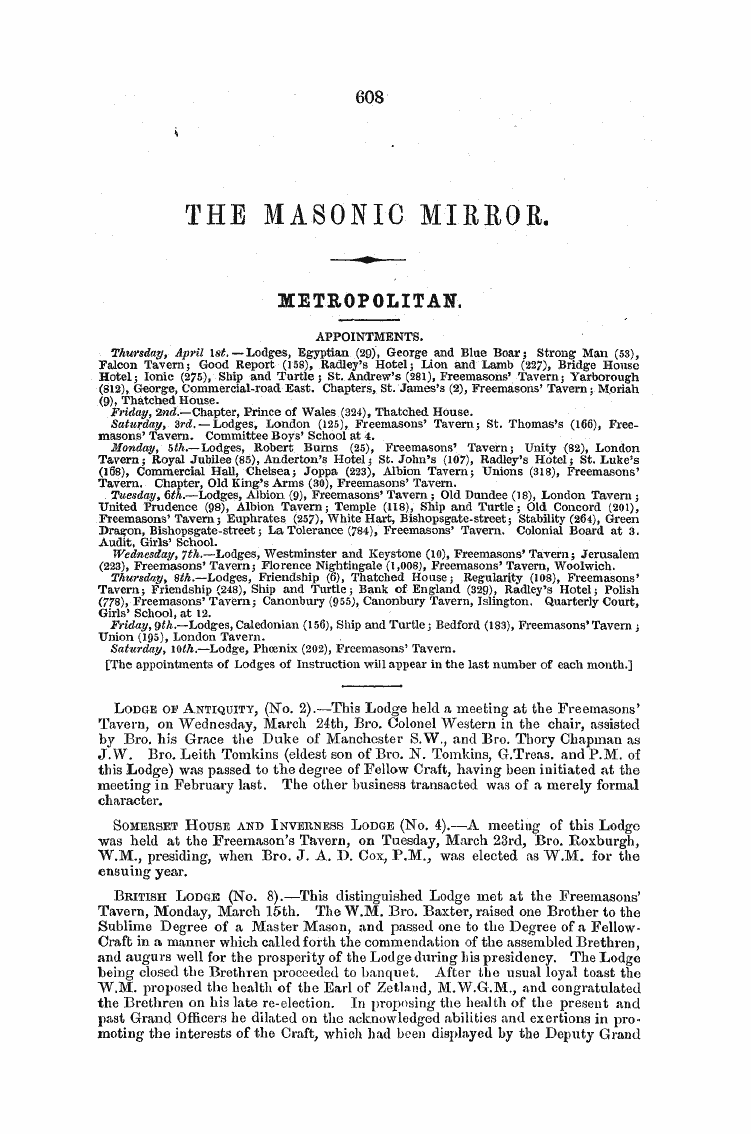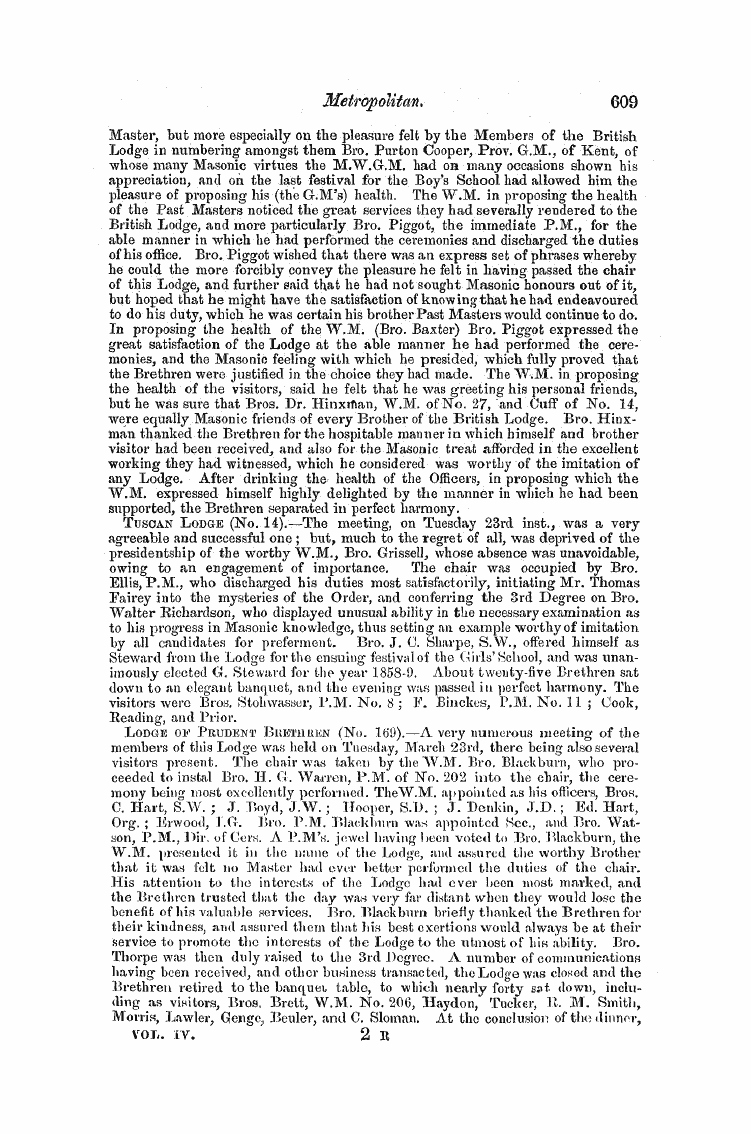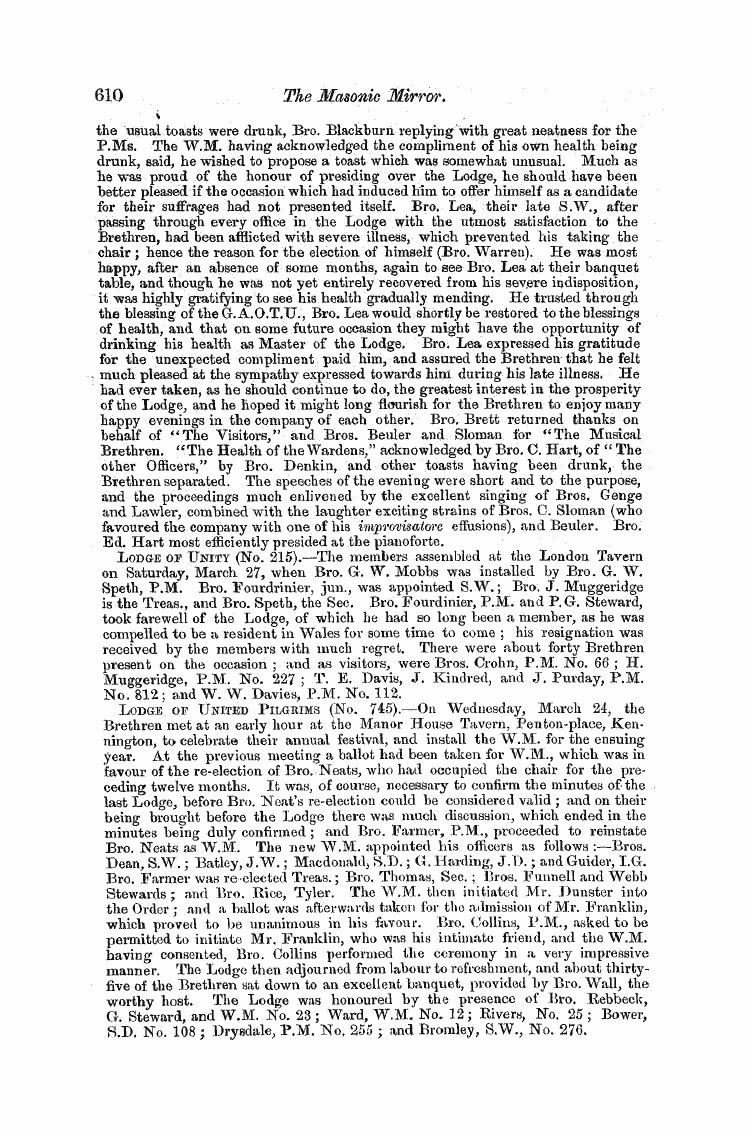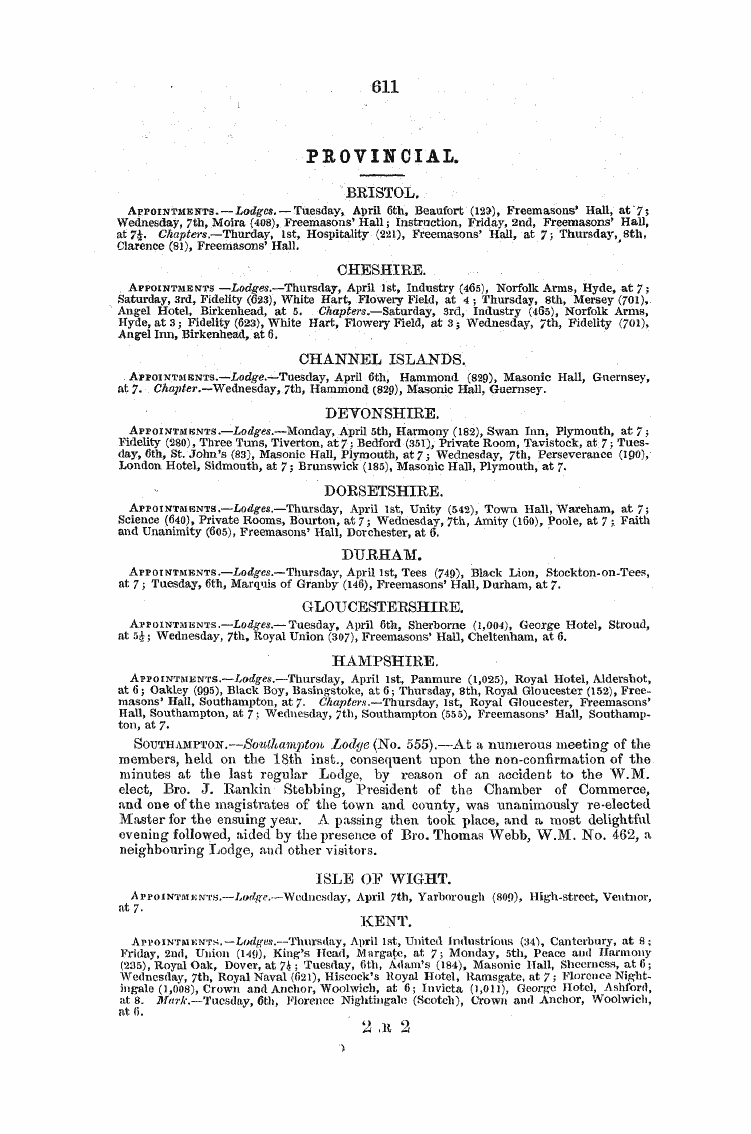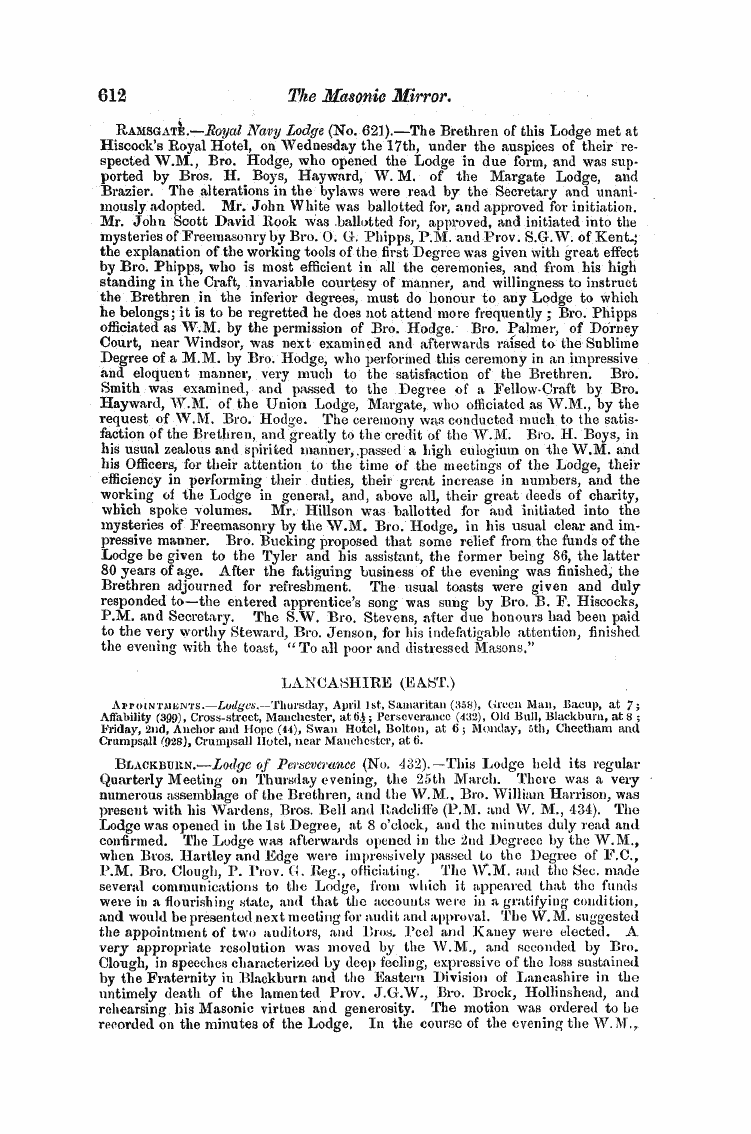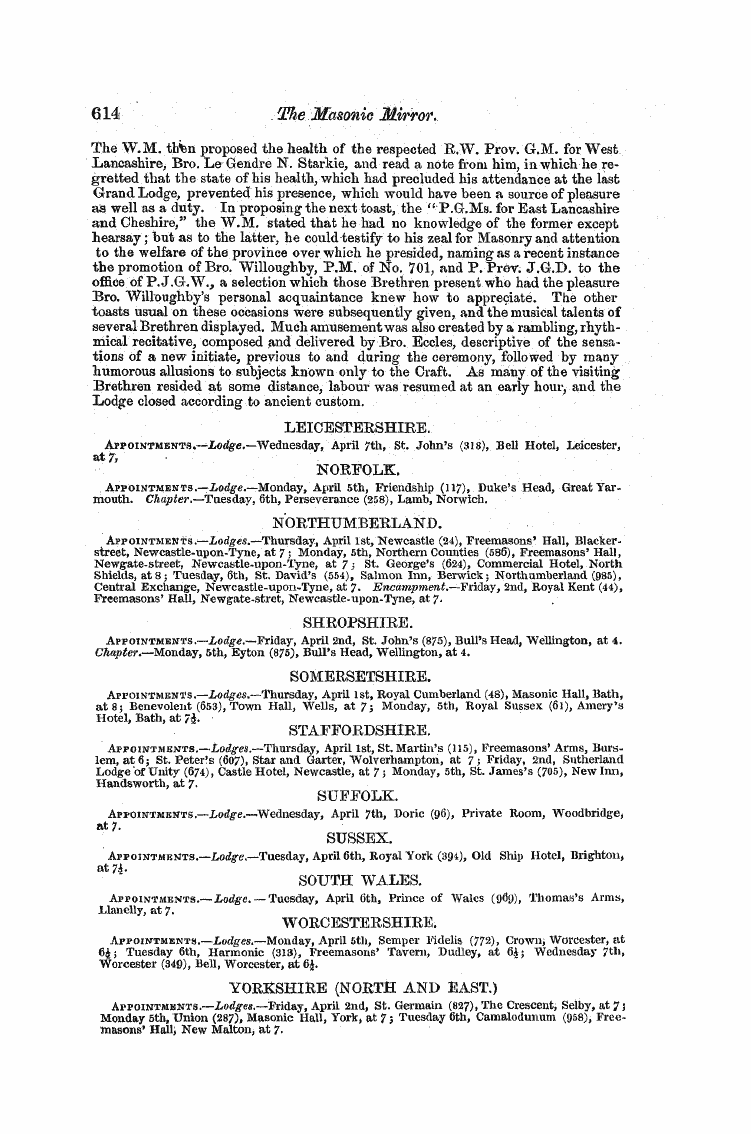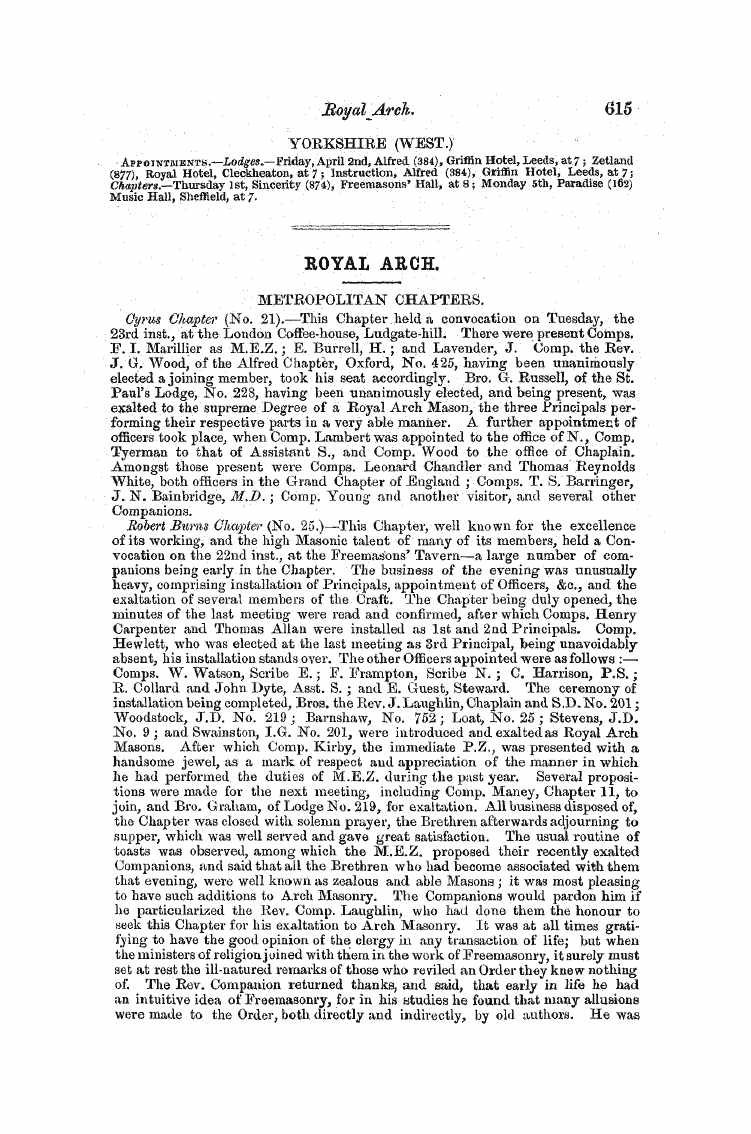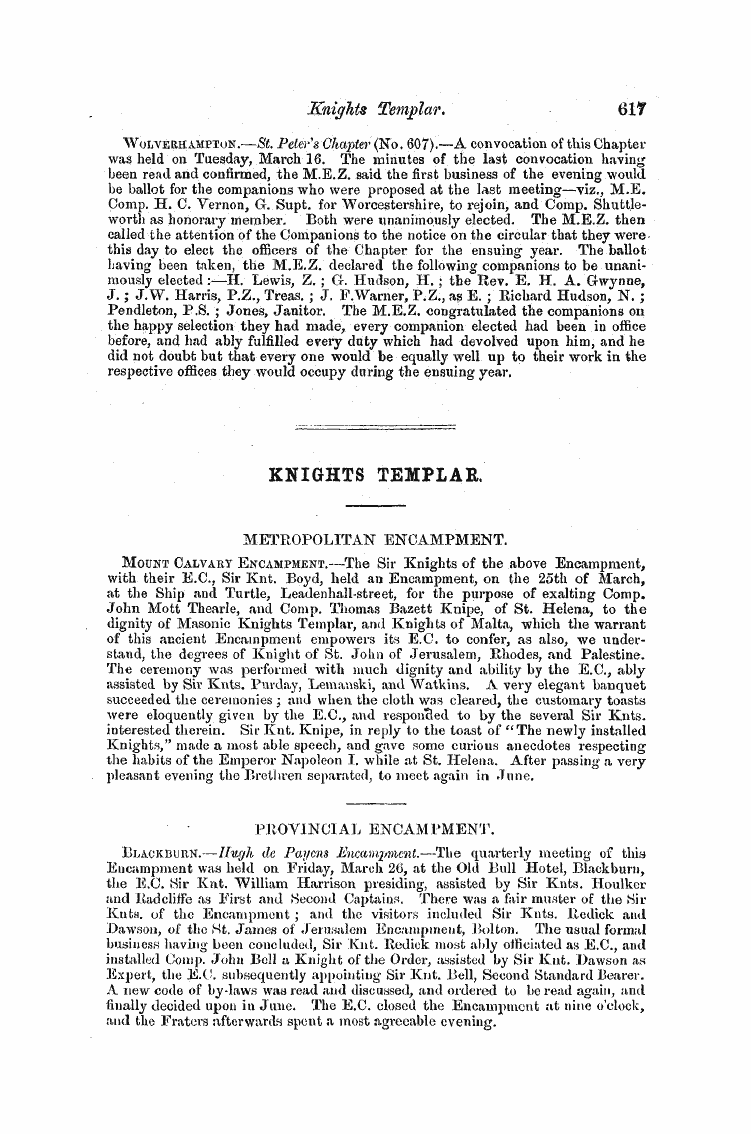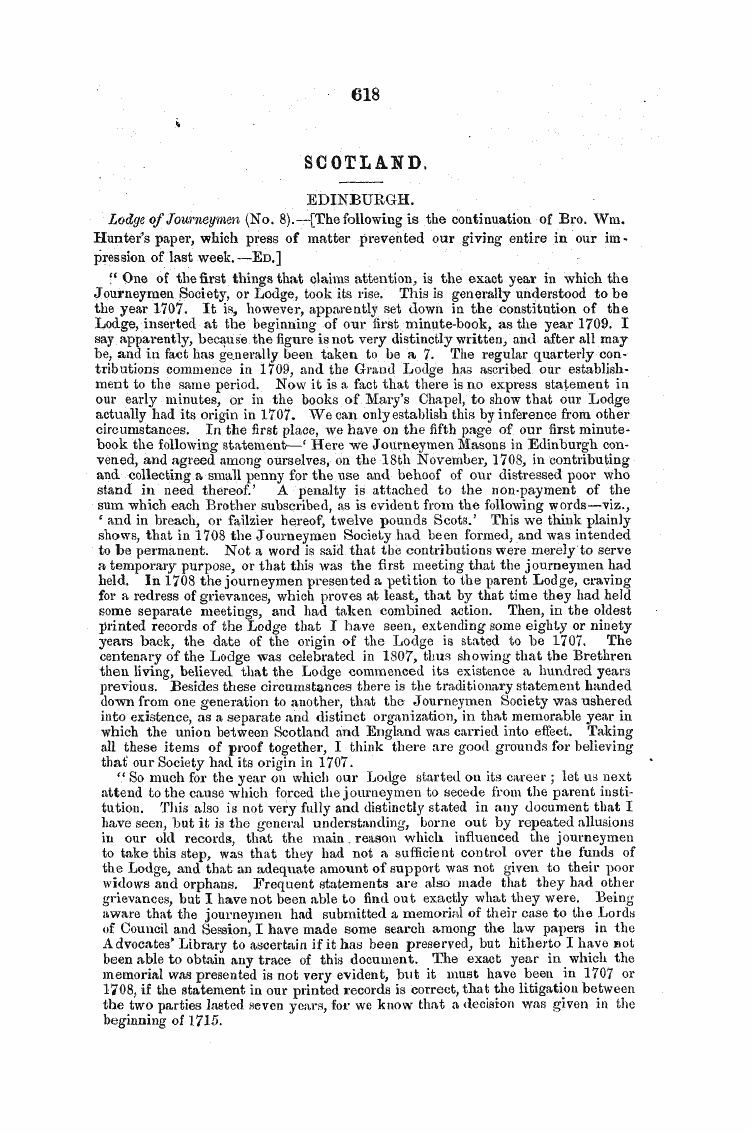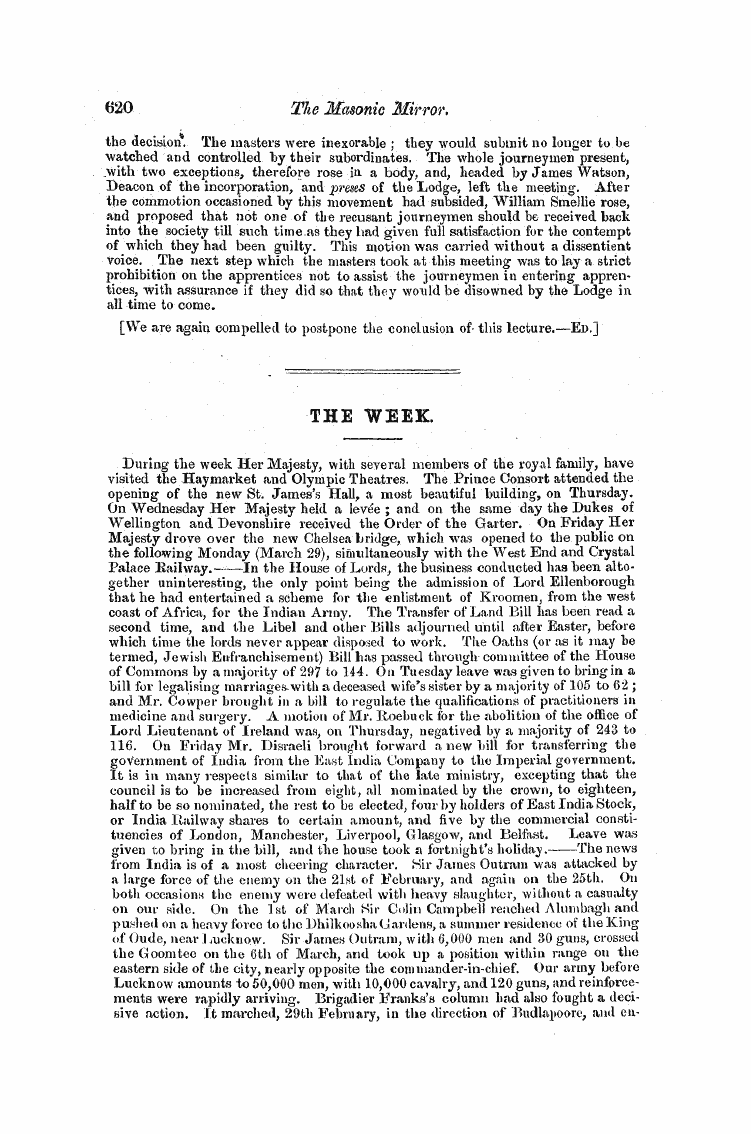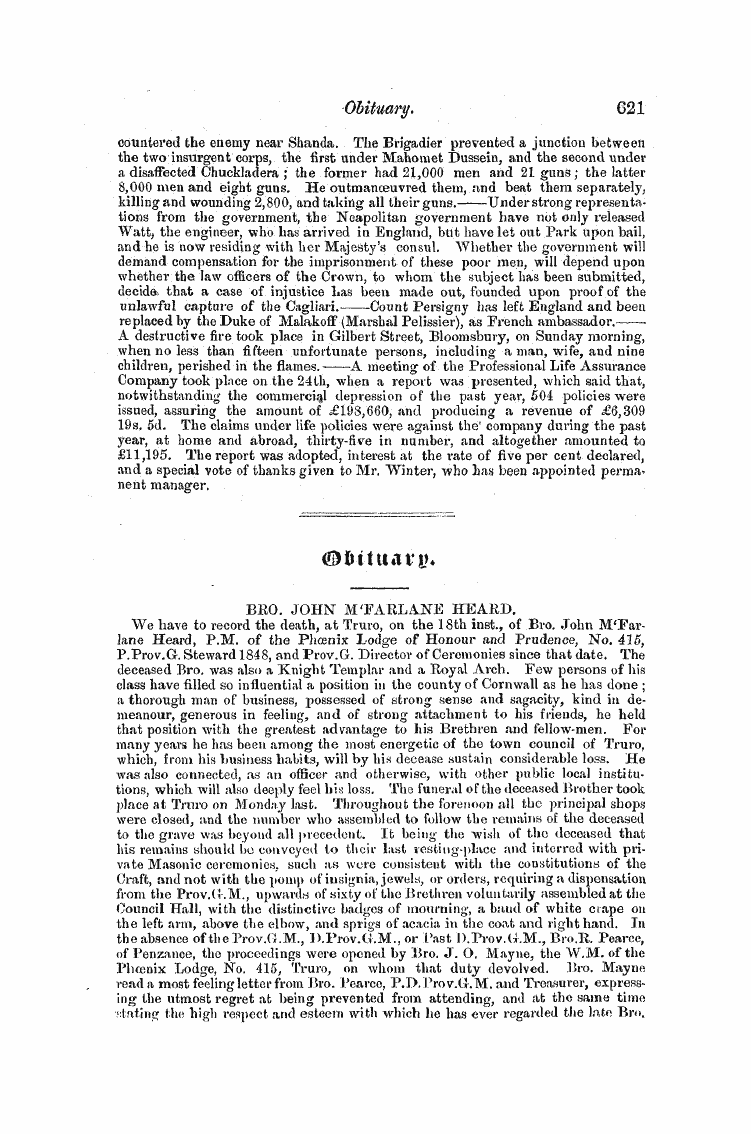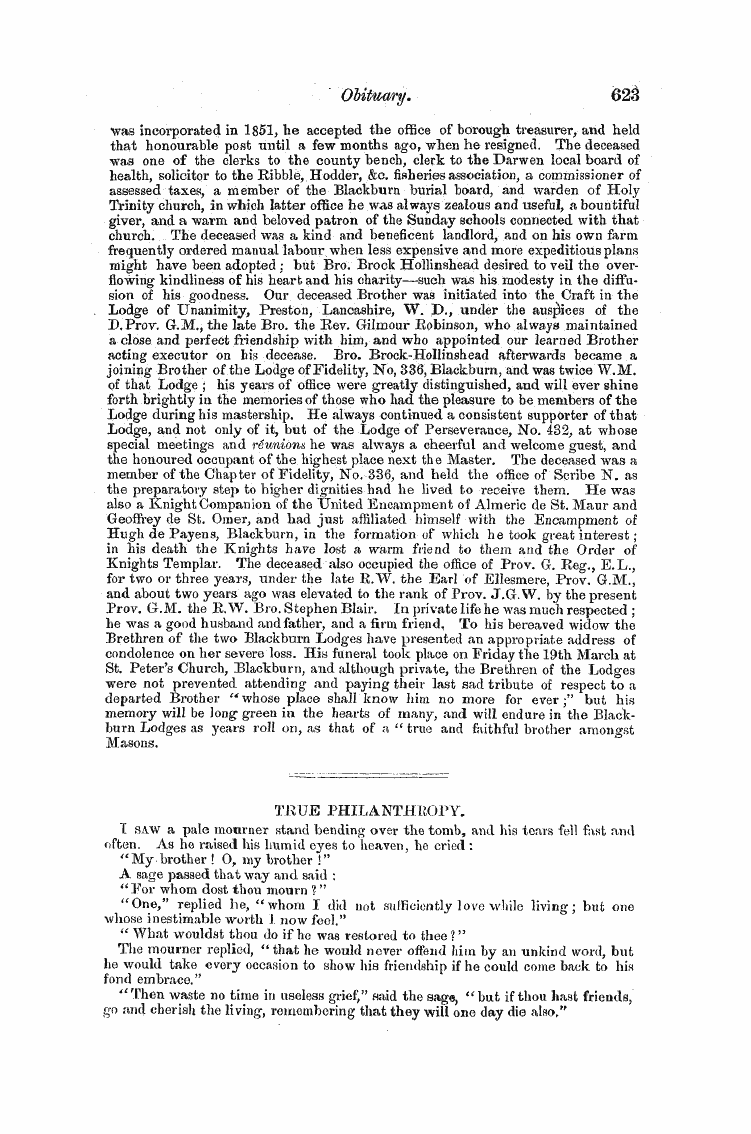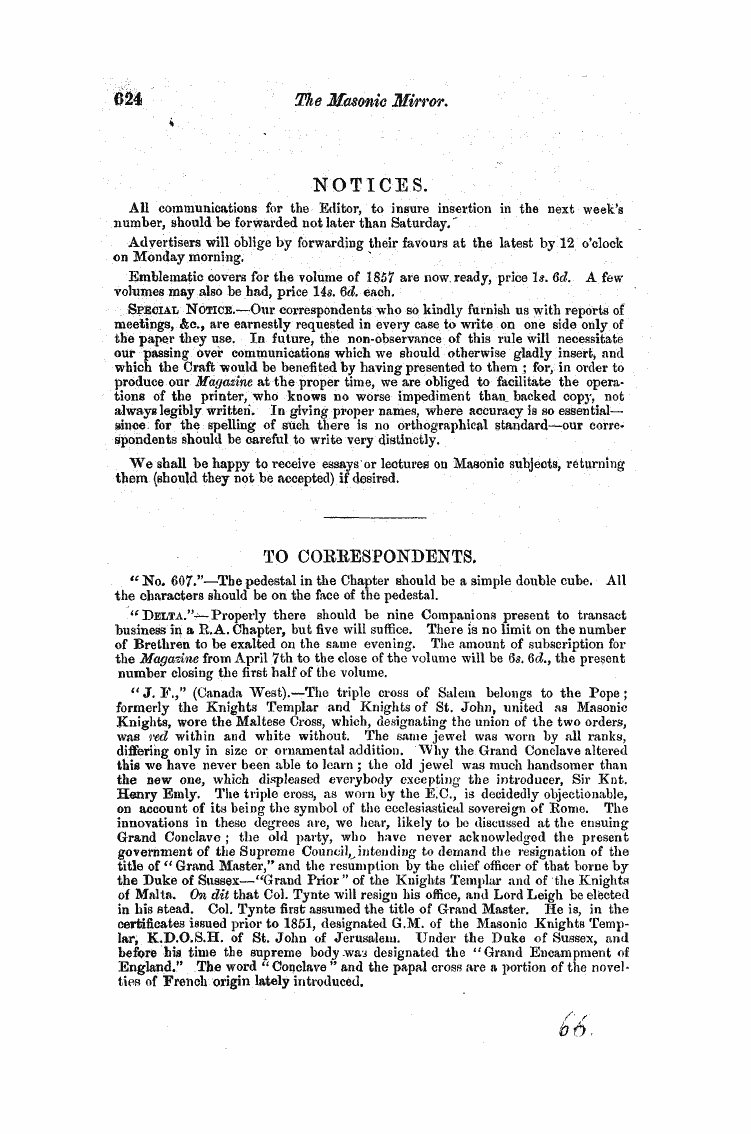Note: This text has been automatically extracted via Optical Character Recognition (OCR) software.
Scotland
money , but have not seen the amount stated . I am uncertain whether the members , prior J to the secession of the journeymen , paid any quarterly contributions , though this was evidently the practice after that event , as I find it expressly stated in the minutes . The accounts of the Warden were regularly examined every year , and a statement of the financial affairs of the Lodge engrossed in the minutes . Take the following as a specimen , Att Marie ' s Chappel
ye 28 th December 1696 , ye qlk day Alexander Gowanlock , present Deacone of ye Masones , and remanand breathering of the Masones , having considered William Milne , present Warden , his accomptes of charge and discharge given in be him from ye 27 th December 1695 , to ye 24 th December 1696 , —ye charges extending to nynetie five pund seven shillings Scots , and ye discharges to ane hundredthretty eight pund nynteen shillings and eight pennies Scots , so yt appears yt ye discharge
exceeds ye charge in ye sowme of fortie three pund twelve shillings and eight pennies , therfor will ye us , ye Deacons , Masteres , and remanand breathering of ye sd . Incorporation , not only to have exonerated and discharged ye said William Miltie of his intromissions , from ye sd . 27 th December , 1695 , to ye sd . 21 th December 1696 , but also oblidgees yrselves to rehnburss ye sd . William Milne of ye forsd . ballance , in witness yrof we have subd . thir presents , place , day , month , and year of God , above mentioned . '
" The charge and discharge fluctuated very much . Thus ^ in 1703 , James Thompson being Warden , they were both seventj-two pounds ; in 1704 , John Harroway being Warden , the charge was £ 403 . 15 s ., and the discharge £ 392 . 12 s . ; and in 1709 , William Smith being Warden , the amount of the charge and discharge is not stated , but the balance in the Warden ' s hands is declared to be
£ 115 . is . M ., and the unpaid bills to amount to i ? 473 . 13 s . id ., all of course Scots Money . The income depending largely on the entrance-fees may account for the fluctuation in the amount , when one year is compared with another . The amount would be large when a number of persons were entered and passed dining the yeaiyand it would be small when the entrants were few , and most likely the expenditure was regulated by the income .
'At one time the Warden seems to have had a discretionary power over the distribution of the funds ; and this power , like most power intrusted to erring mortals , was sometimes abused . We have an instance of this in 1704 . In the financial minute of that year , the following statement occurs , * Lykwayes finds ye sd . John Harroway in four punds Scots , for his extravagant spending , and it is hereby declared that it shall not be in the power of any Warden in tyme coming to dispose upon any part of the common purse wt . consent of the Deacon and a quorum of his breathren . '
"The Lodge of St . Mary ' s Chapel , previous to the secession of the journeymen , was , strictly speaking , what is called an operative Lodge , that is its members were composed almost wholly of operative Masons . This might be inferred from its connection with the incorporation of Masons , which down to the year 1703 , that is , four years prior to the institution of the Journeymen Lodge , was , no doubt , almost exclusively a body of craftsmen belonging to the building art . But we have evidence of it on almost every page of the
records of the Lodge . We find that the Lodge adopted and engrossed in its books the laws for the regulation of the Craft , drawn up in 1598 by William Schaw , his Majestie ' s Maister of Wark / and General Warden of the Masons of Scotland . These laws refer exclusively to the proceedings of the Craft as an operative body , ' such as the taking of work , the election of warden or overseer , the engagement of apprentices , the settlement of disputes , the working with Cowans , and the prevention of accidents at the erection of buildings , and
consequently they would be quite useless to a Lodge of merely speculative Masons . Many of the regulations which the Lodge adopted for upwards of a century afterwards were connected with matters that could only affect men engaged in the labour of erecting buildings . Besides such evidences as these , there is the conclusive fact , that almost every entrant to the Lodge is styled an apprentice to some of the master builders , who from time to time flourished in the city of Edinburgh . Take , for example , the very first minute in the second volume of its records , bearing date the 27 th December , 1687 , ' Ye whilk day in presances of
Note: This text has been automatically extracted via Optical Character Recognition (OCR) software.
Scotland
money , but have not seen the amount stated . I am uncertain whether the members , prior J to the secession of the journeymen , paid any quarterly contributions , though this was evidently the practice after that event , as I find it expressly stated in the minutes . The accounts of the Warden were regularly examined every year , and a statement of the financial affairs of the Lodge engrossed in the minutes . Take the following as a specimen , Att Marie ' s Chappel
ye 28 th December 1696 , ye qlk day Alexander Gowanlock , present Deacone of ye Masones , and remanand breathering of the Masones , having considered William Milne , present Warden , his accomptes of charge and discharge given in be him from ye 27 th December 1695 , to ye 24 th December 1696 , —ye charges extending to nynetie five pund seven shillings Scots , and ye discharges to ane hundredthretty eight pund nynteen shillings and eight pennies Scots , so yt appears yt ye discharge
exceeds ye charge in ye sowme of fortie three pund twelve shillings and eight pennies , therfor will ye us , ye Deacons , Masteres , and remanand breathering of ye sd . Incorporation , not only to have exonerated and discharged ye said William Miltie of his intromissions , from ye sd . 27 th December , 1695 , to ye sd . 21 th December 1696 , but also oblidgees yrselves to rehnburss ye sd . William Milne of ye forsd . ballance , in witness yrof we have subd . thir presents , place , day , month , and year of God , above mentioned . '
" The charge and discharge fluctuated very much . Thus ^ in 1703 , James Thompson being Warden , they were both seventj-two pounds ; in 1704 , John Harroway being Warden , the charge was £ 403 . 15 s ., and the discharge £ 392 . 12 s . ; and in 1709 , William Smith being Warden , the amount of the charge and discharge is not stated , but the balance in the Warden ' s hands is declared to be
£ 115 . is . M ., and the unpaid bills to amount to i ? 473 . 13 s . id ., all of course Scots Money . The income depending largely on the entrance-fees may account for the fluctuation in the amount , when one year is compared with another . The amount would be large when a number of persons were entered and passed dining the yeaiyand it would be small when the entrants were few , and most likely the expenditure was regulated by the income .
'At one time the Warden seems to have had a discretionary power over the distribution of the funds ; and this power , like most power intrusted to erring mortals , was sometimes abused . We have an instance of this in 1704 . In the financial minute of that year , the following statement occurs , * Lykwayes finds ye sd . John Harroway in four punds Scots , for his extravagant spending , and it is hereby declared that it shall not be in the power of any Warden in tyme coming to dispose upon any part of the common purse wt . consent of the Deacon and a quorum of his breathren . '
"The Lodge of St . Mary ' s Chapel , previous to the secession of the journeymen , was , strictly speaking , what is called an operative Lodge , that is its members were composed almost wholly of operative Masons . This might be inferred from its connection with the incorporation of Masons , which down to the year 1703 , that is , four years prior to the institution of the Journeymen Lodge , was , no doubt , almost exclusively a body of craftsmen belonging to the building art . But we have evidence of it on almost every page of the
records of the Lodge . We find that the Lodge adopted and engrossed in its books the laws for the regulation of the Craft , drawn up in 1598 by William Schaw , his Majestie ' s Maister of Wark / and General Warden of the Masons of Scotland . These laws refer exclusively to the proceedings of the Craft as an operative body , ' such as the taking of work , the election of warden or overseer , the engagement of apprentices , the settlement of disputes , the working with Cowans , and the prevention of accidents at the erection of buildings , and
consequently they would be quite useless to a Lodge of merely speculative Masons . Many of the regulations which the Lodge adopted for upwards of a century afterwards were connected with matters that could only affect men engaged in the labour of erecting buildings . Besides such evidences as these , there is the conclusive fact , that almost every entrant to the Lodge is styled an apprentice to some of the master builders , who from time to time flourished in the city of Edinburgh . Take , for example , the very first minute in the second volume of its records , bearing date the 27 th December , 1687 , ' Ye whilk day in presances of




























































